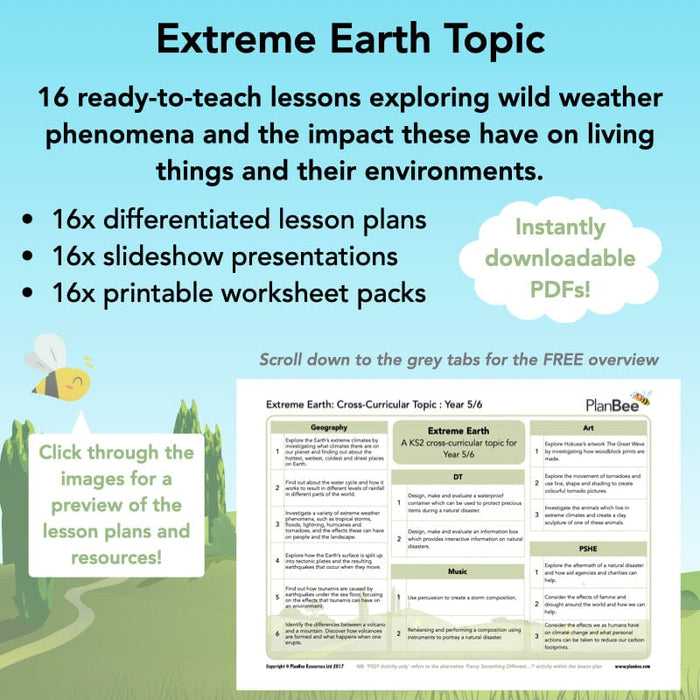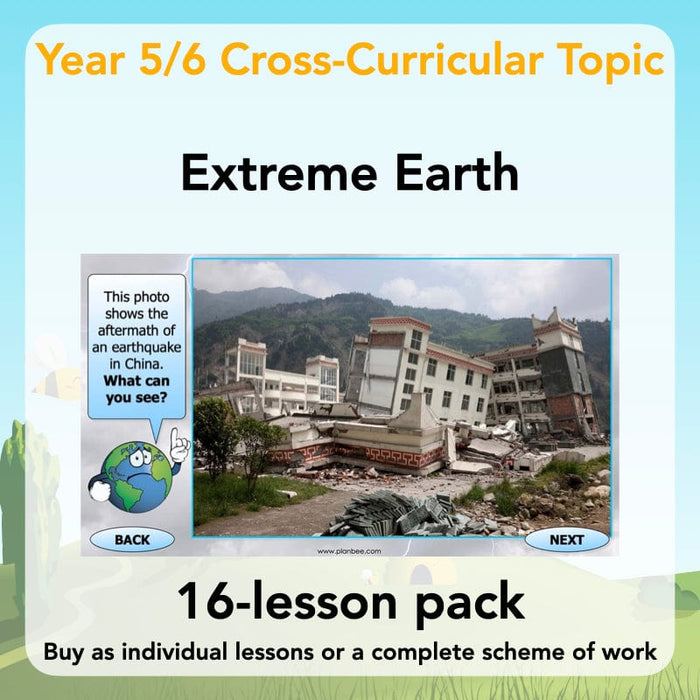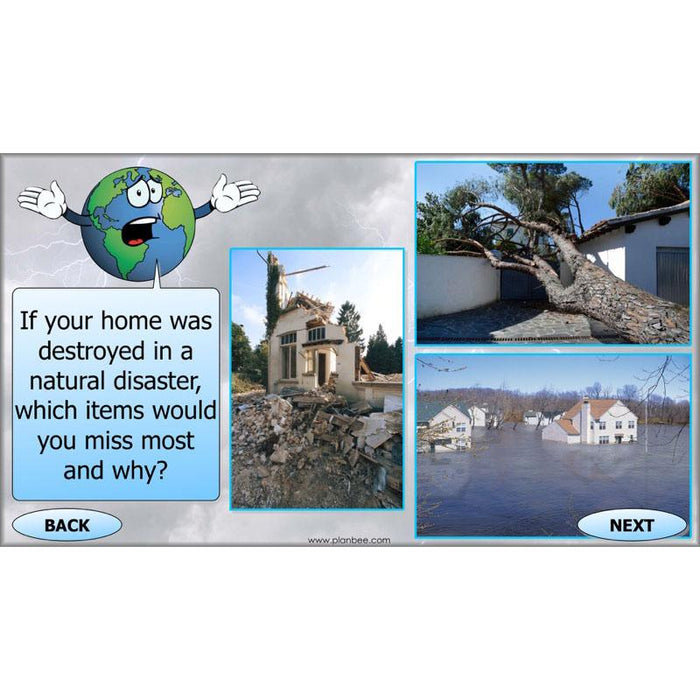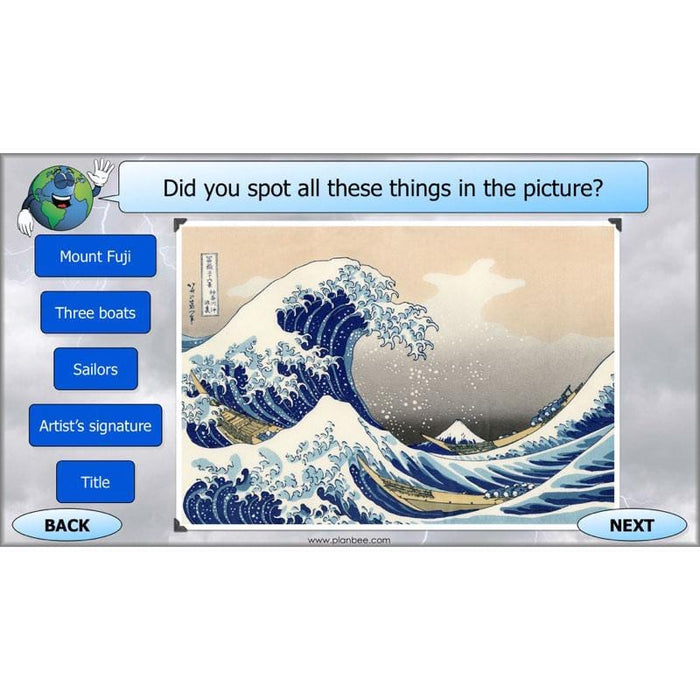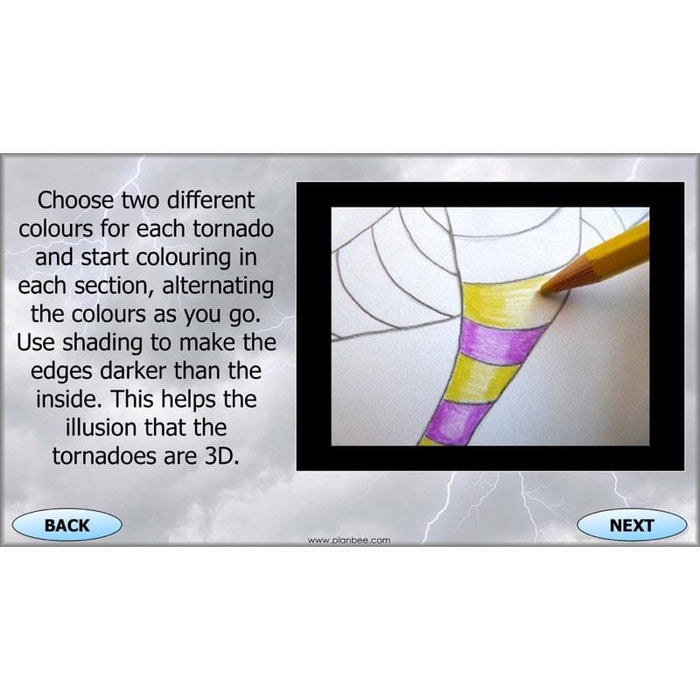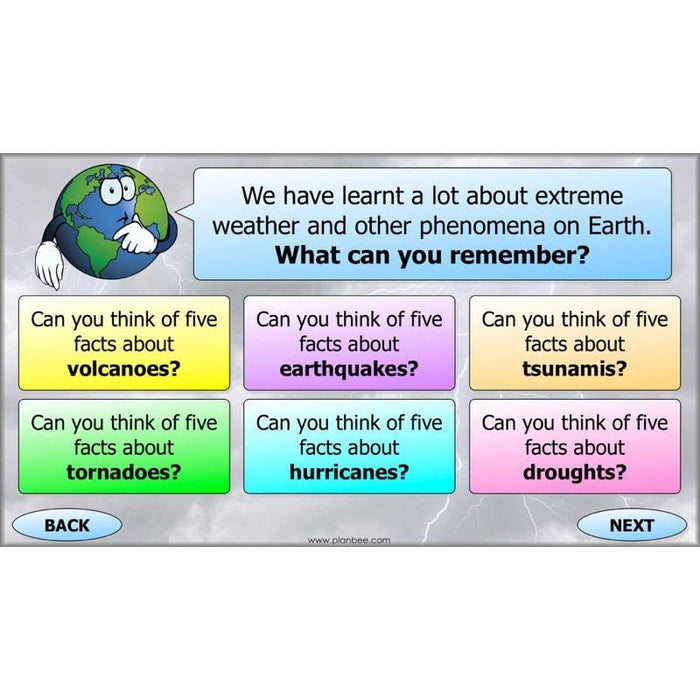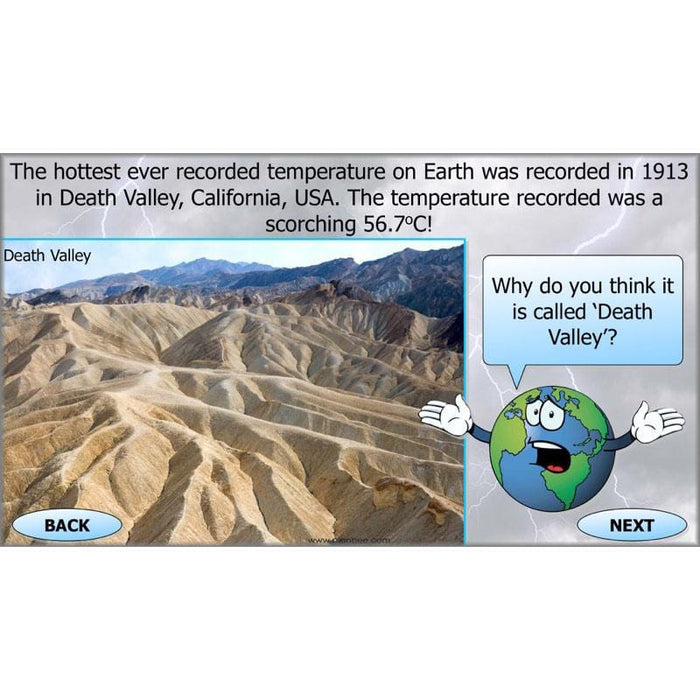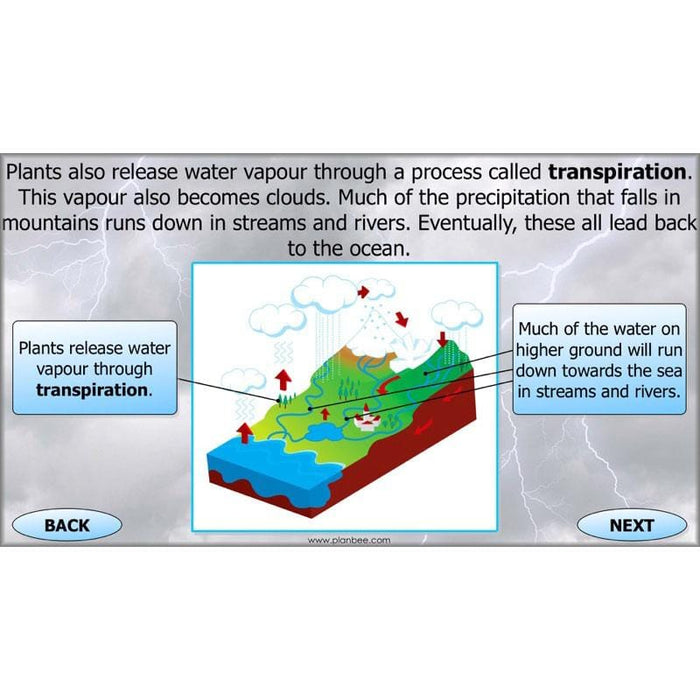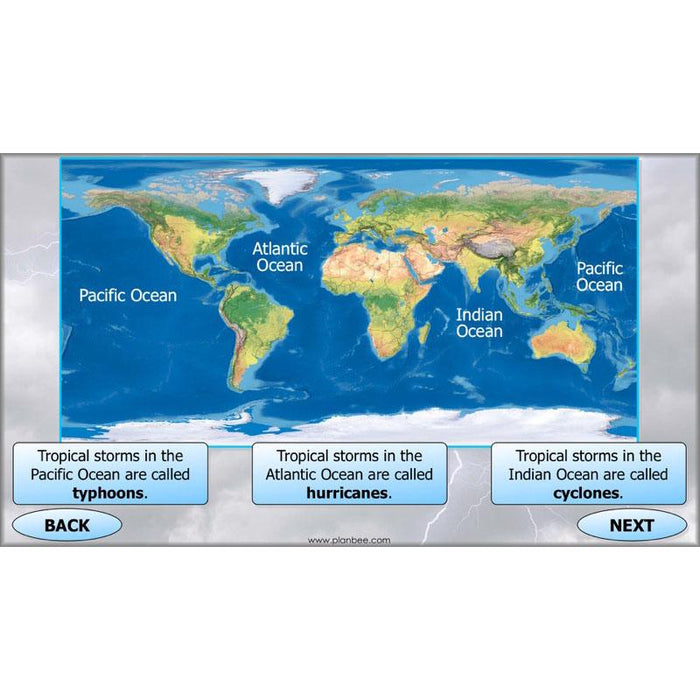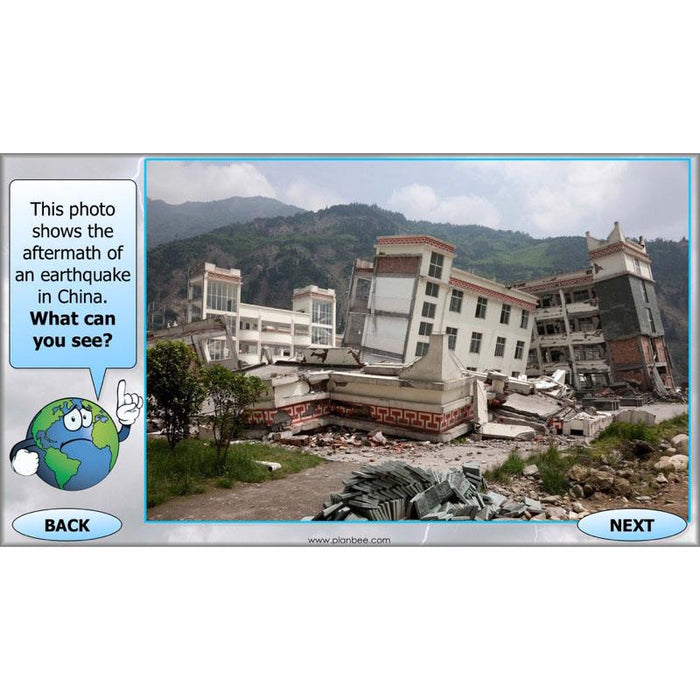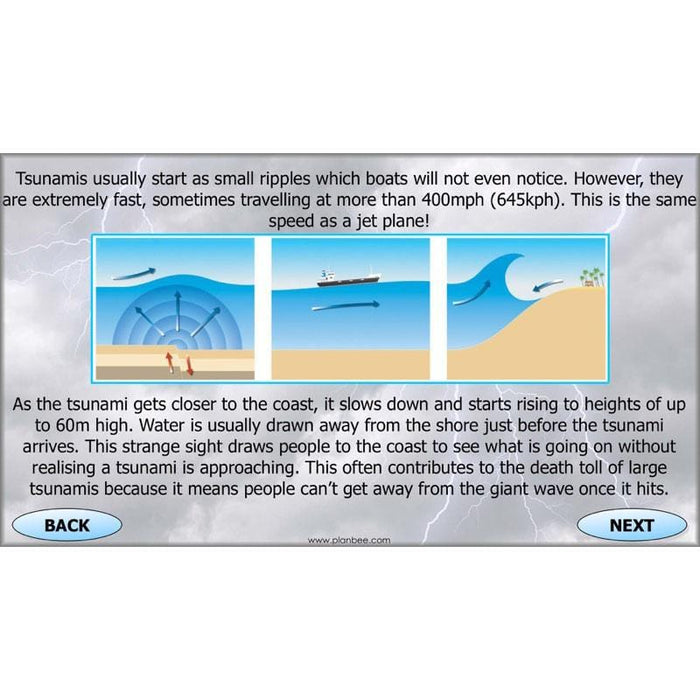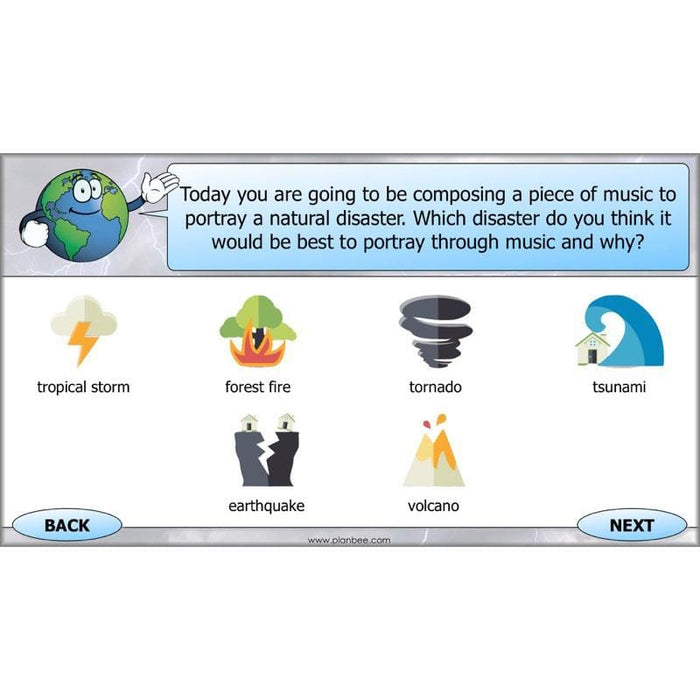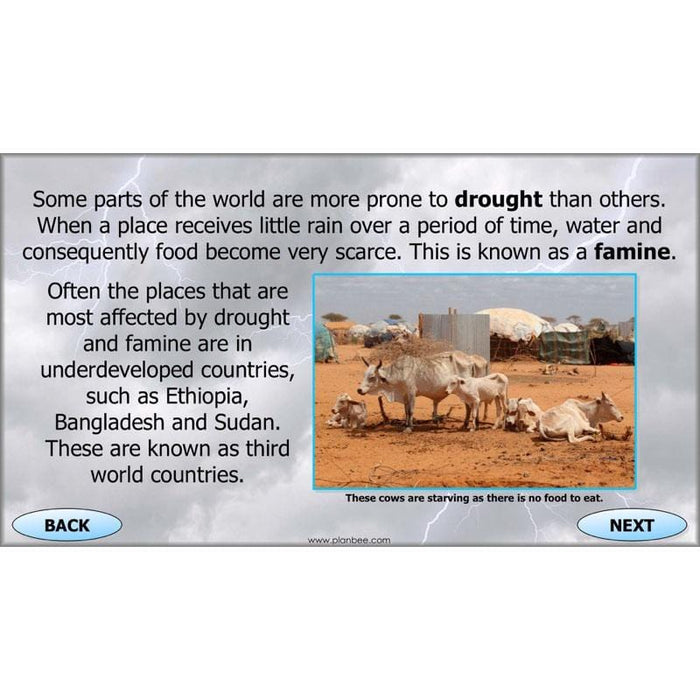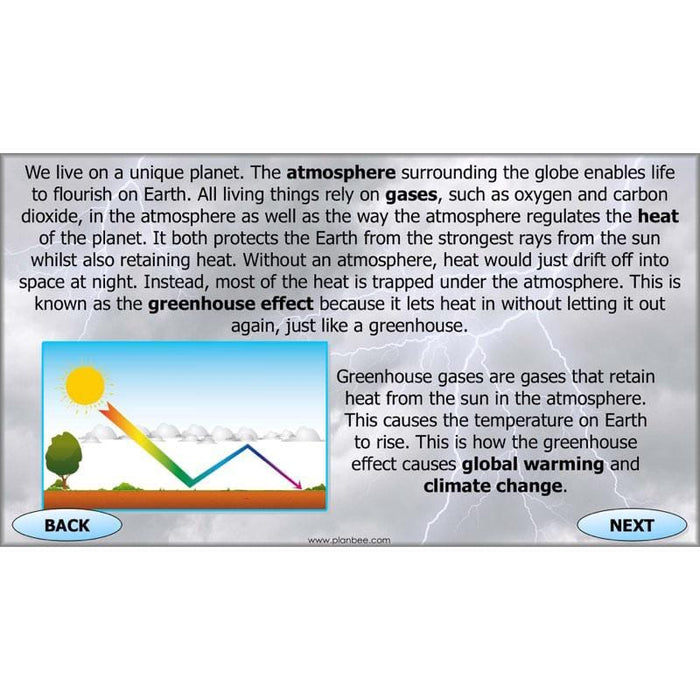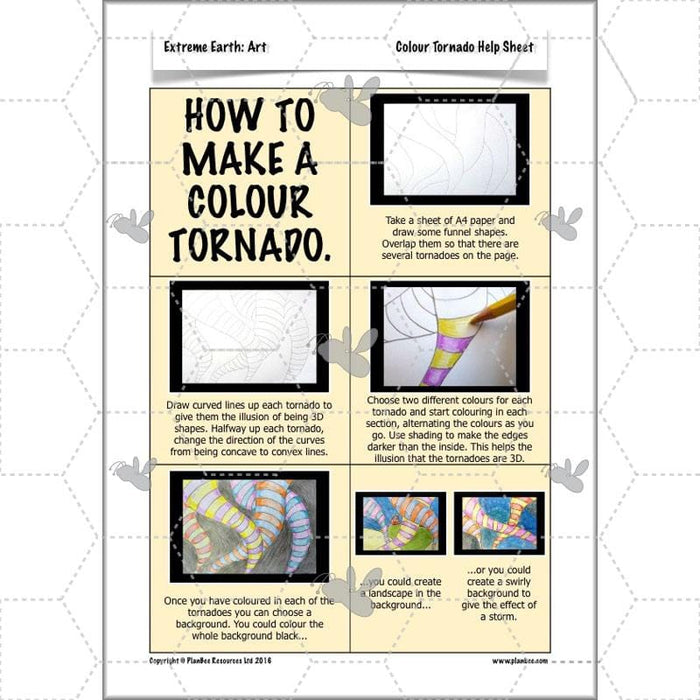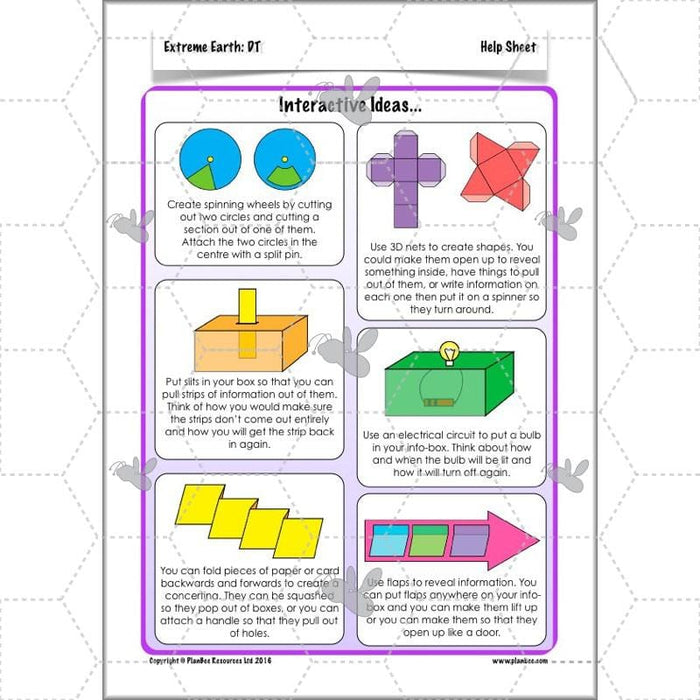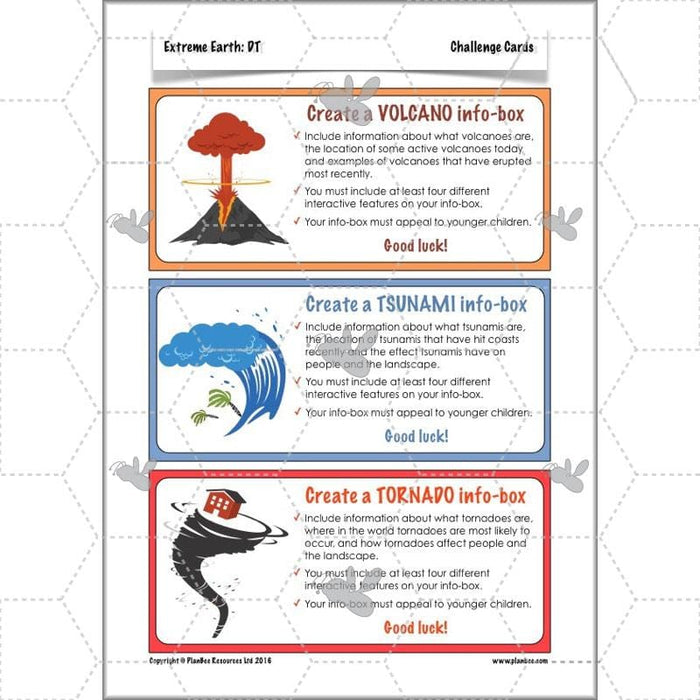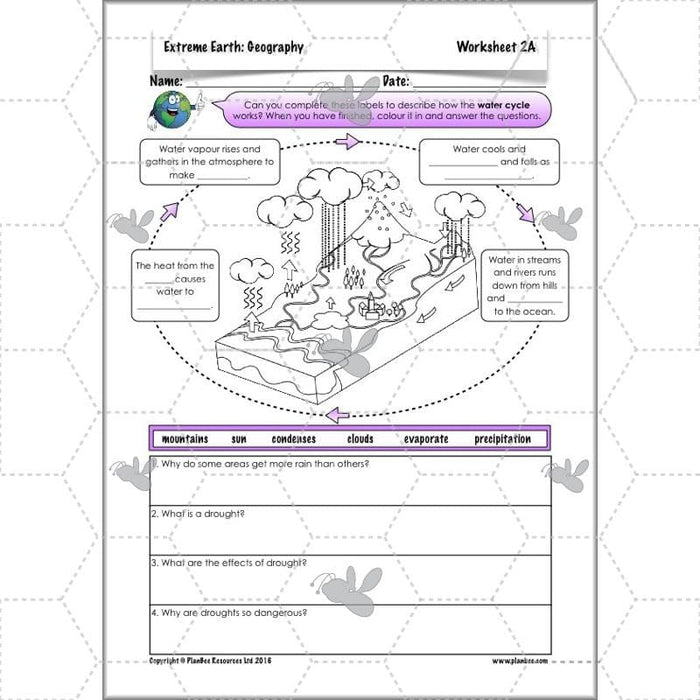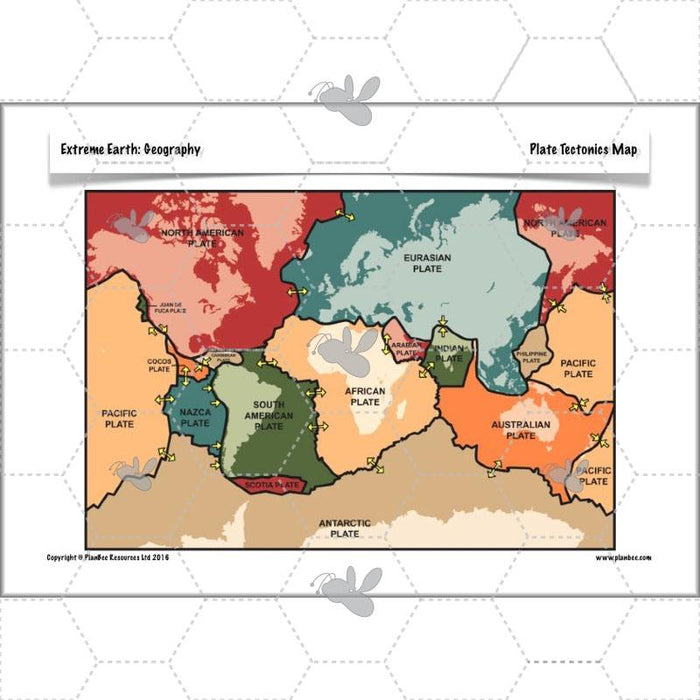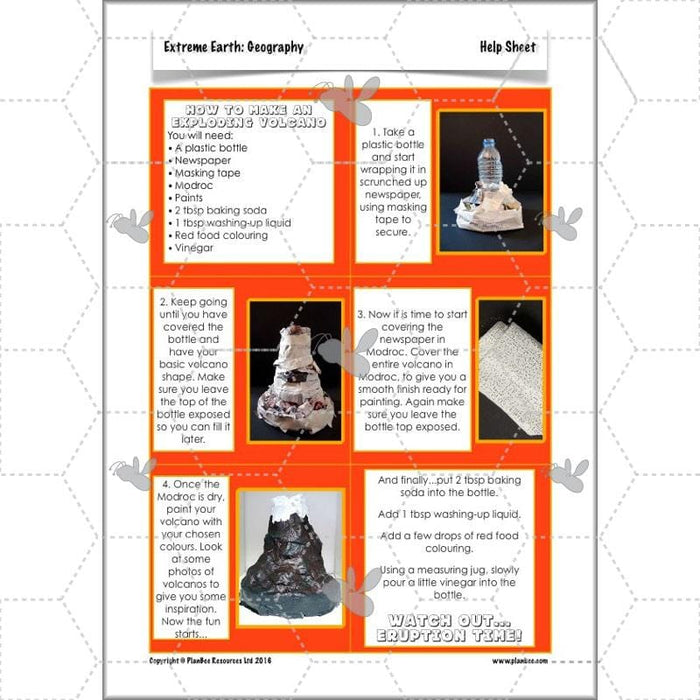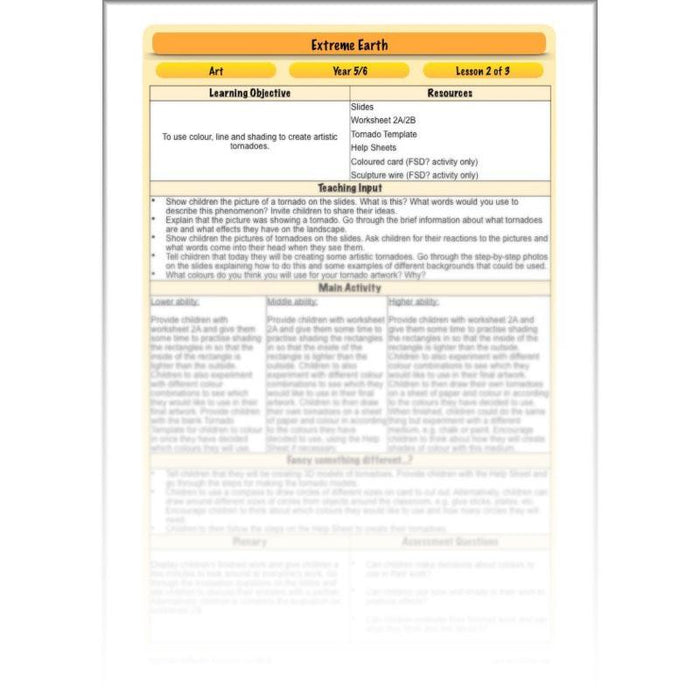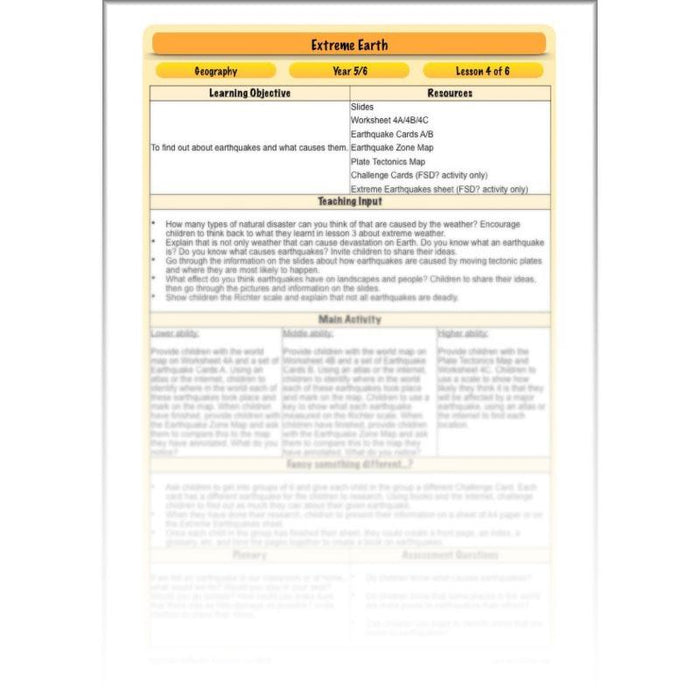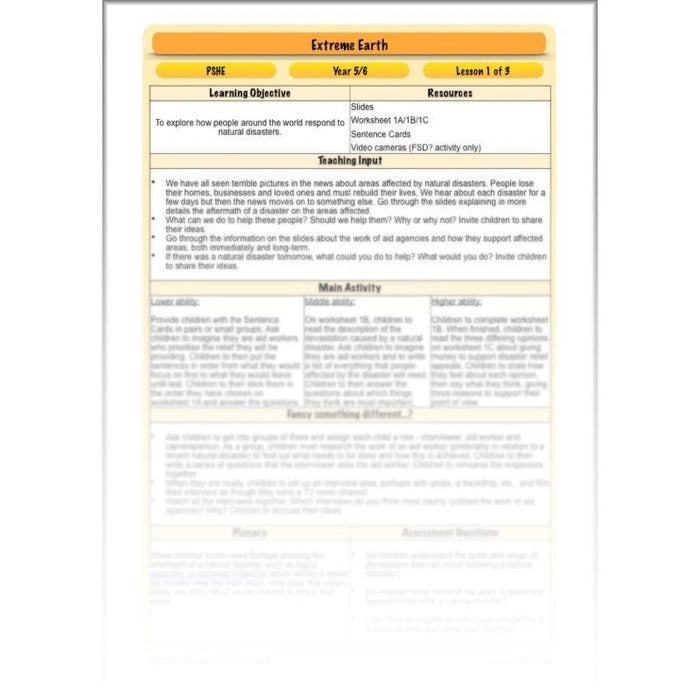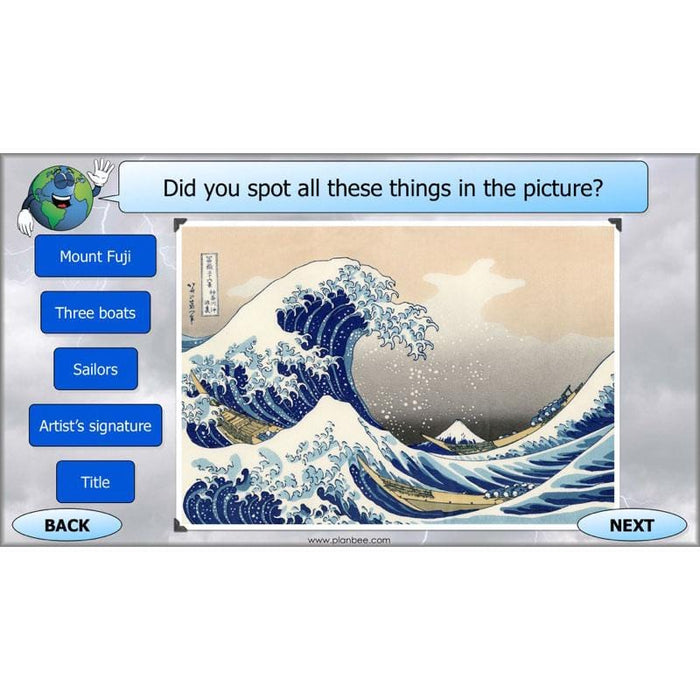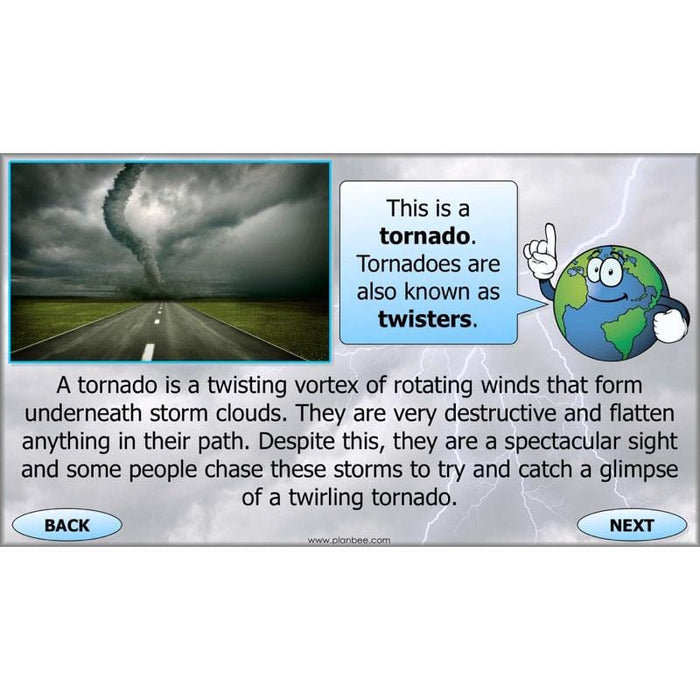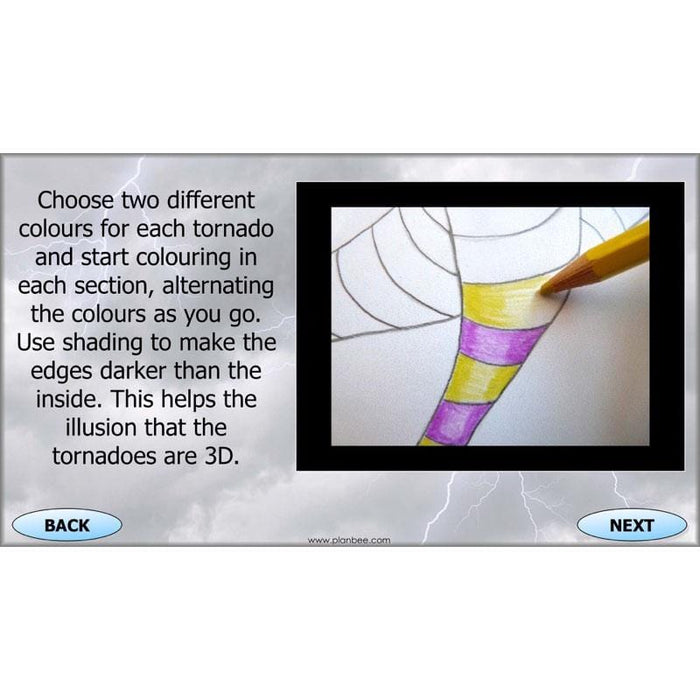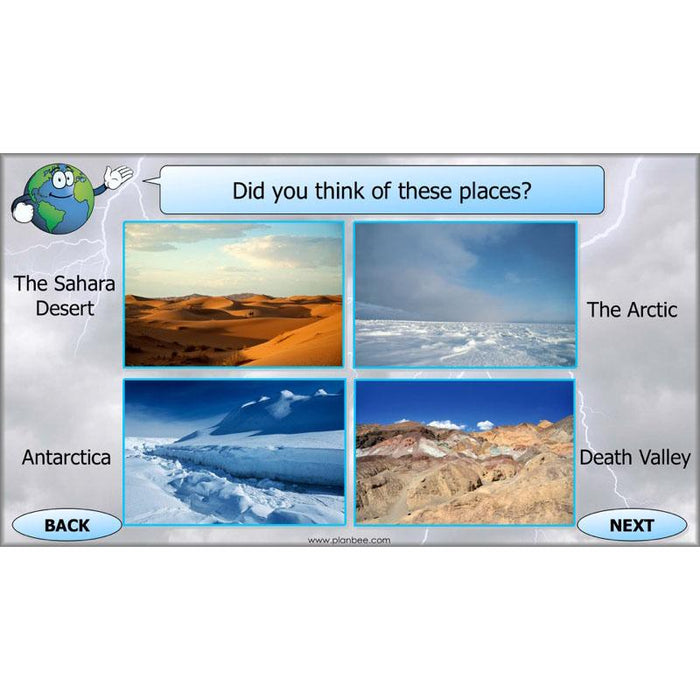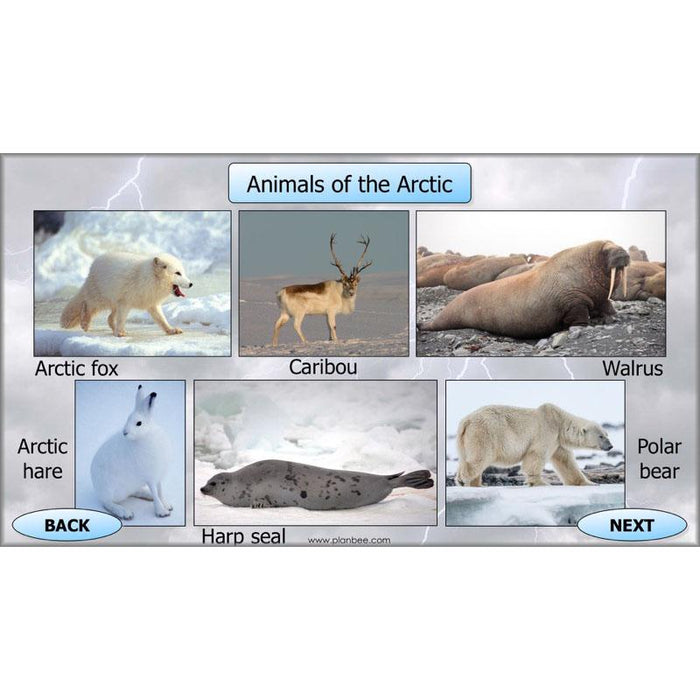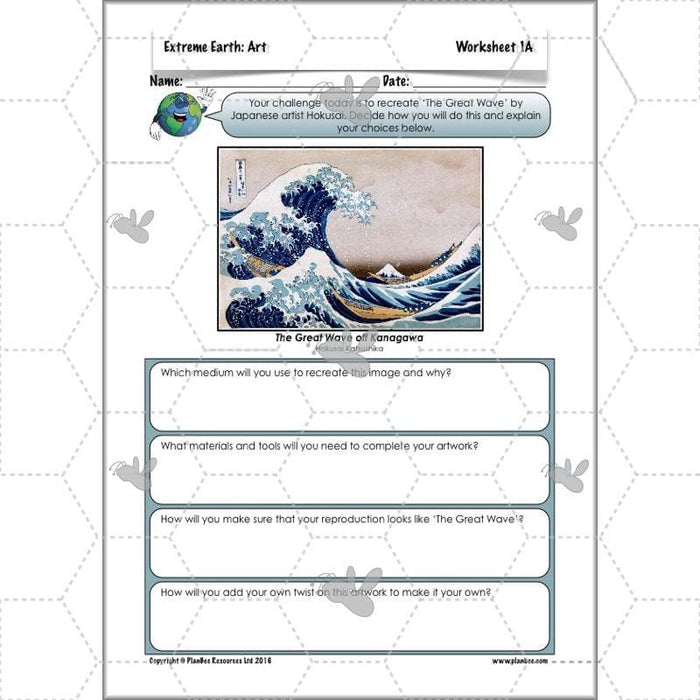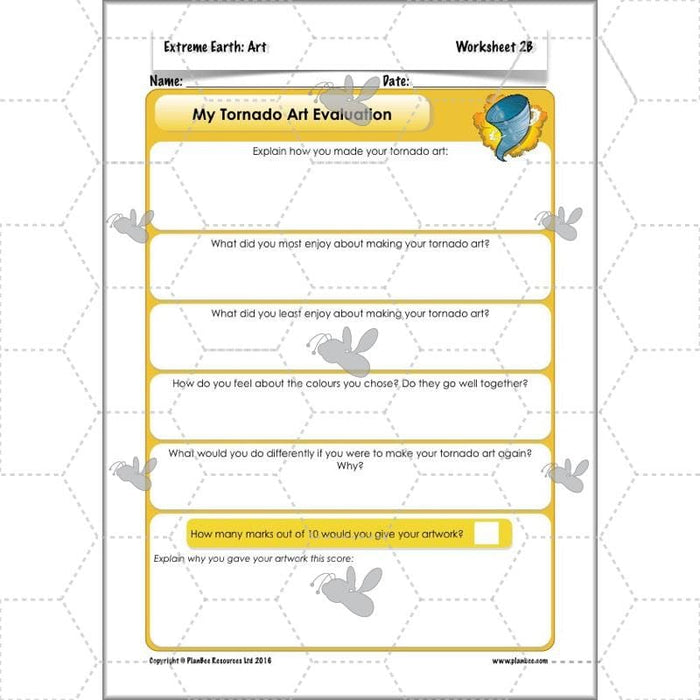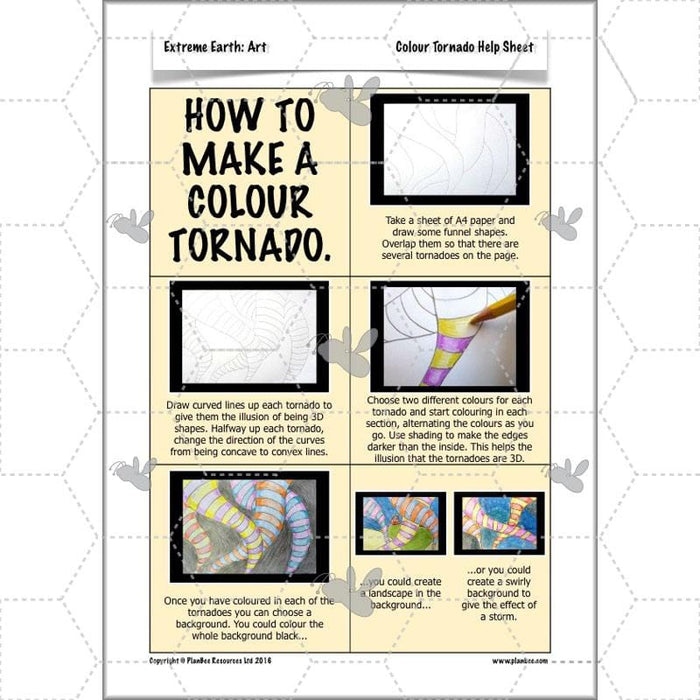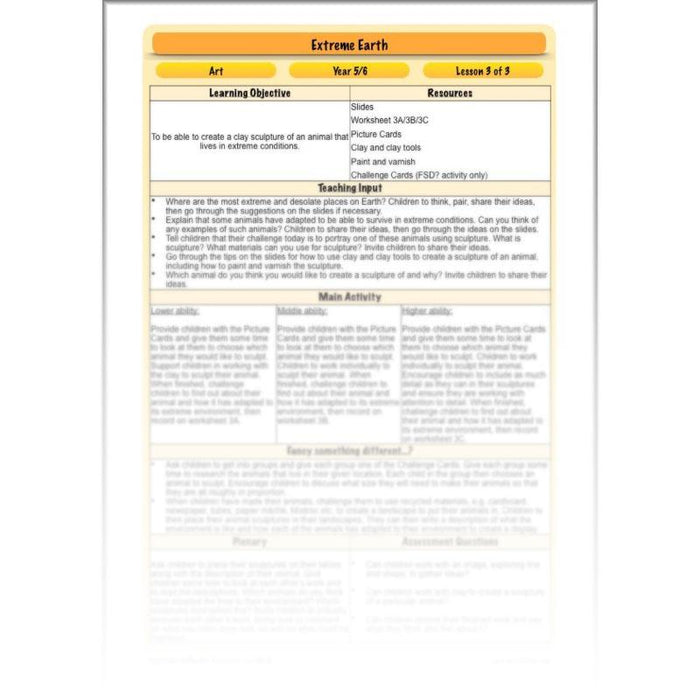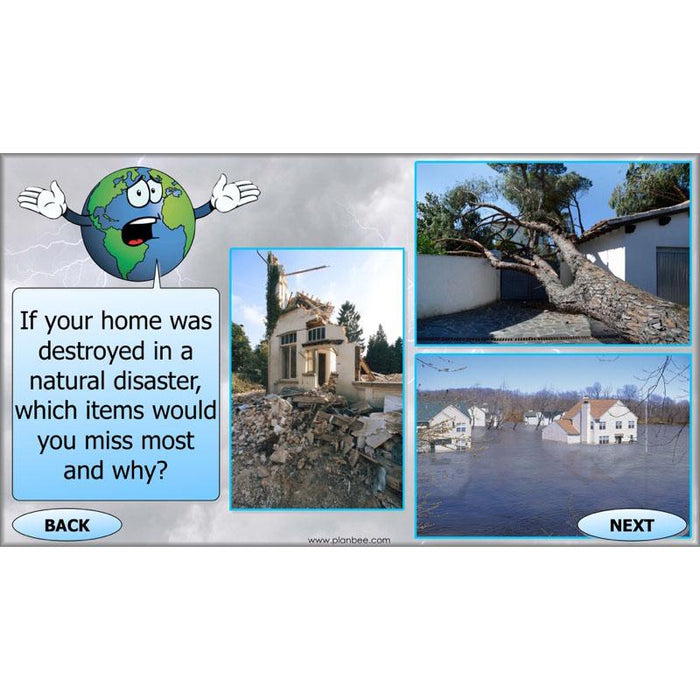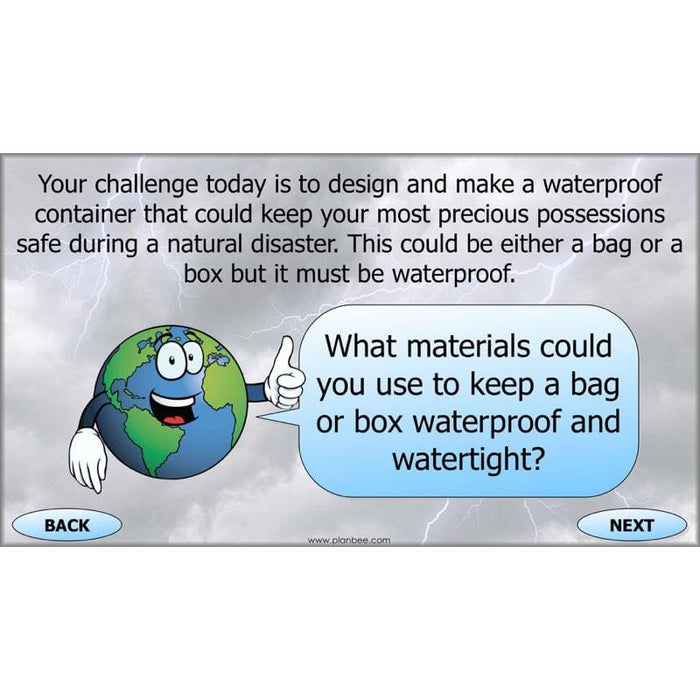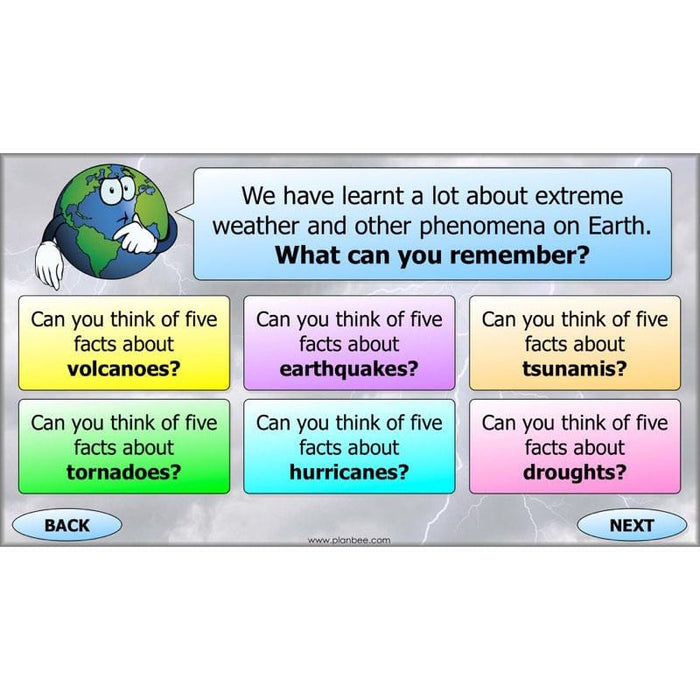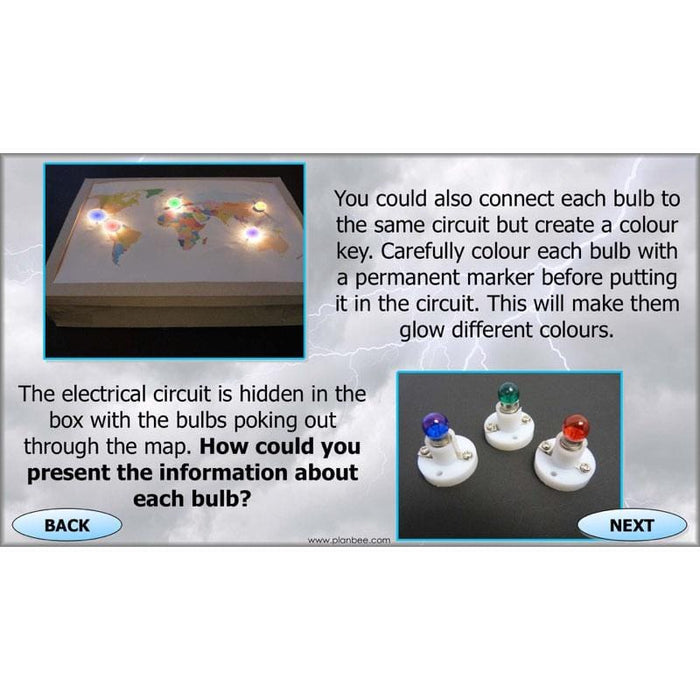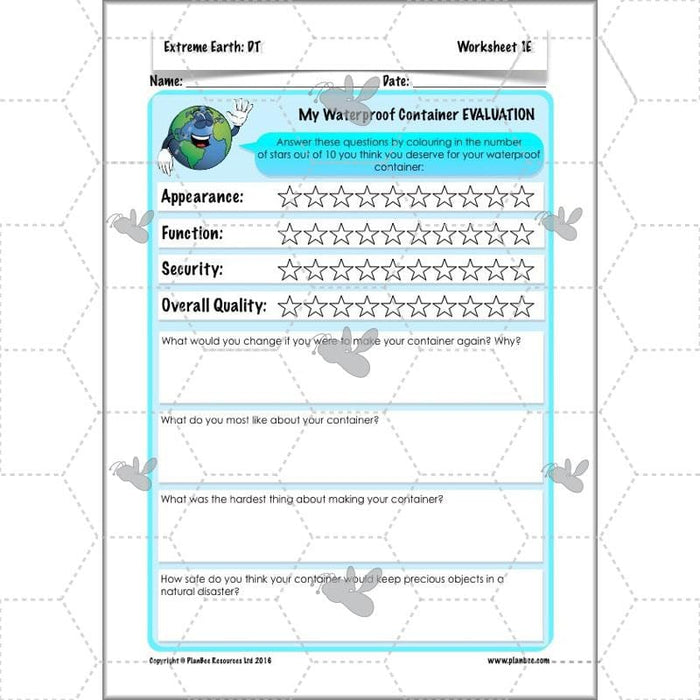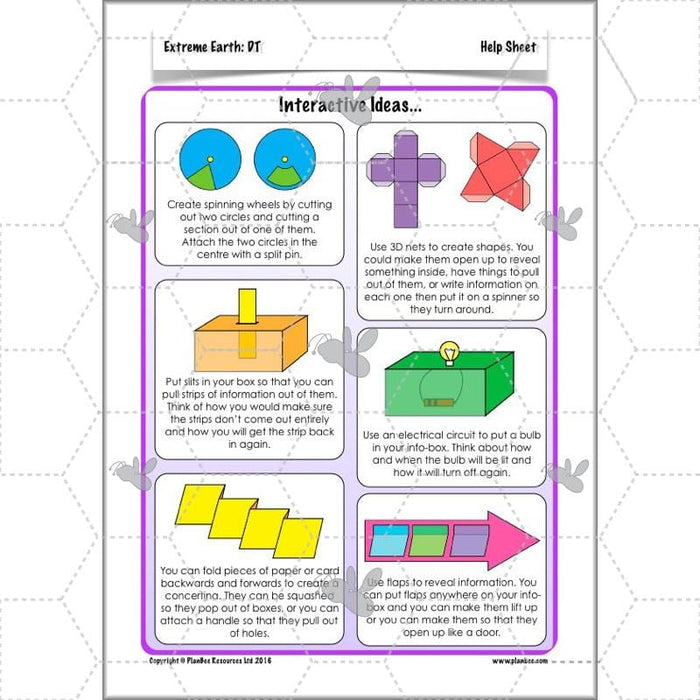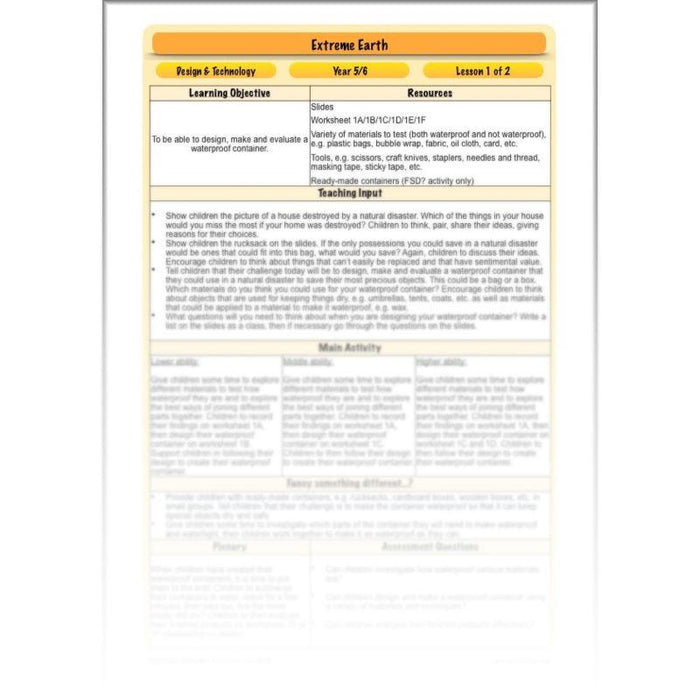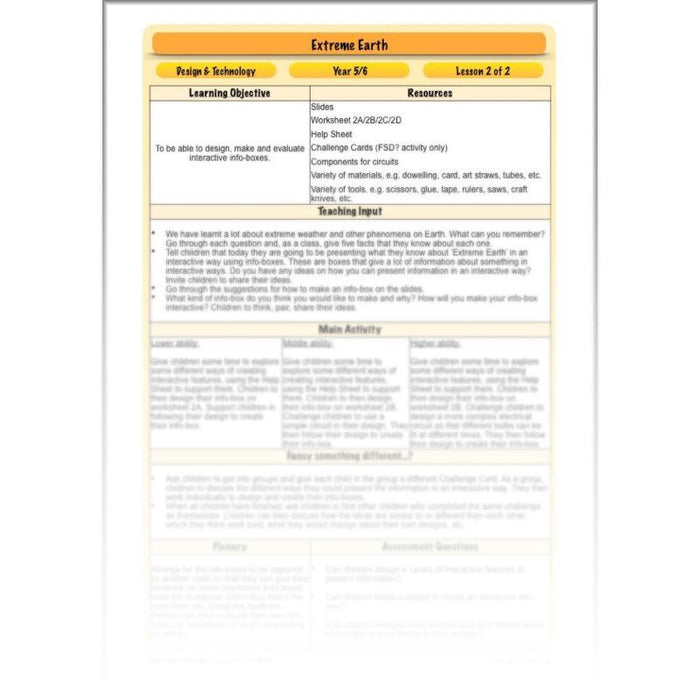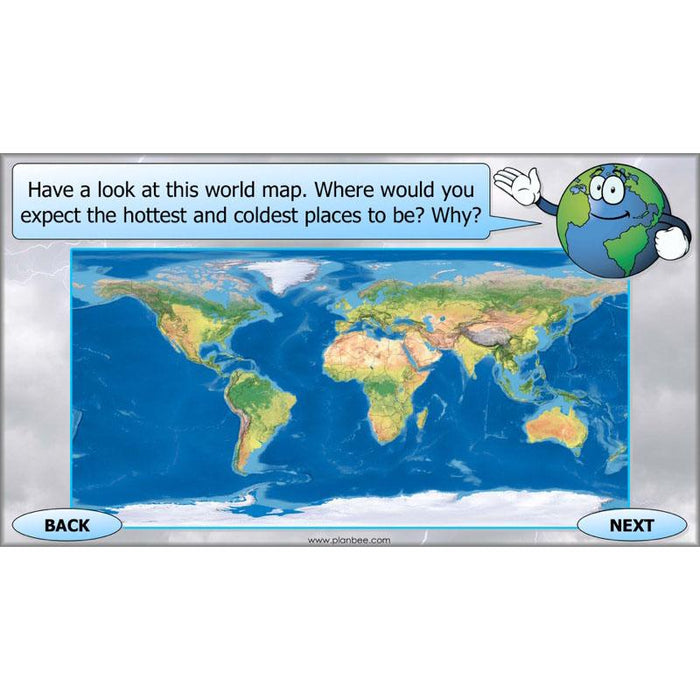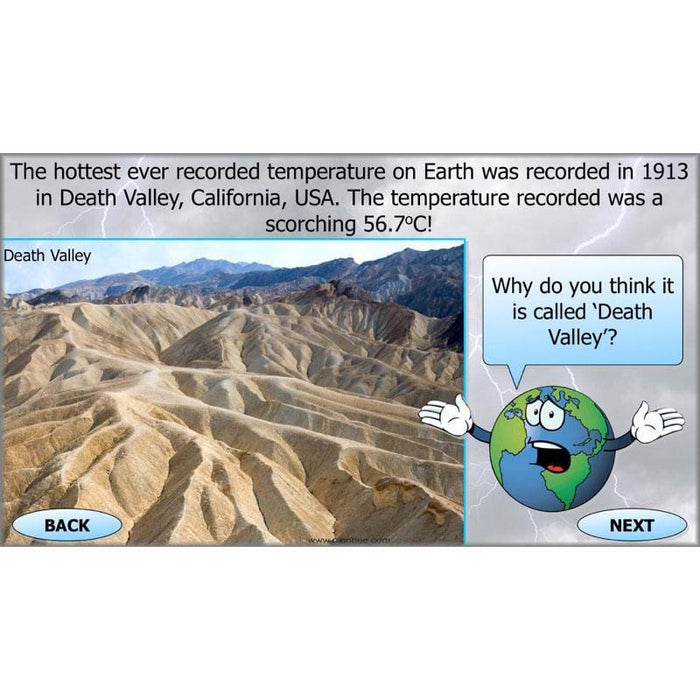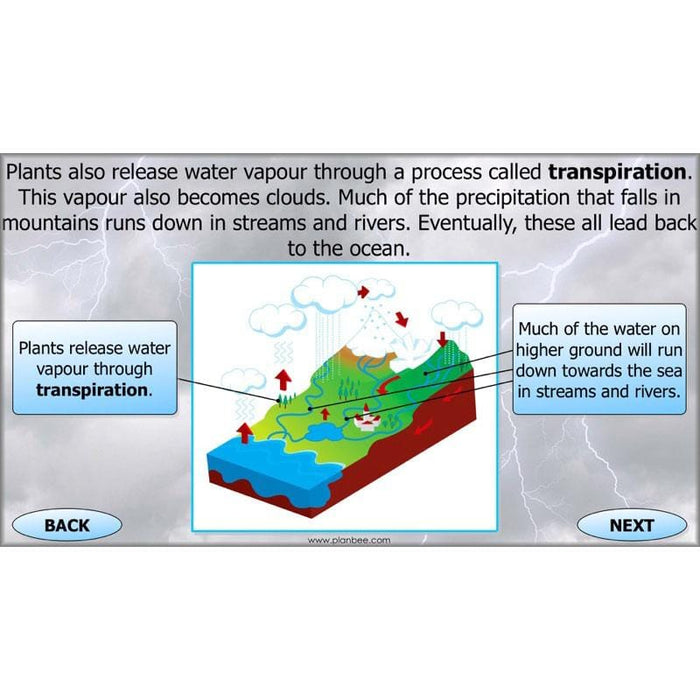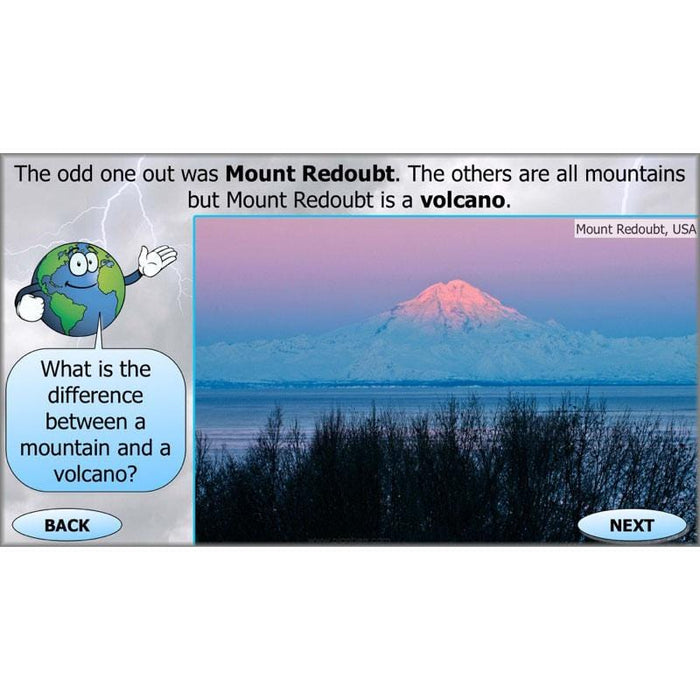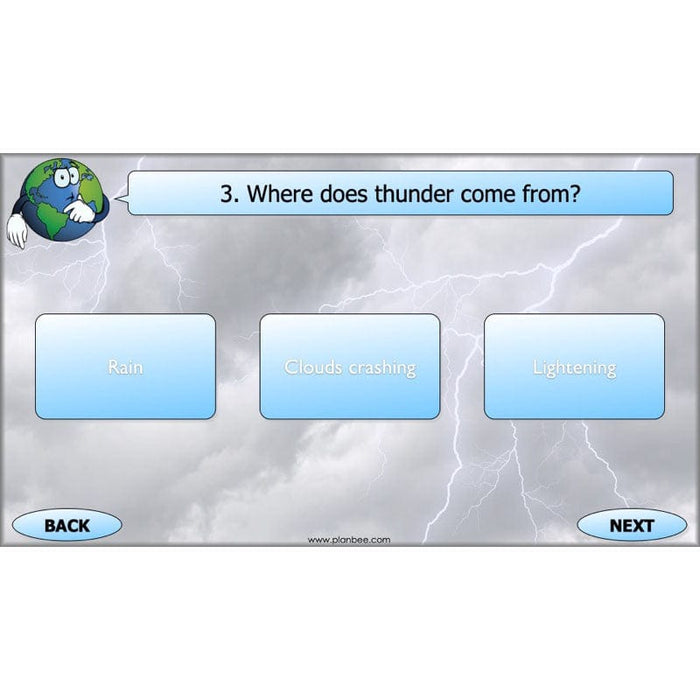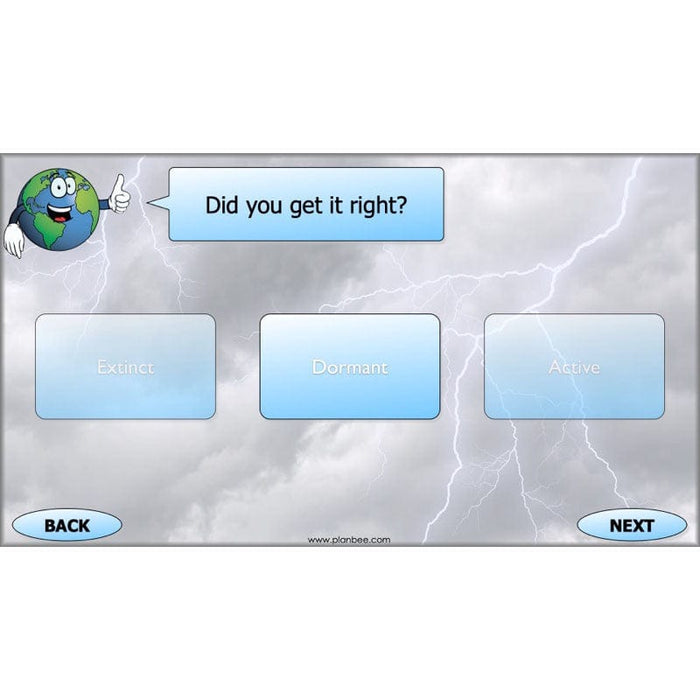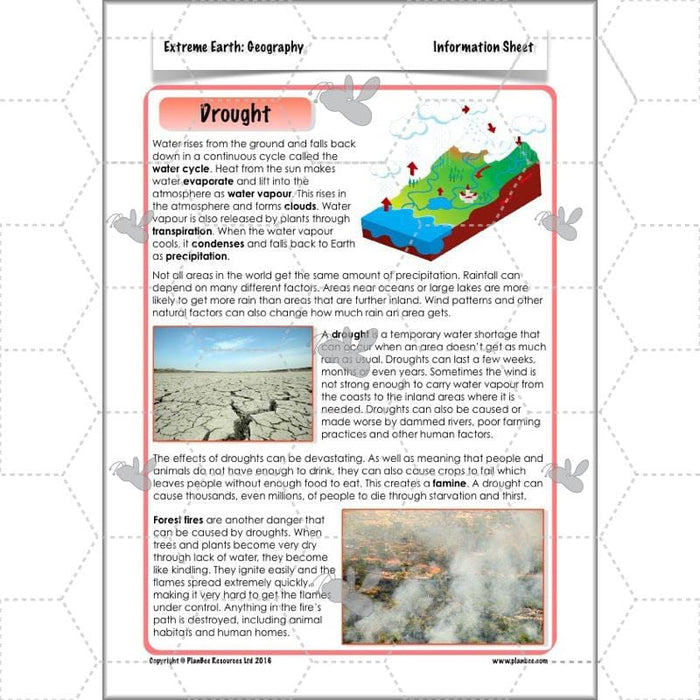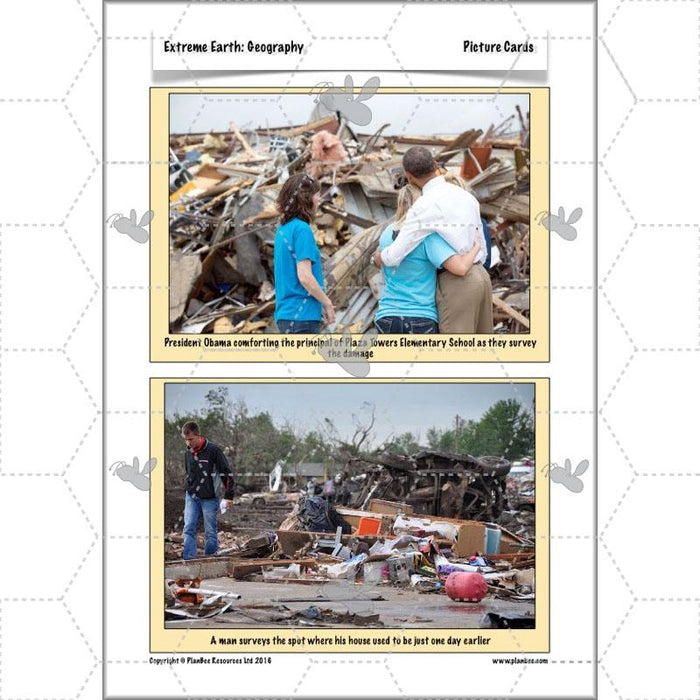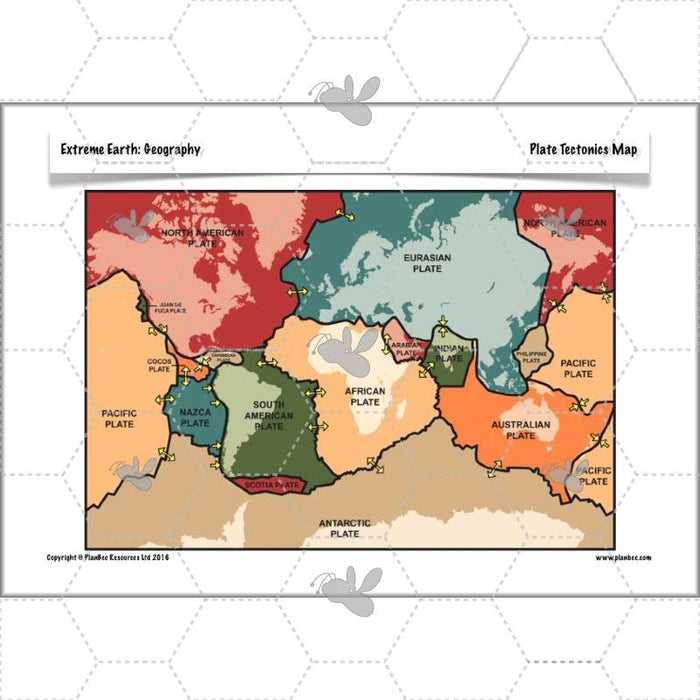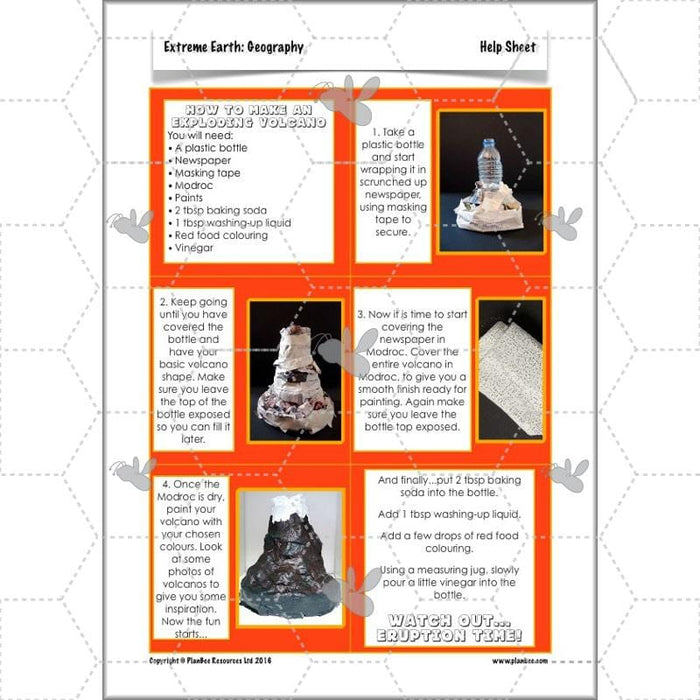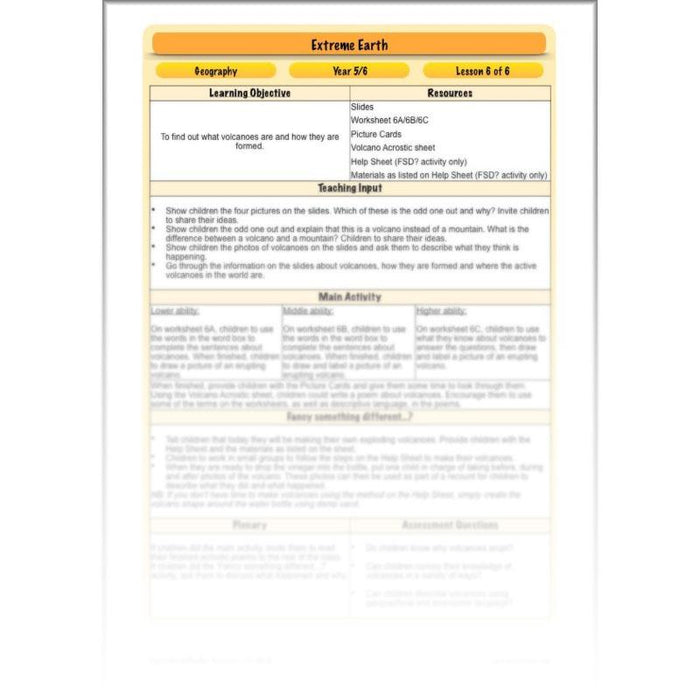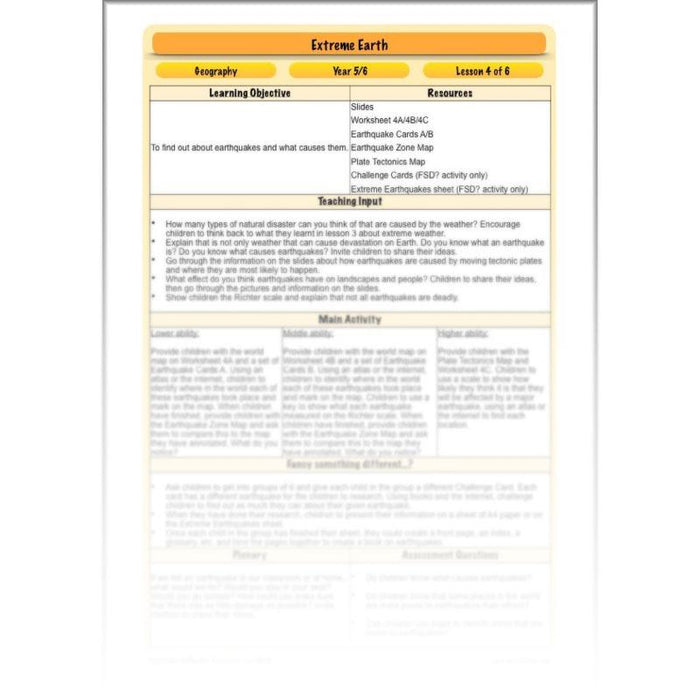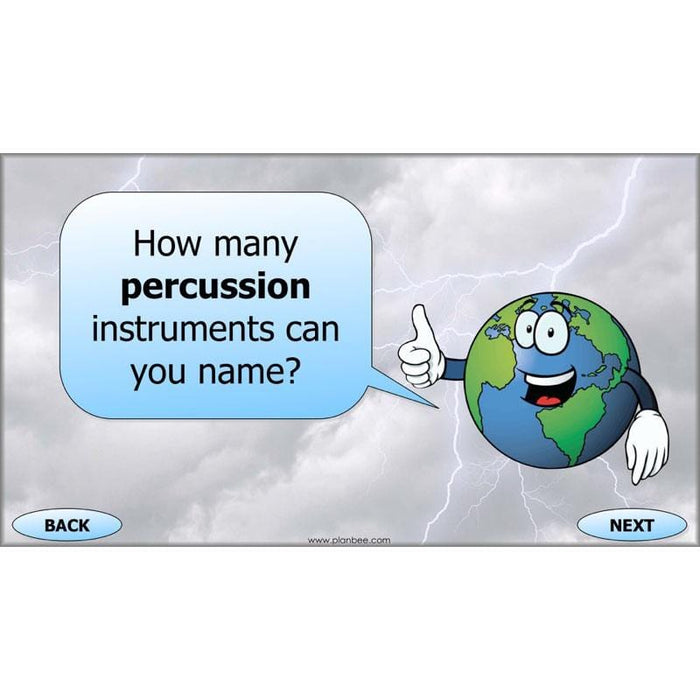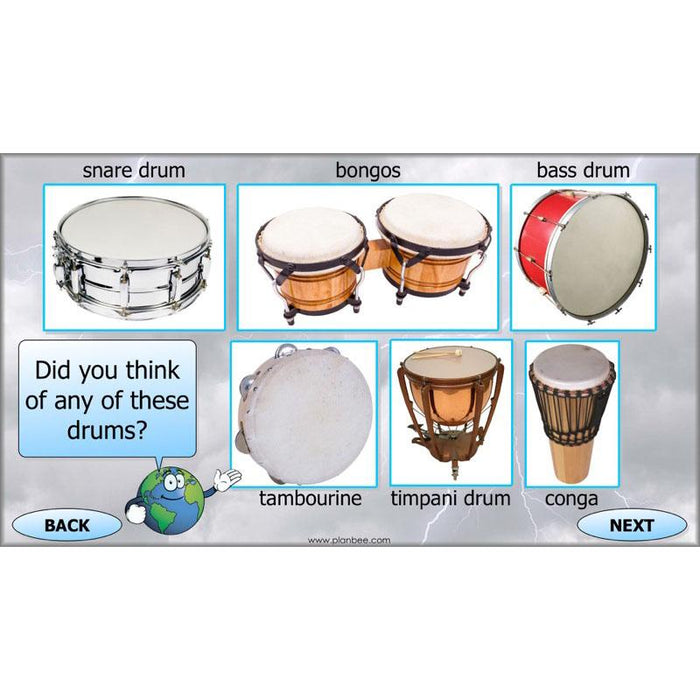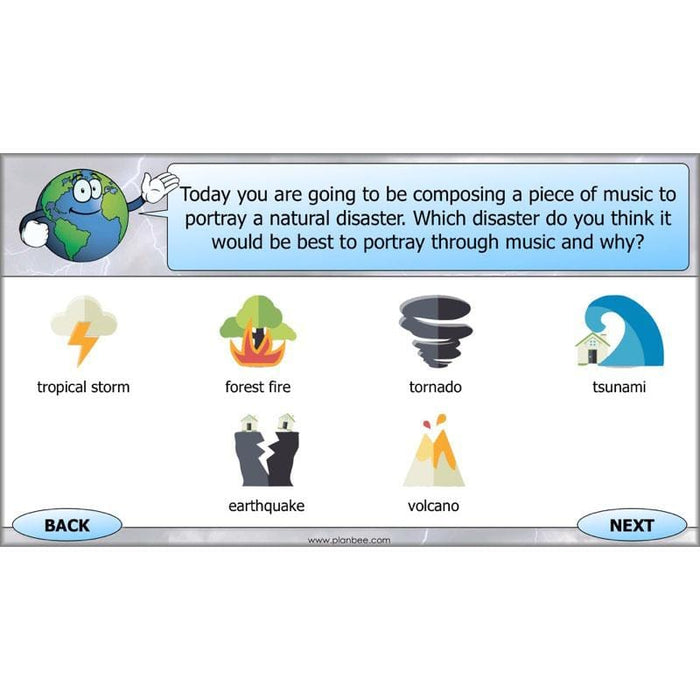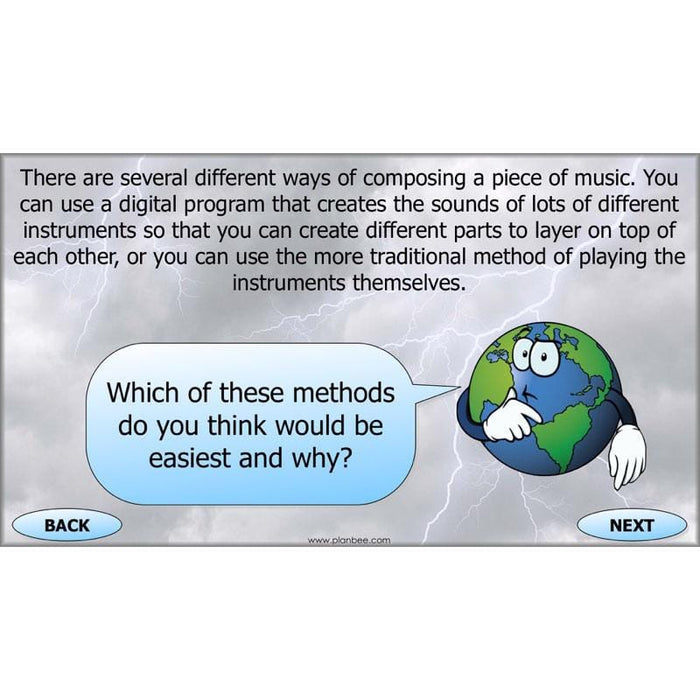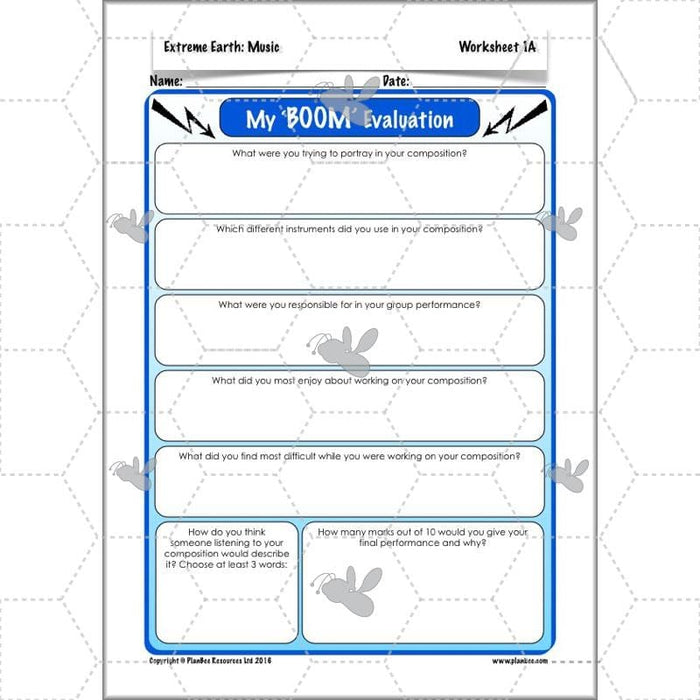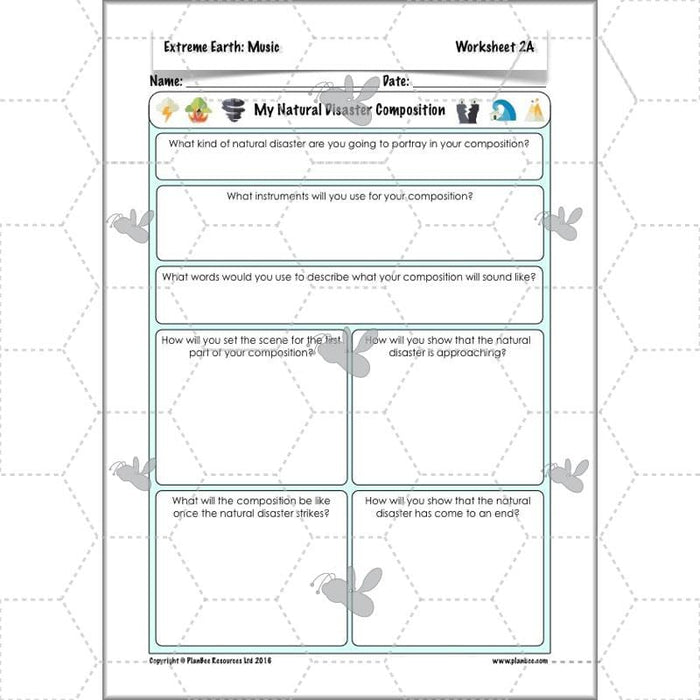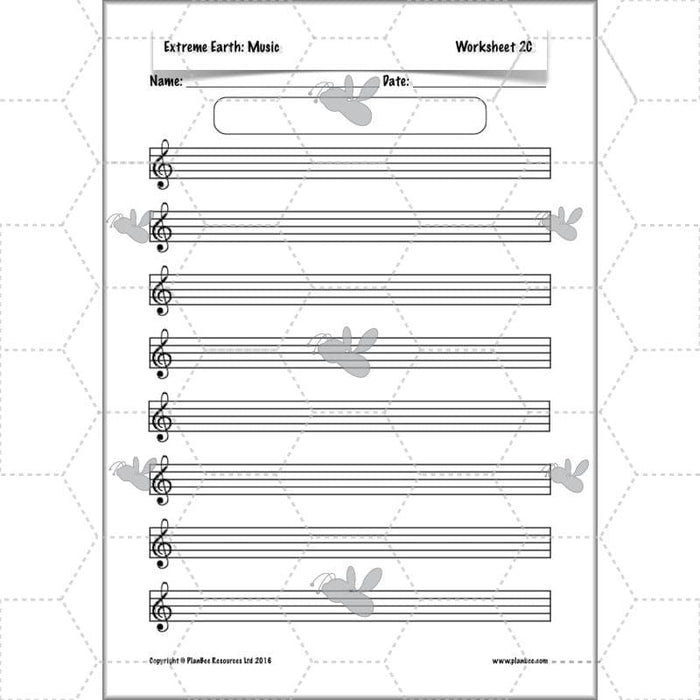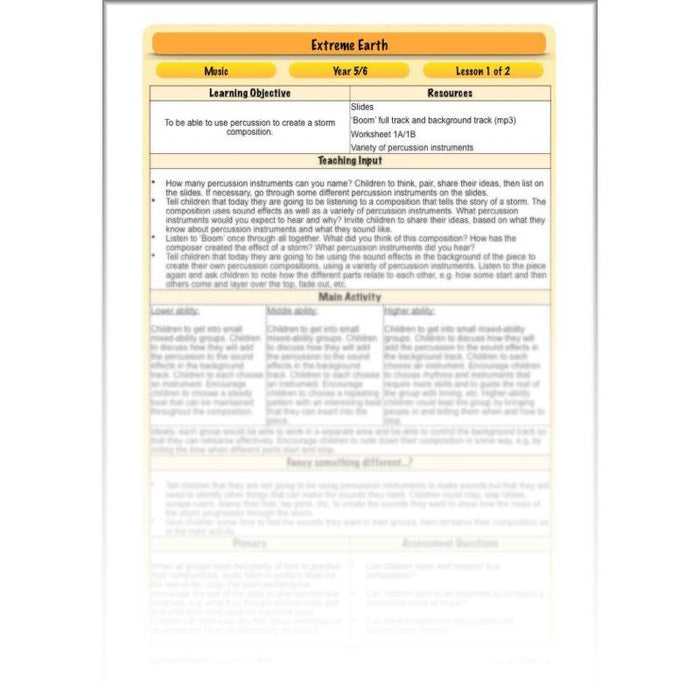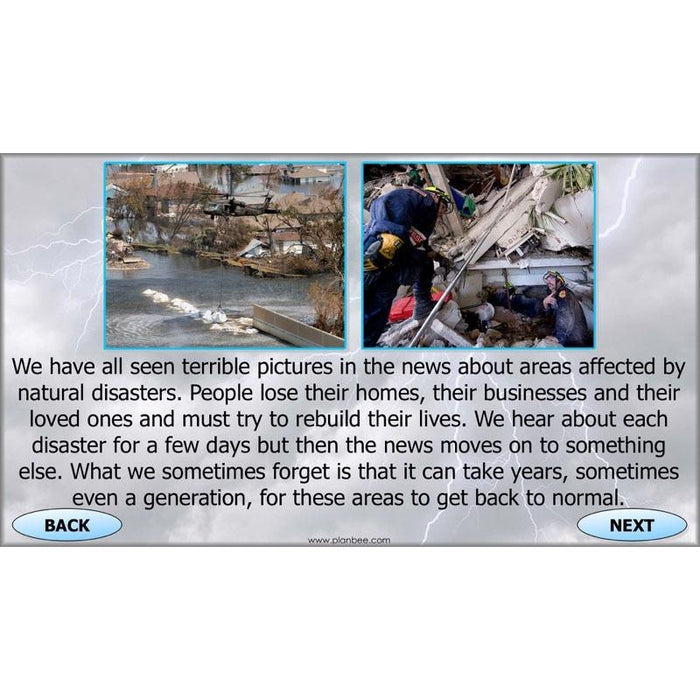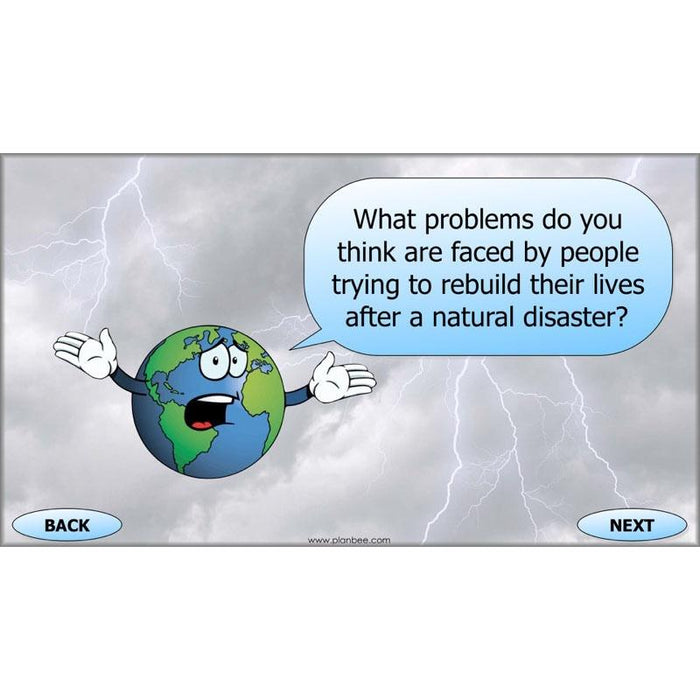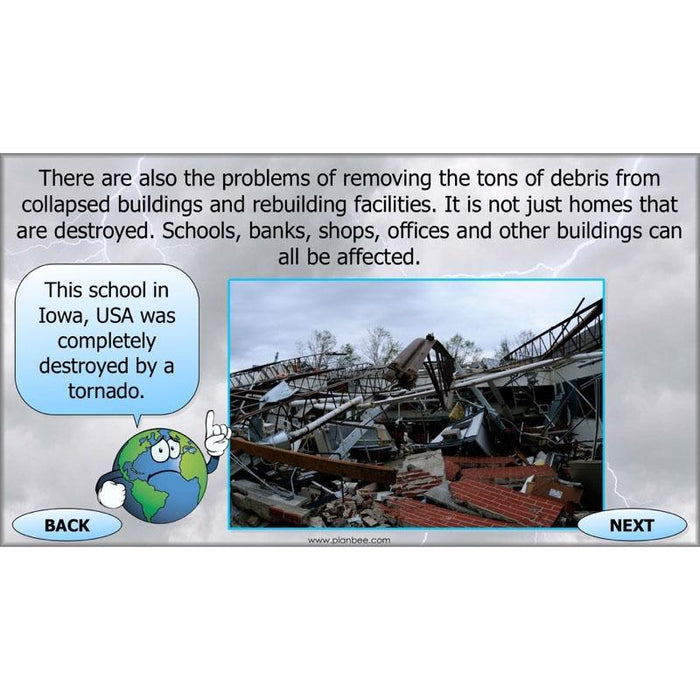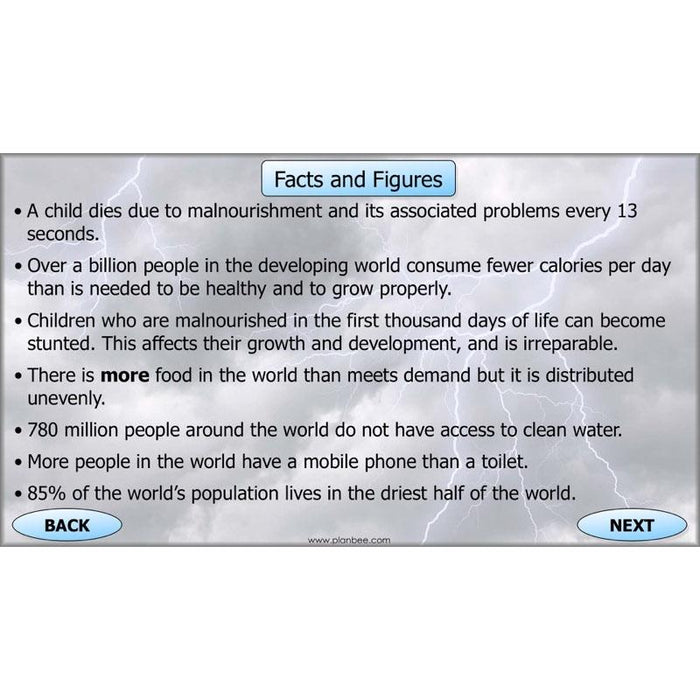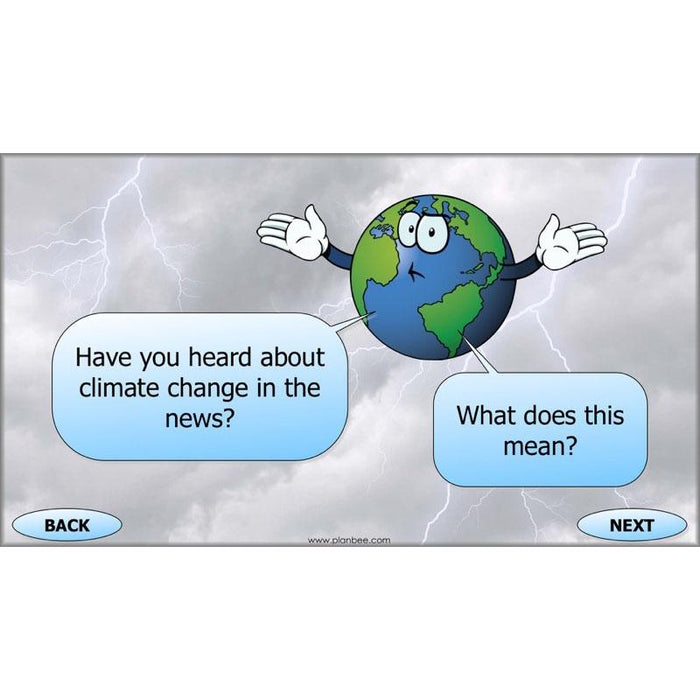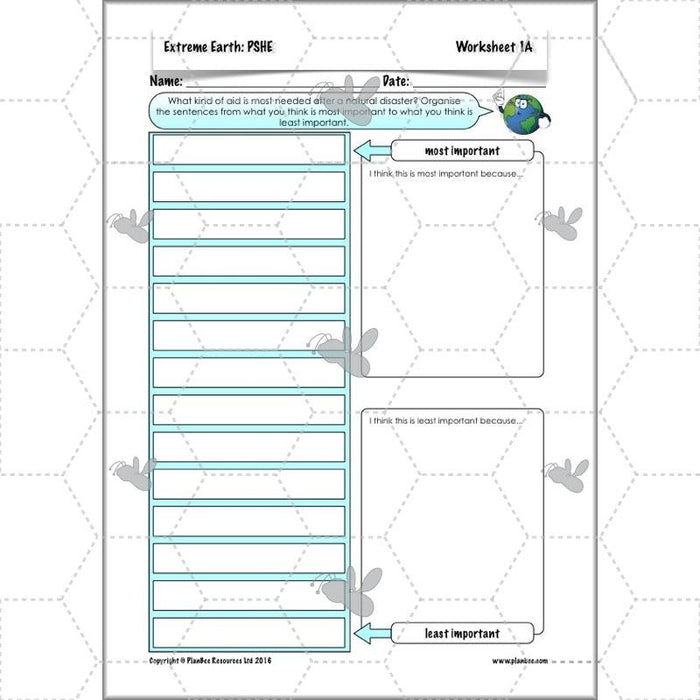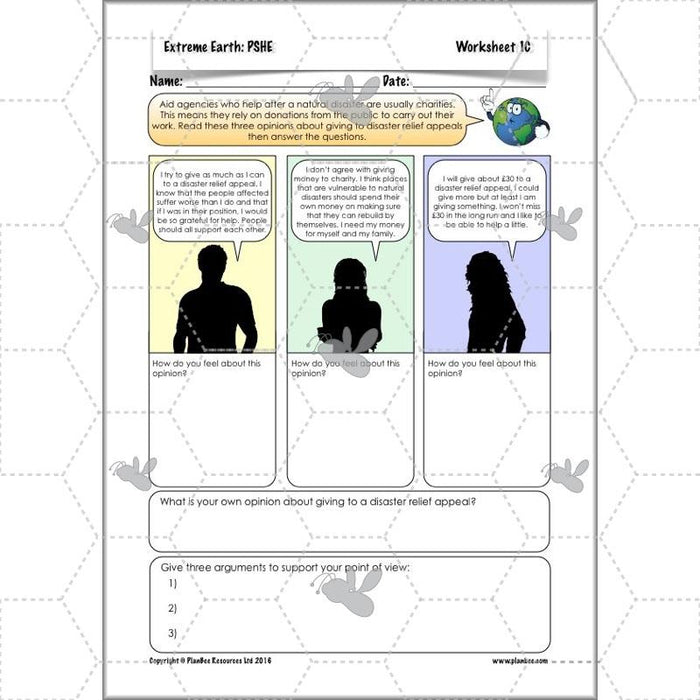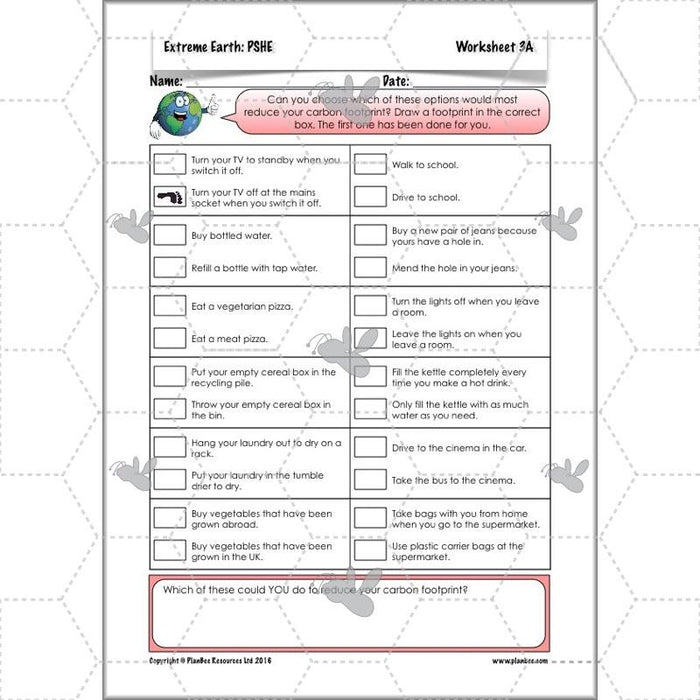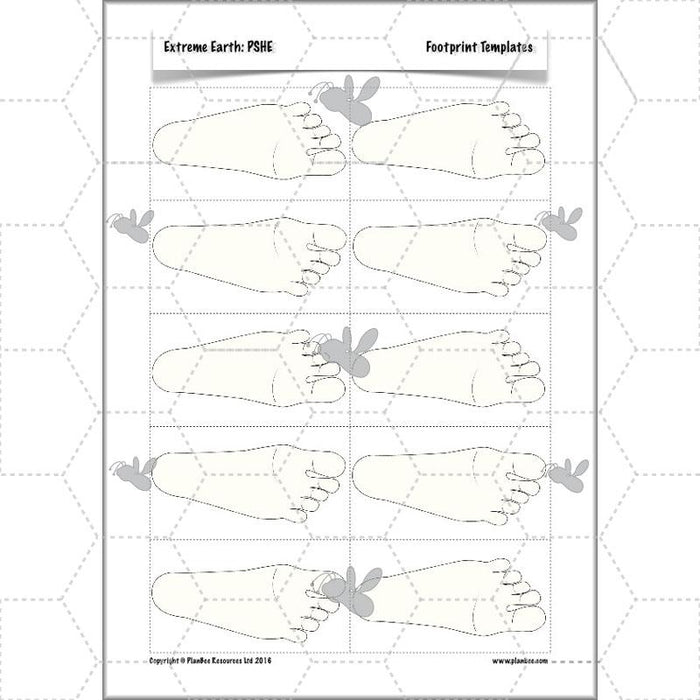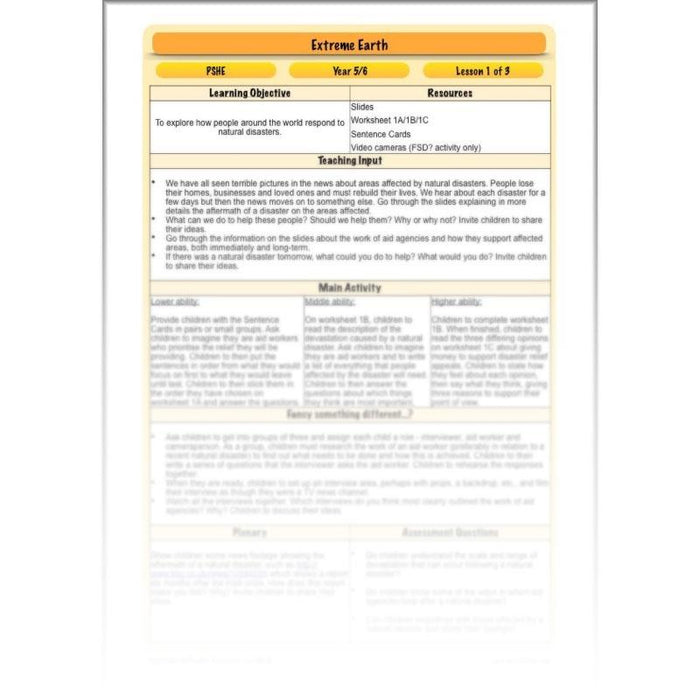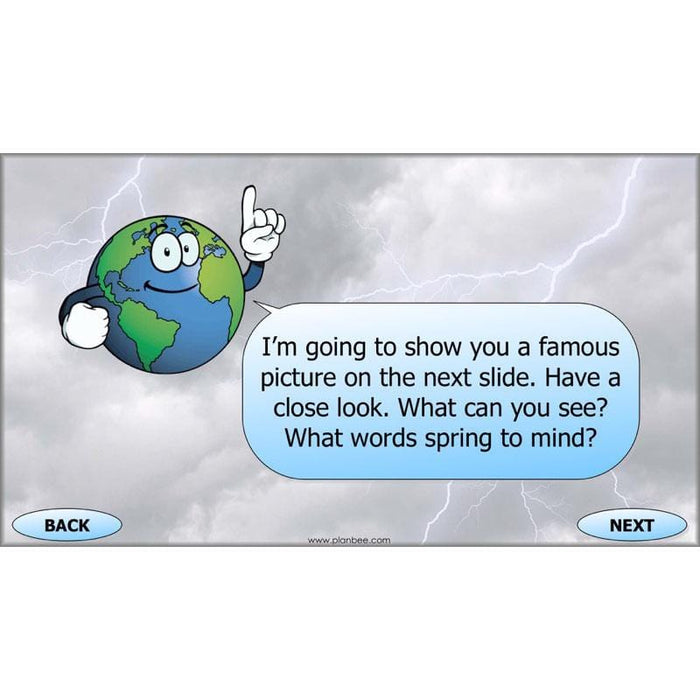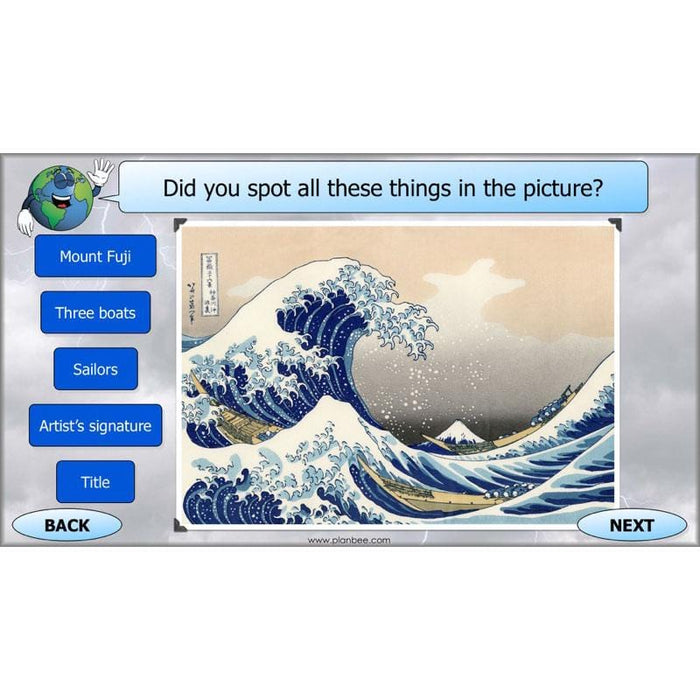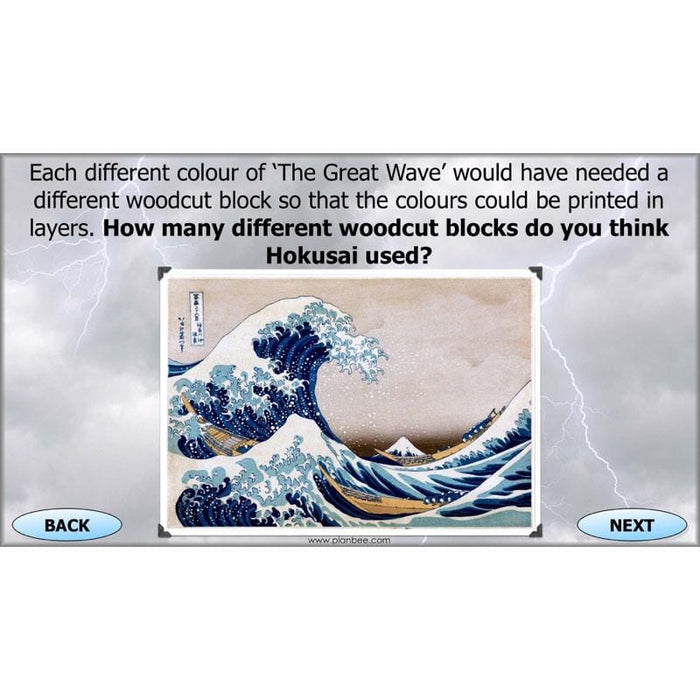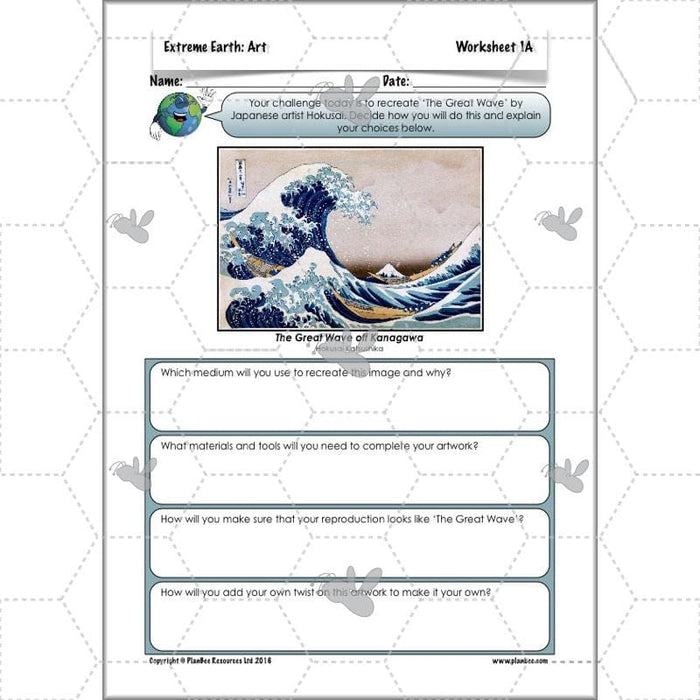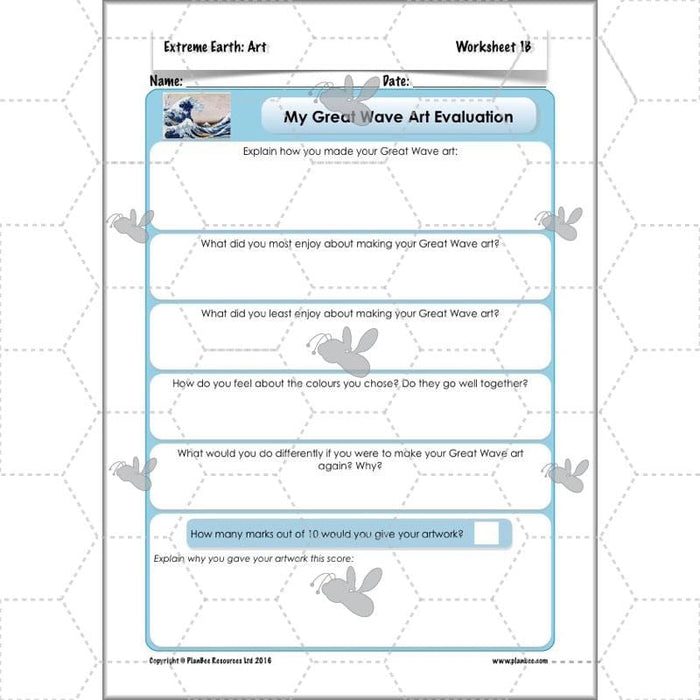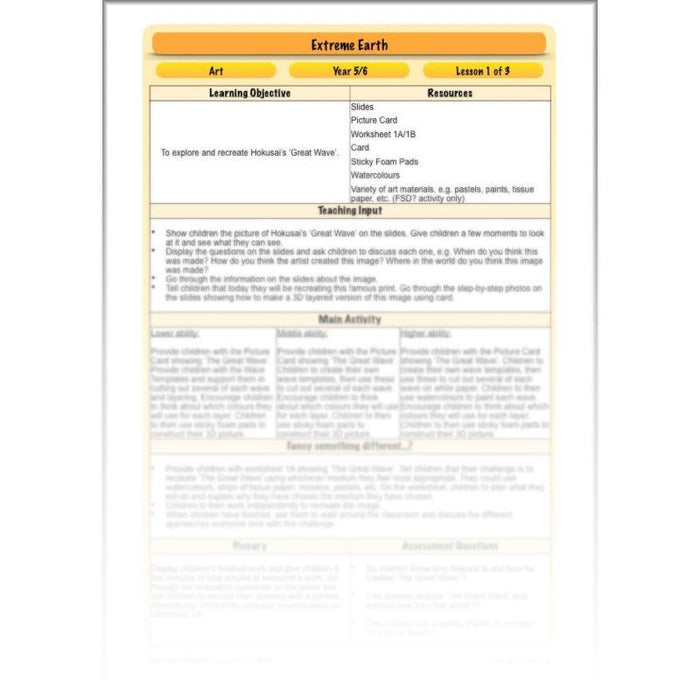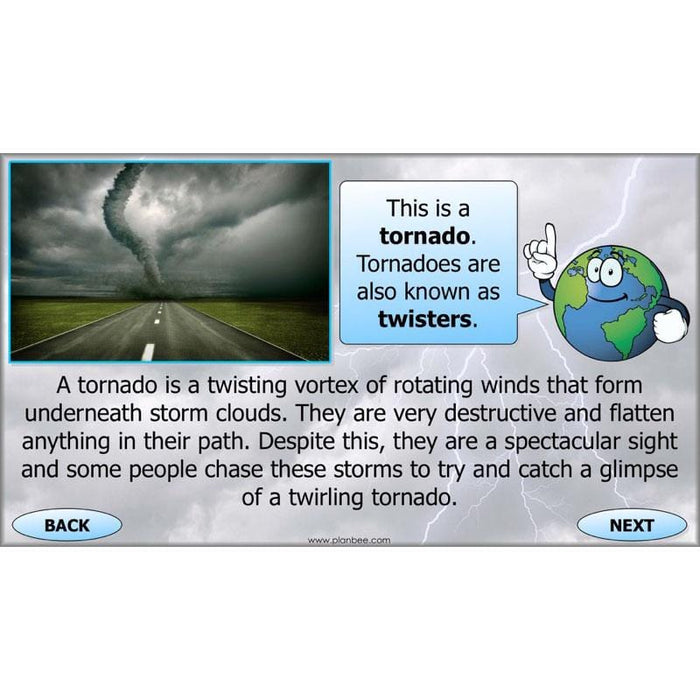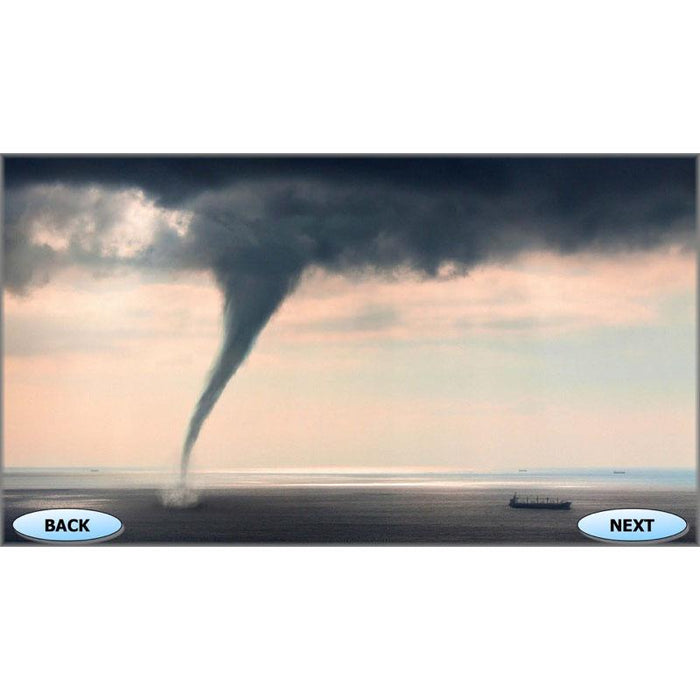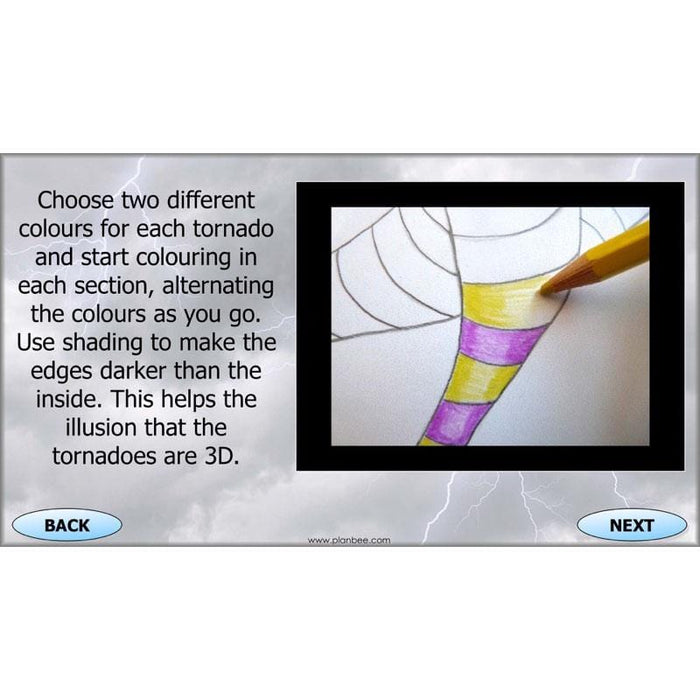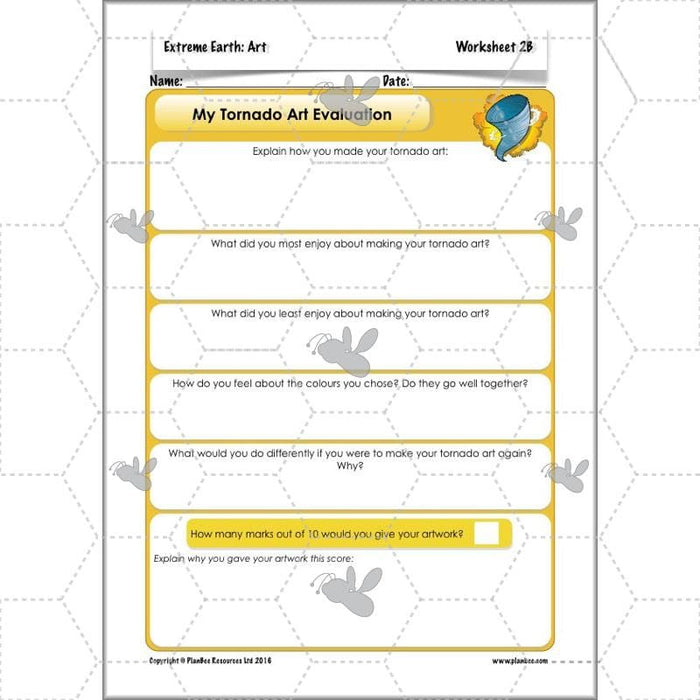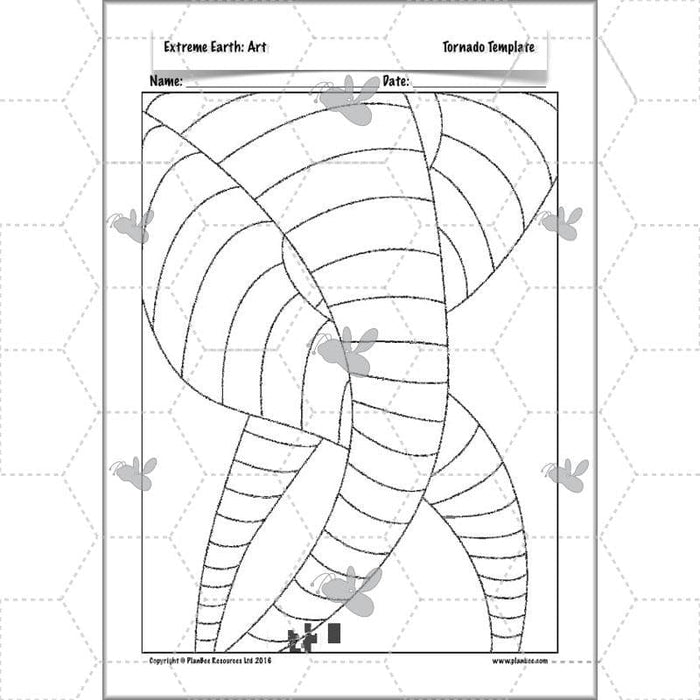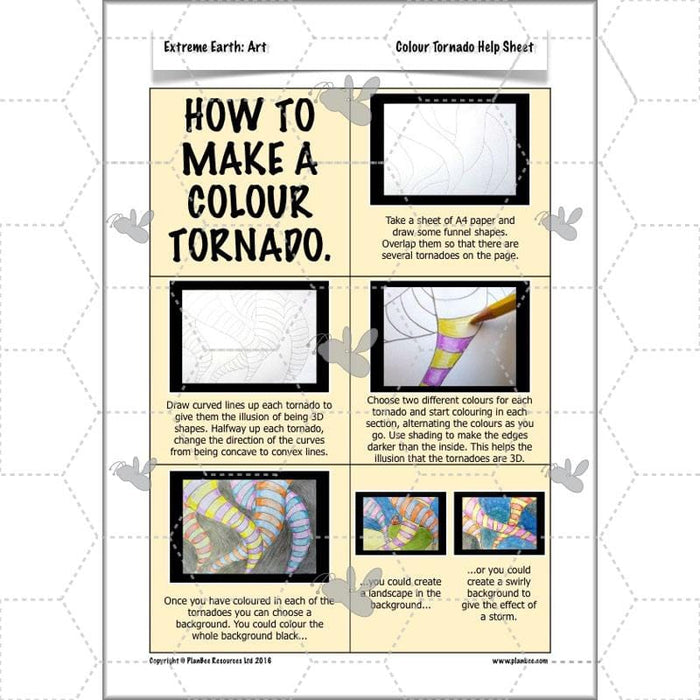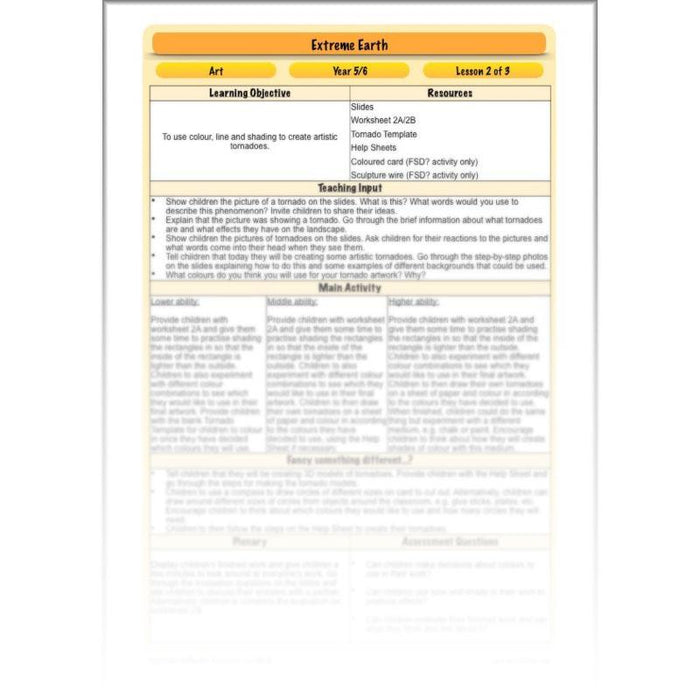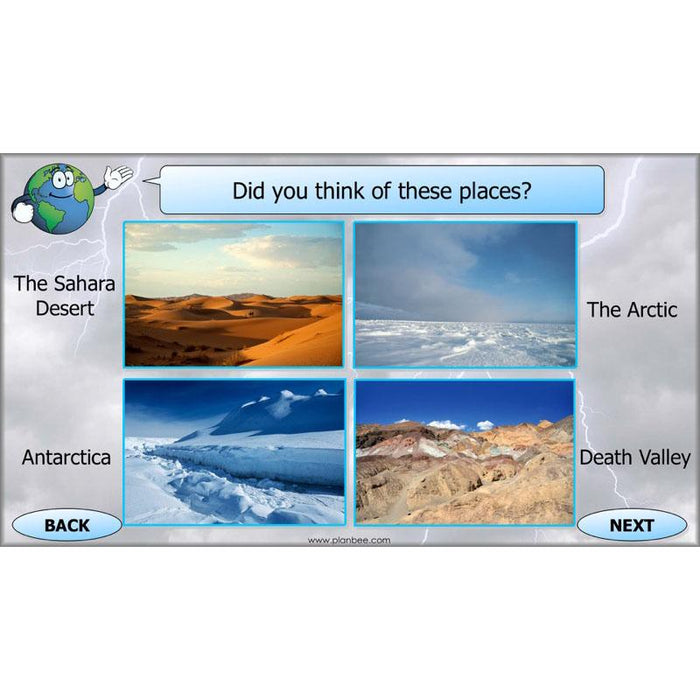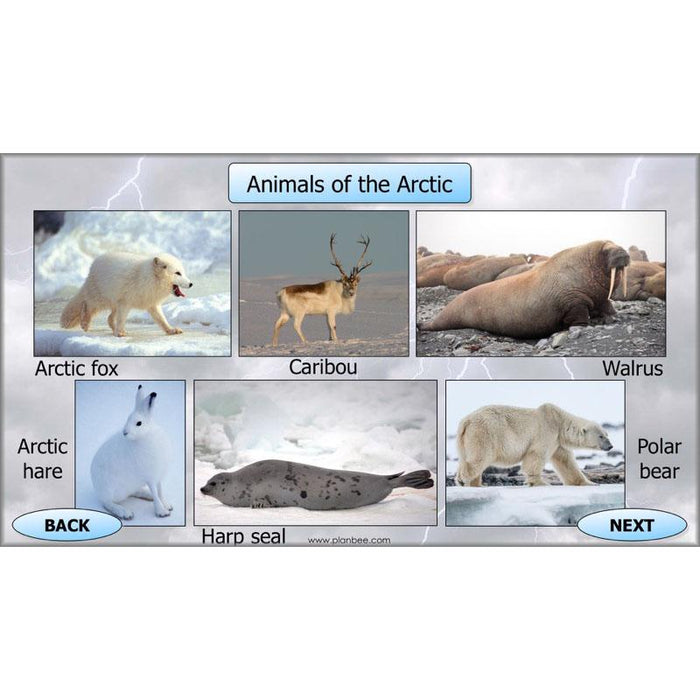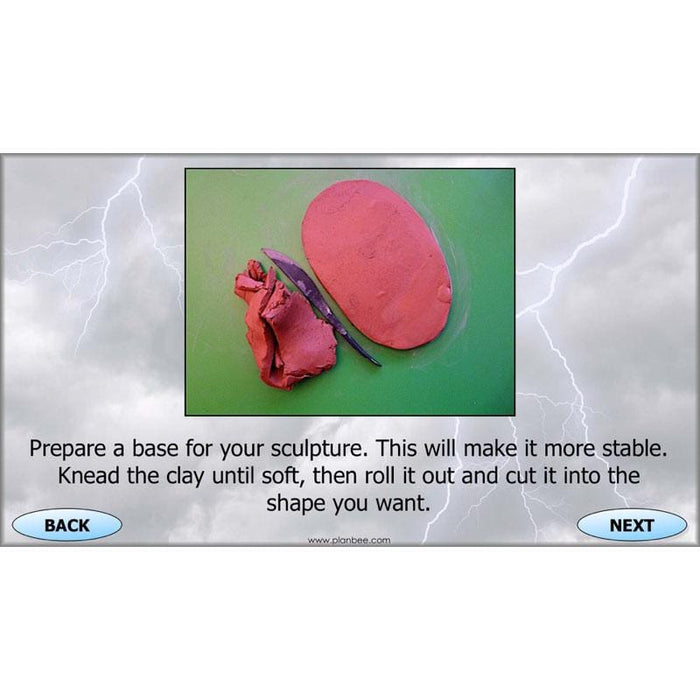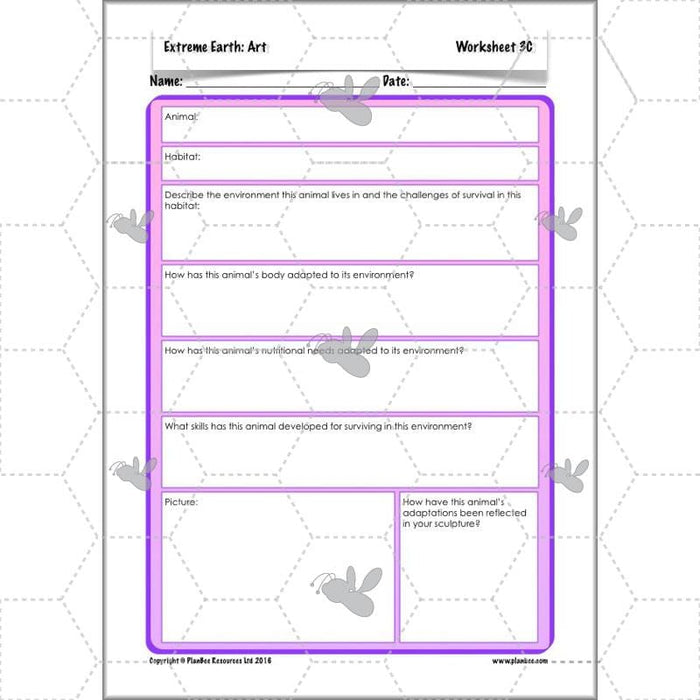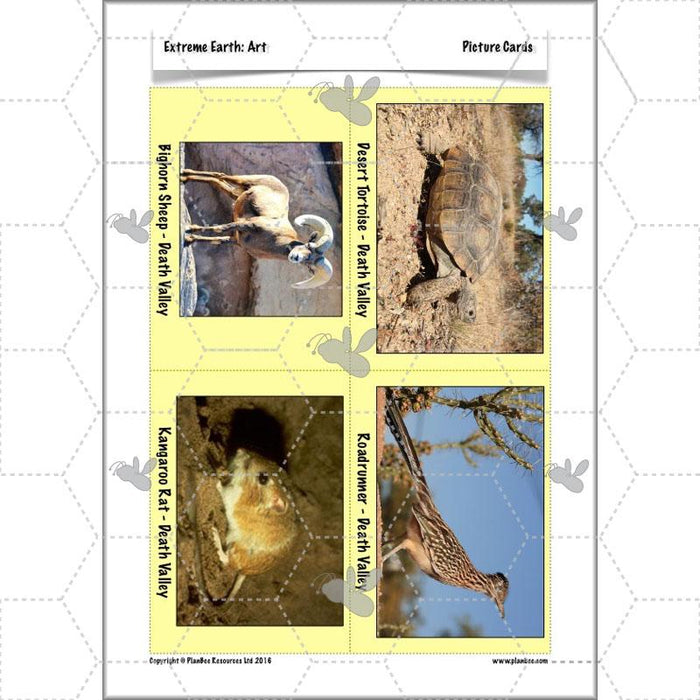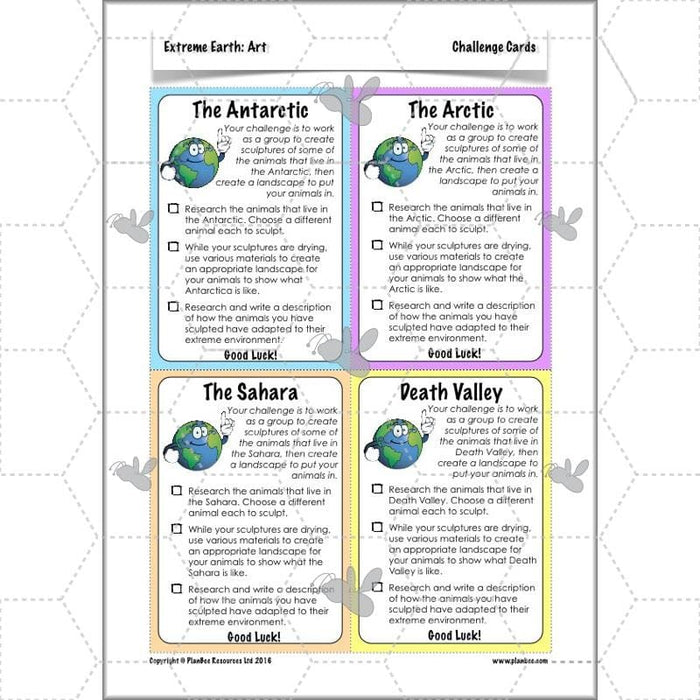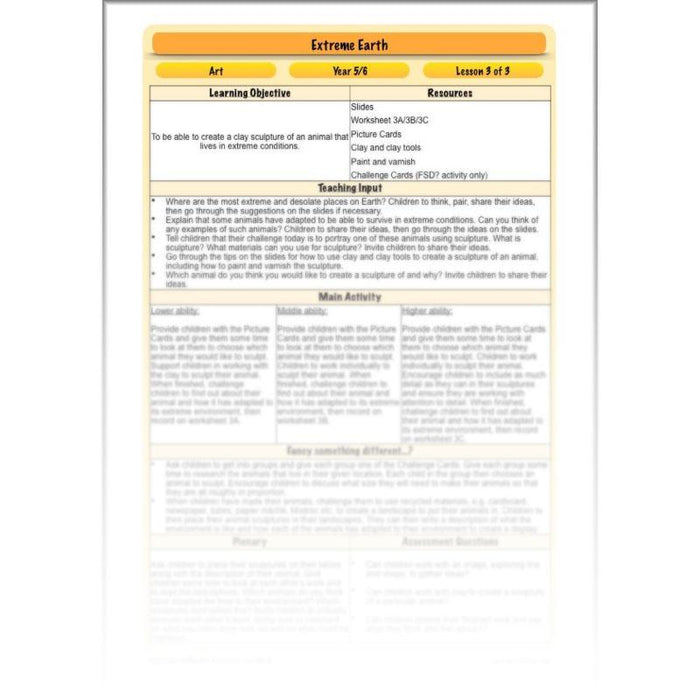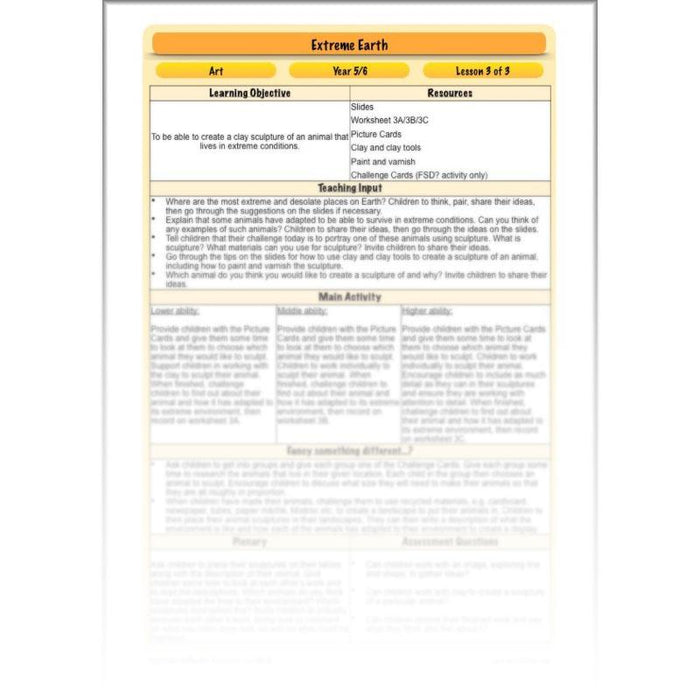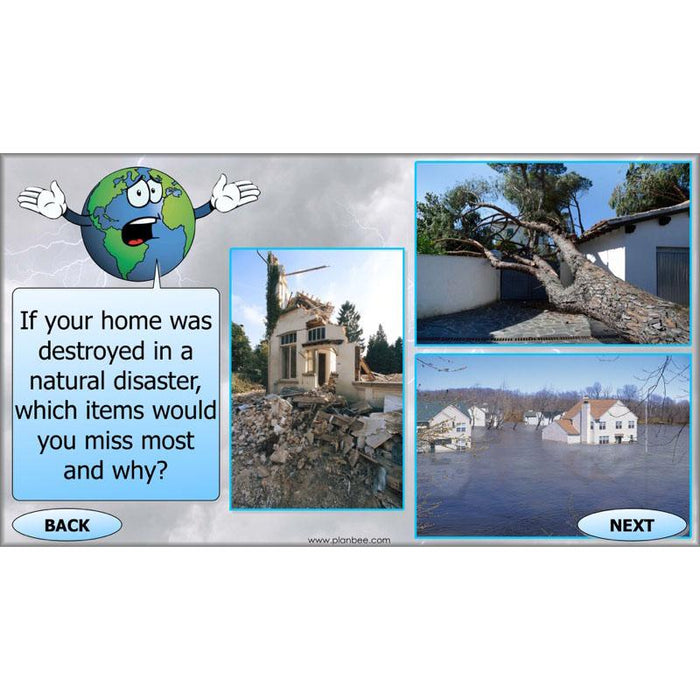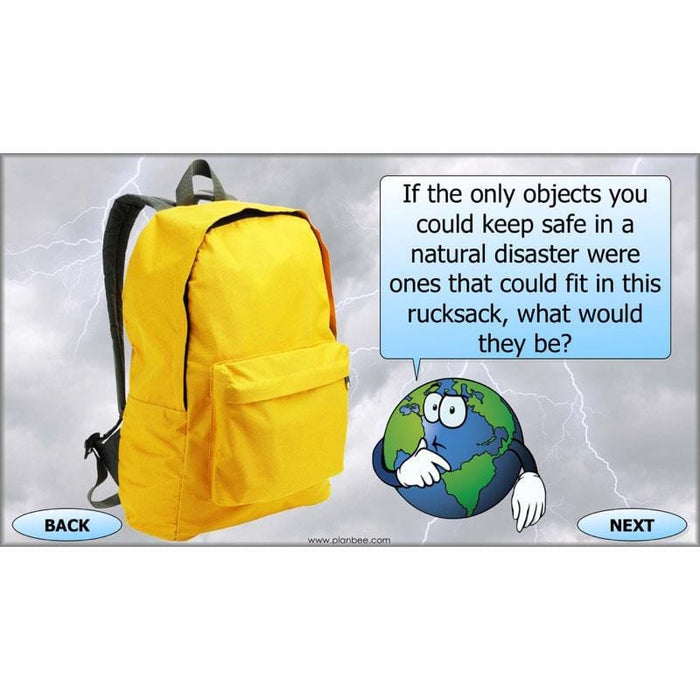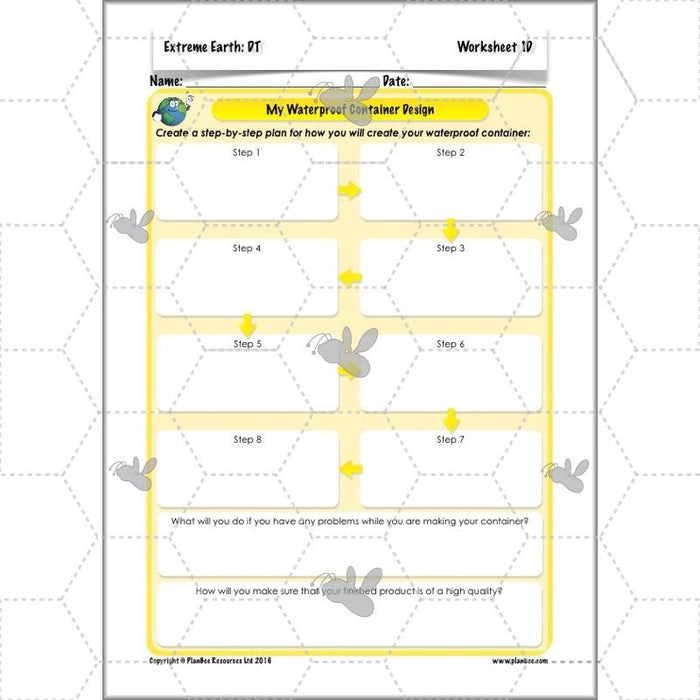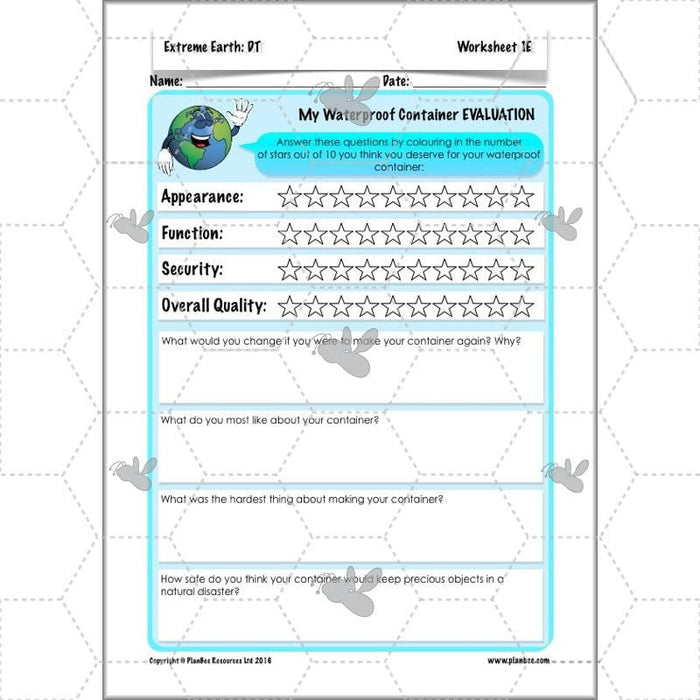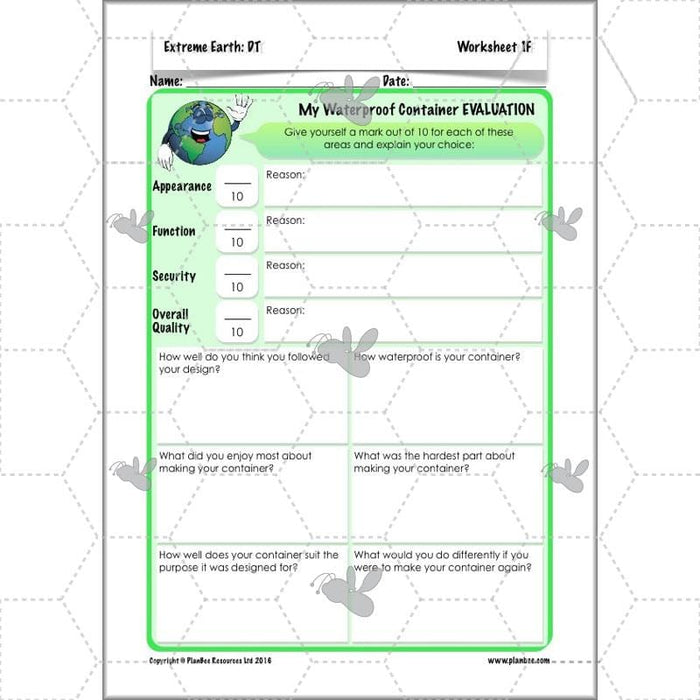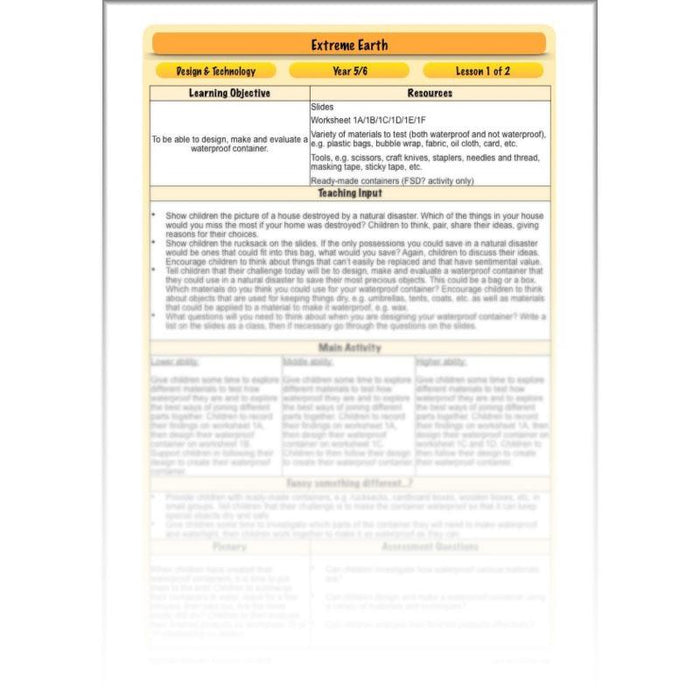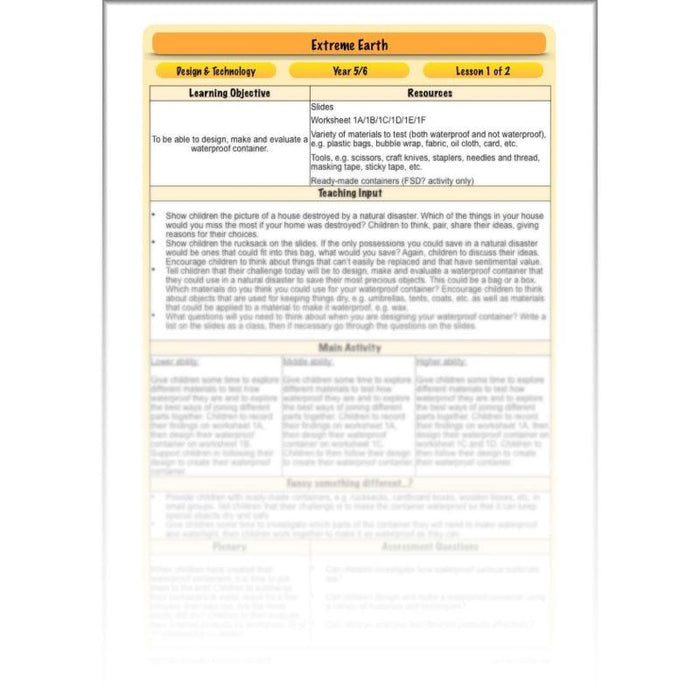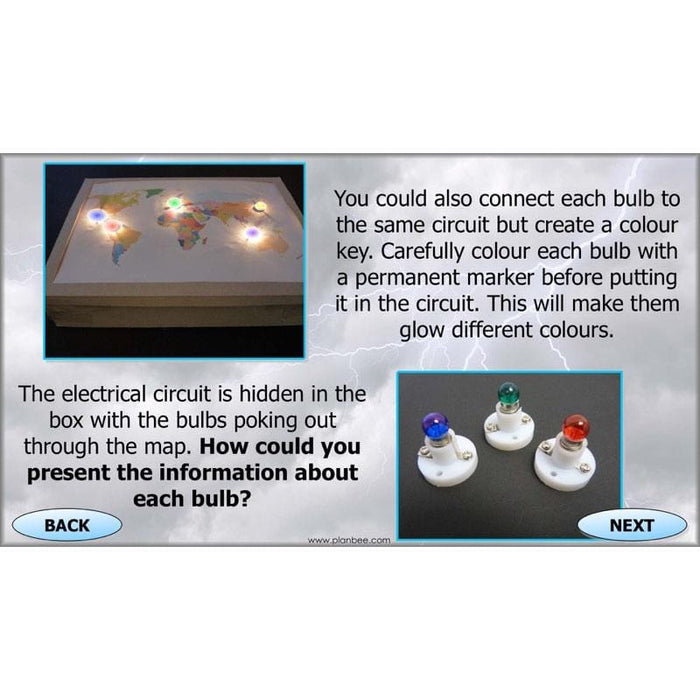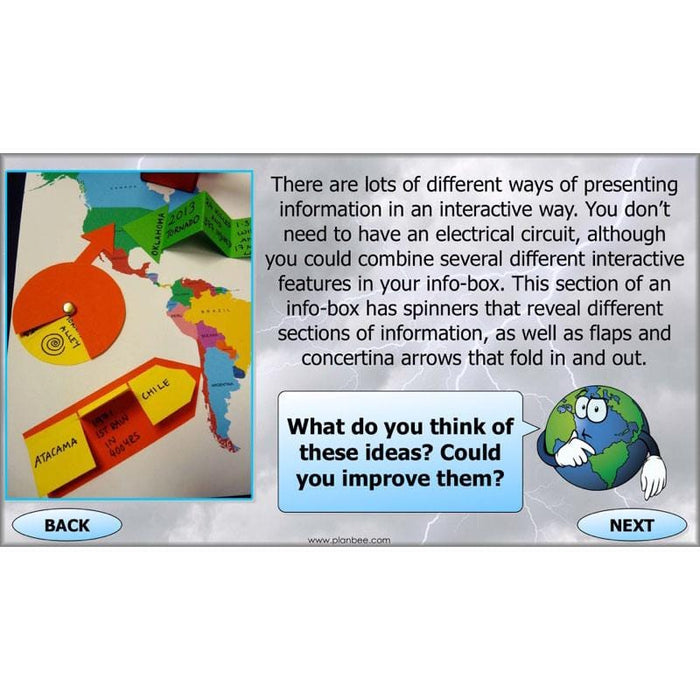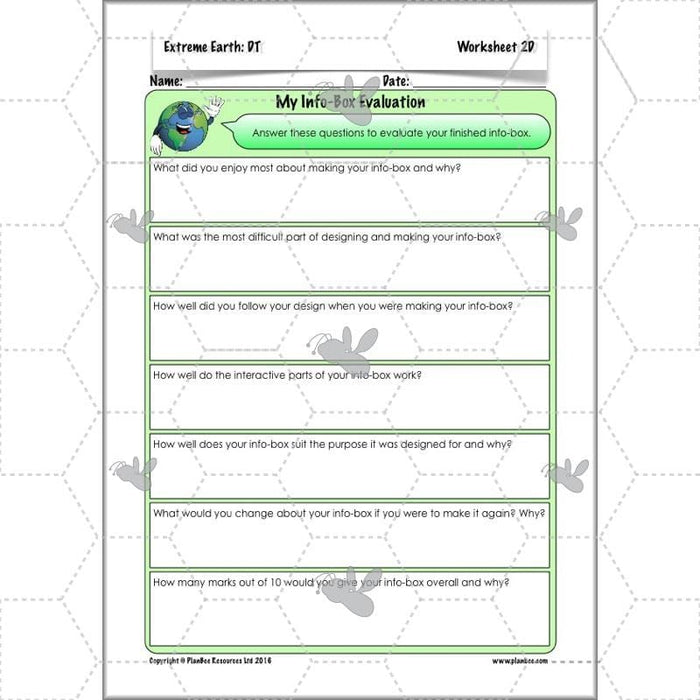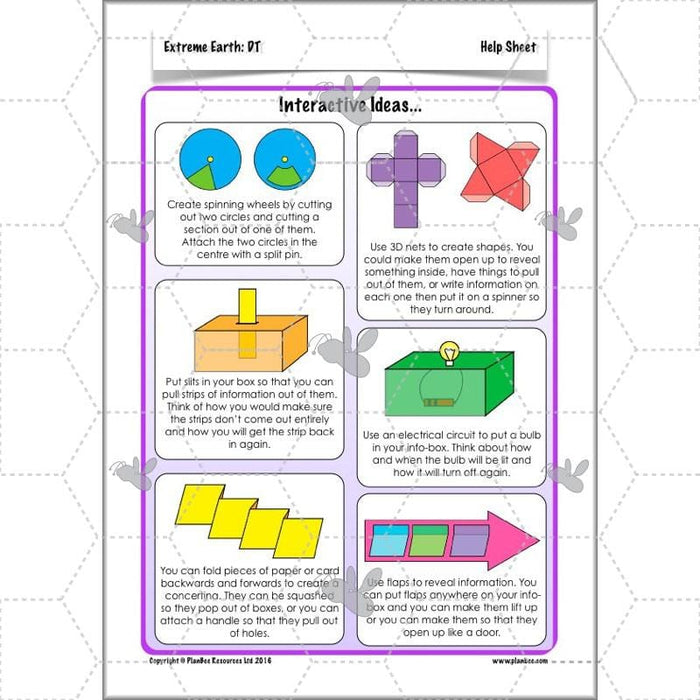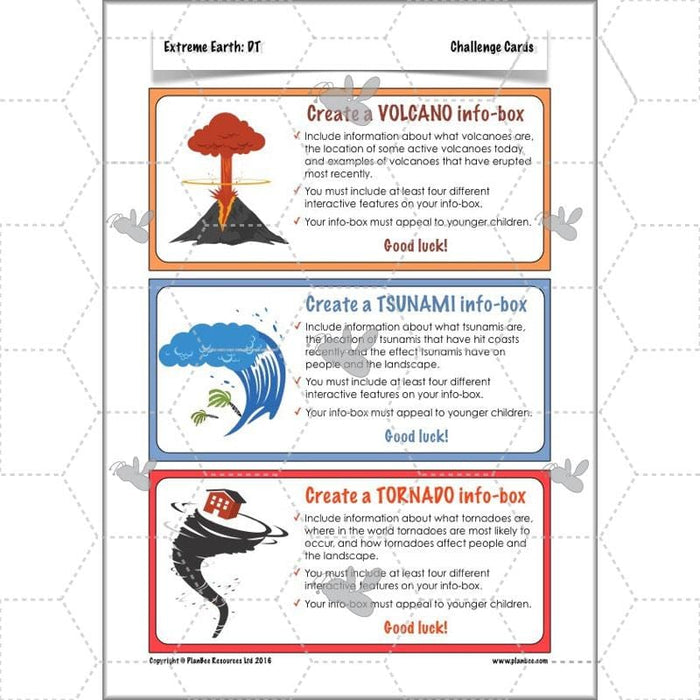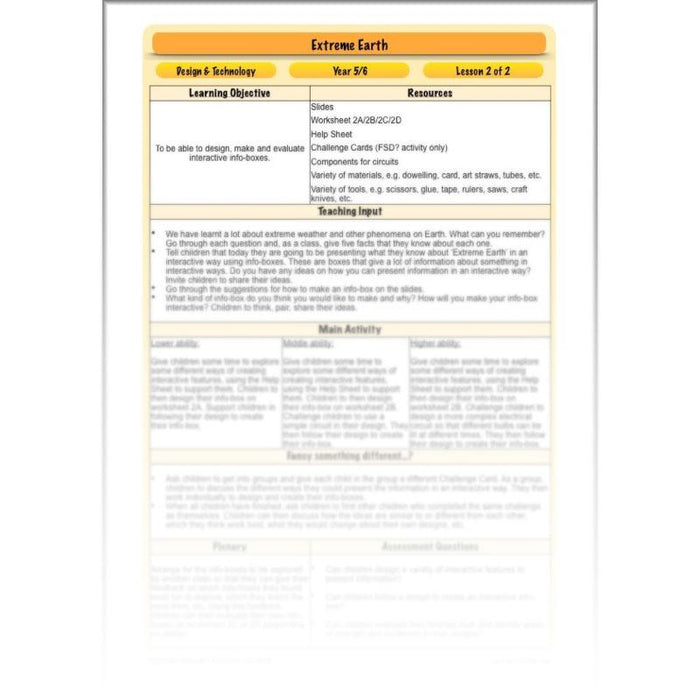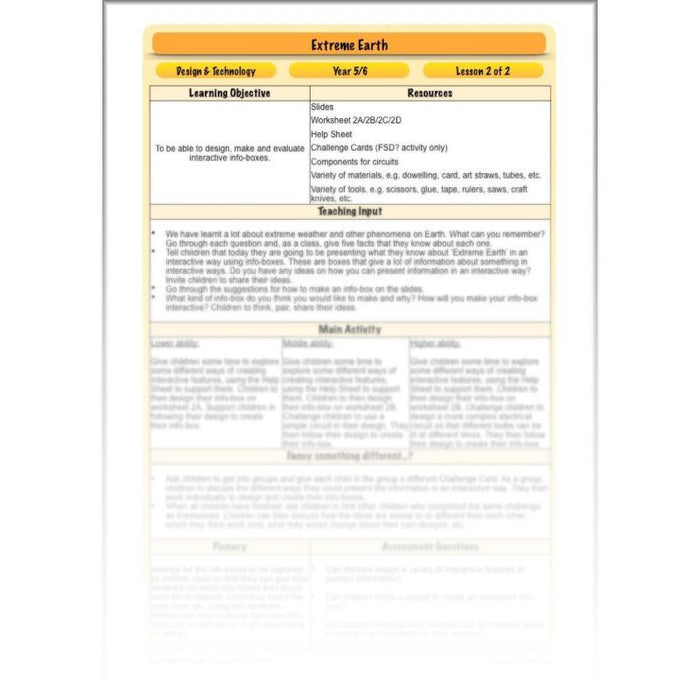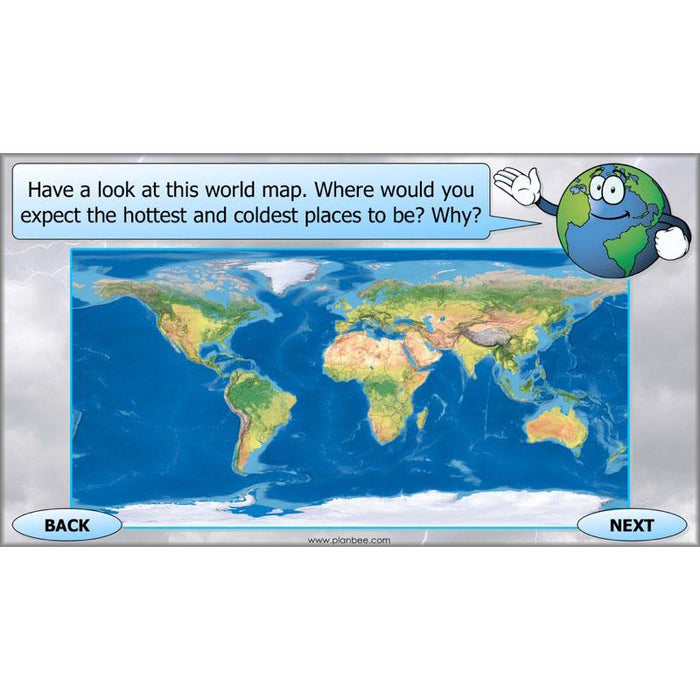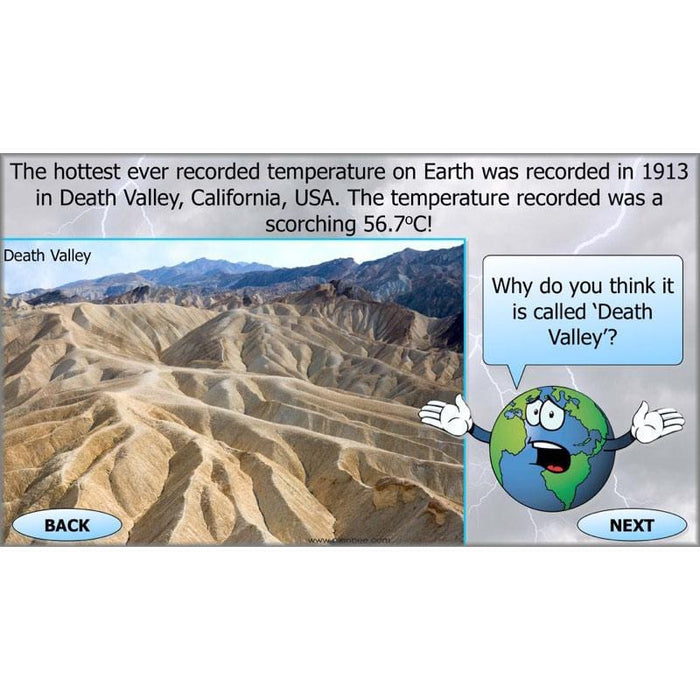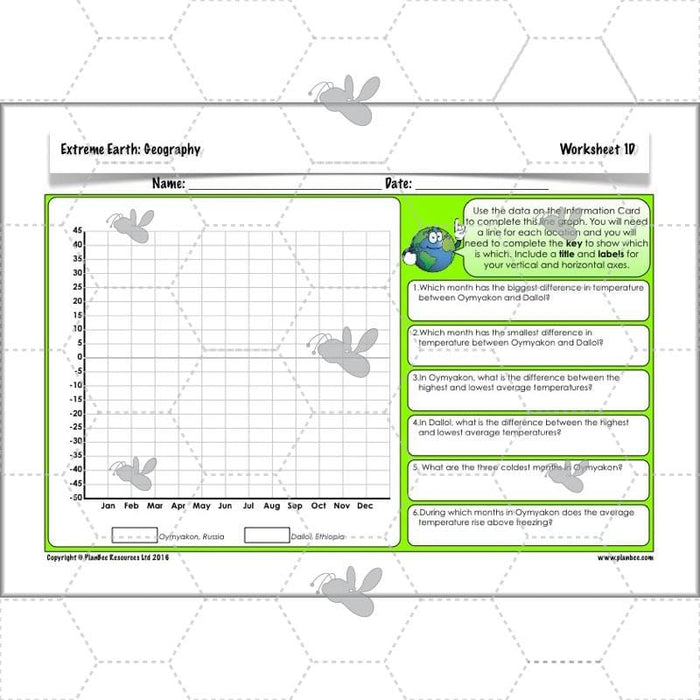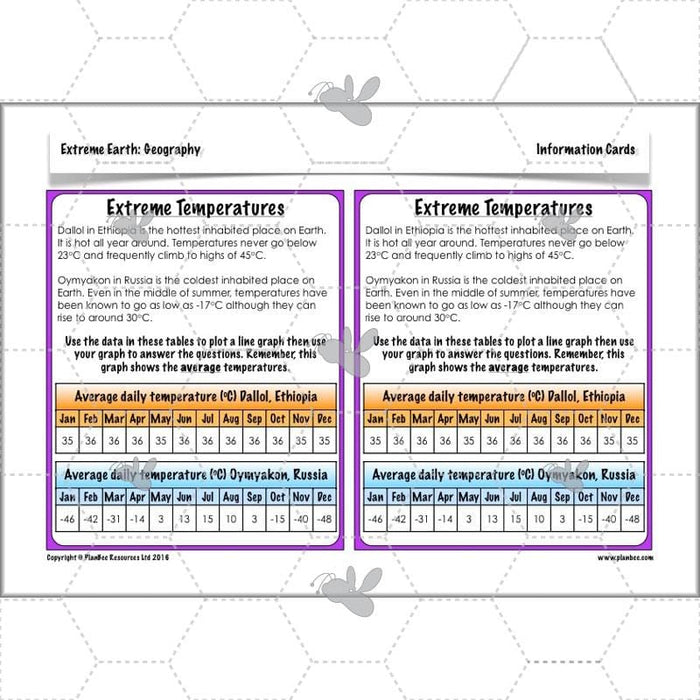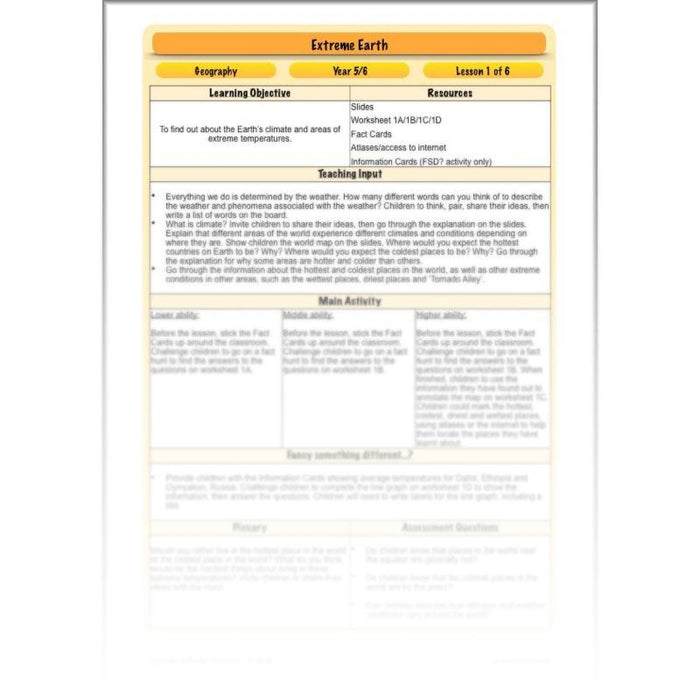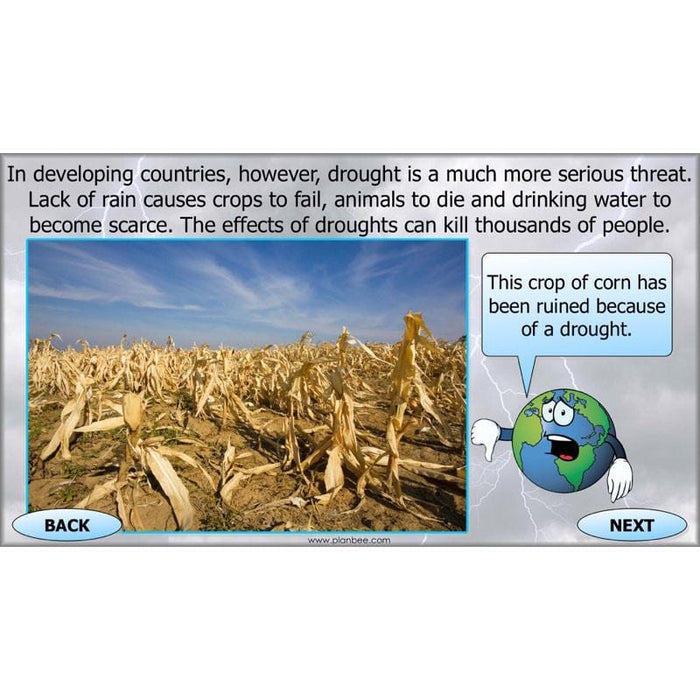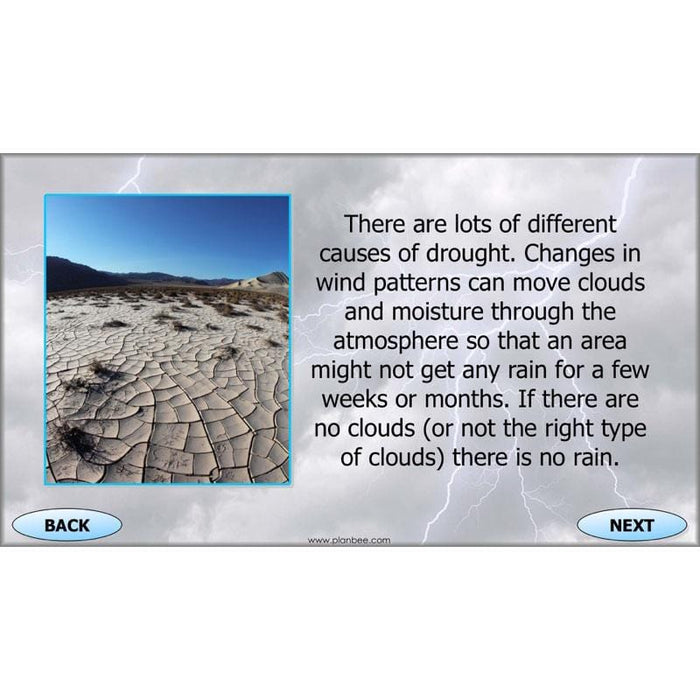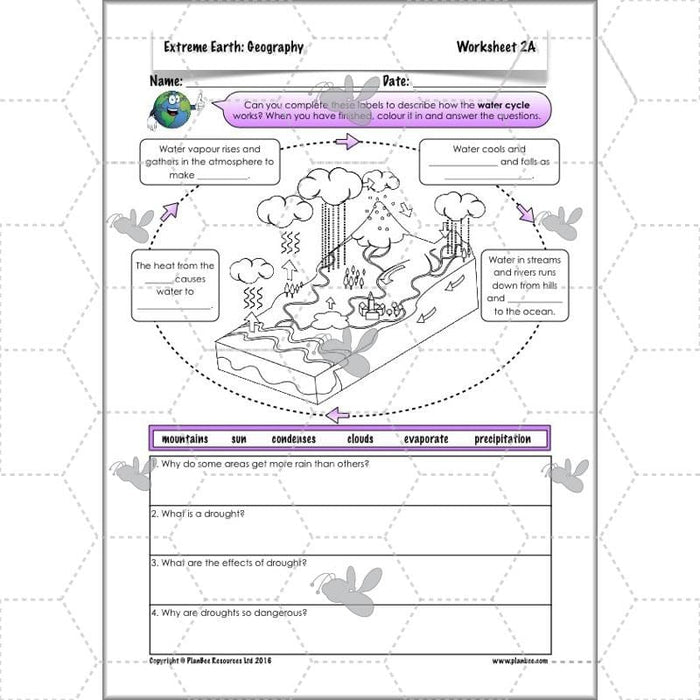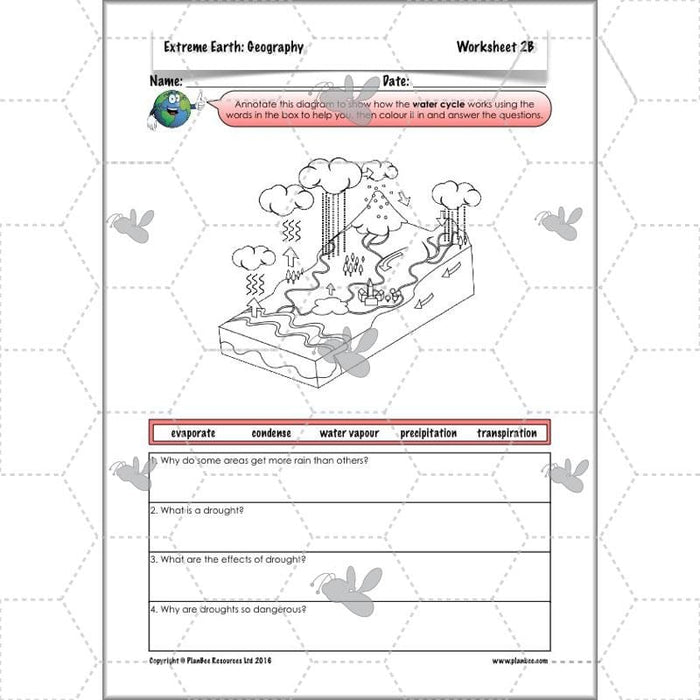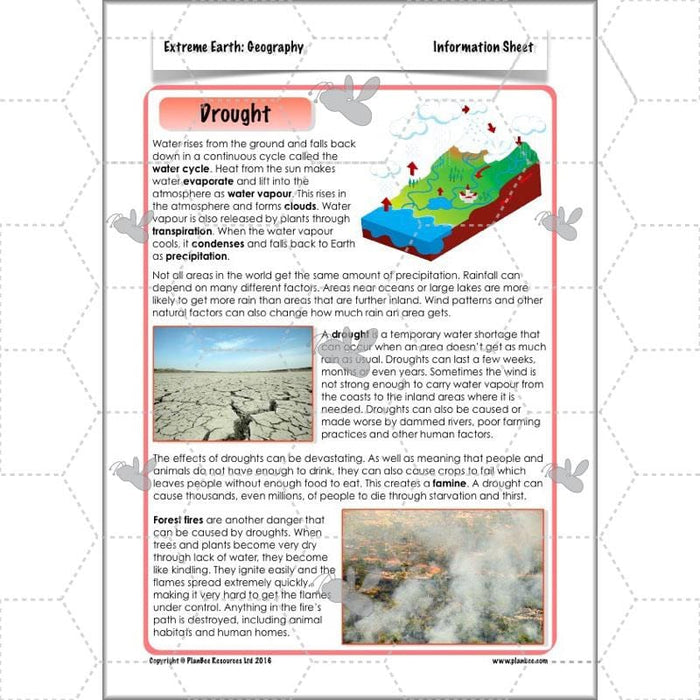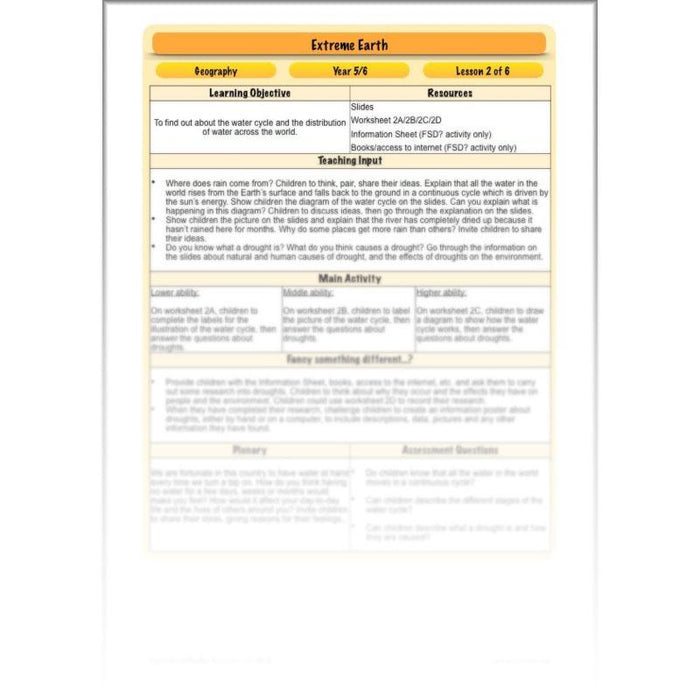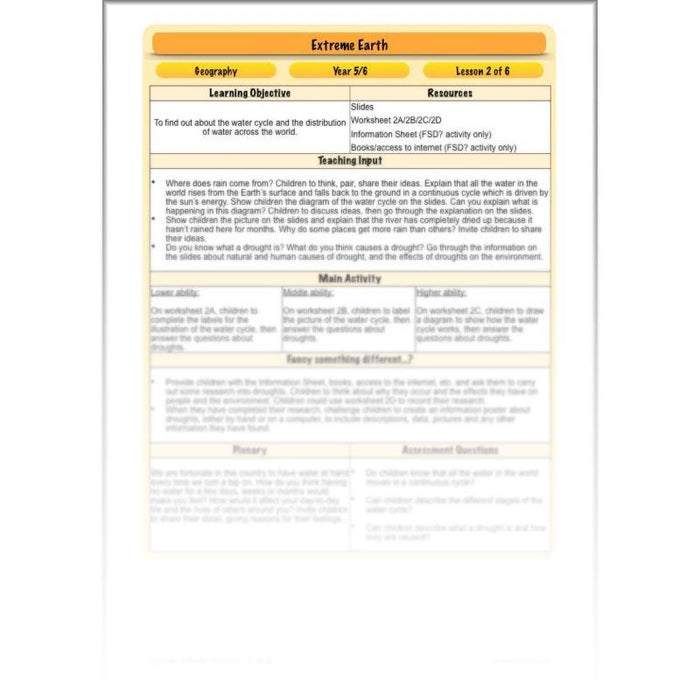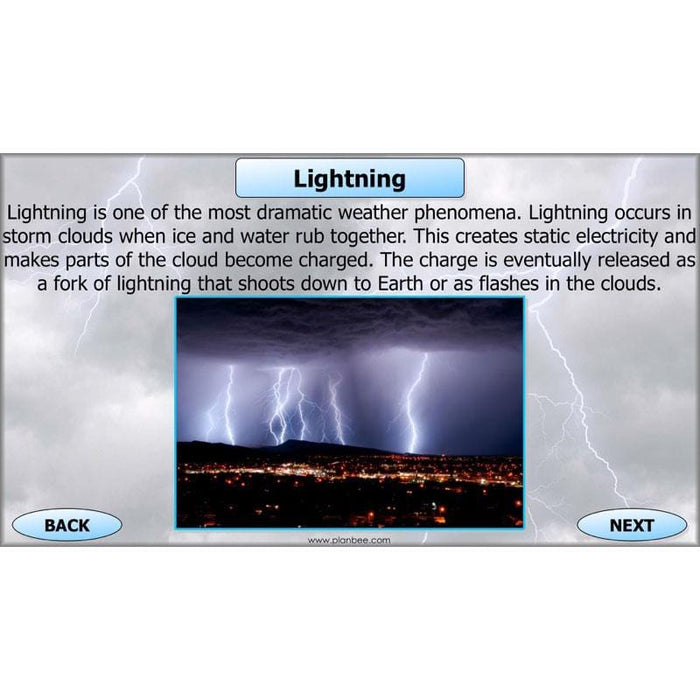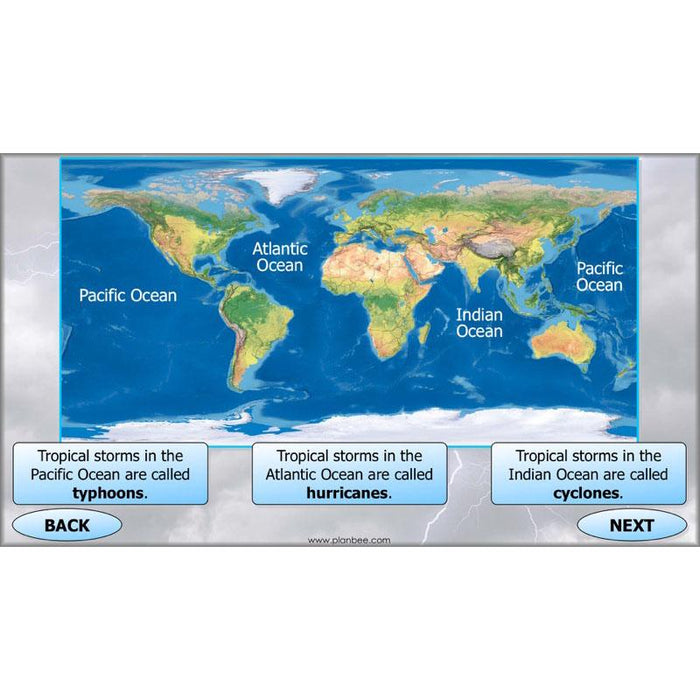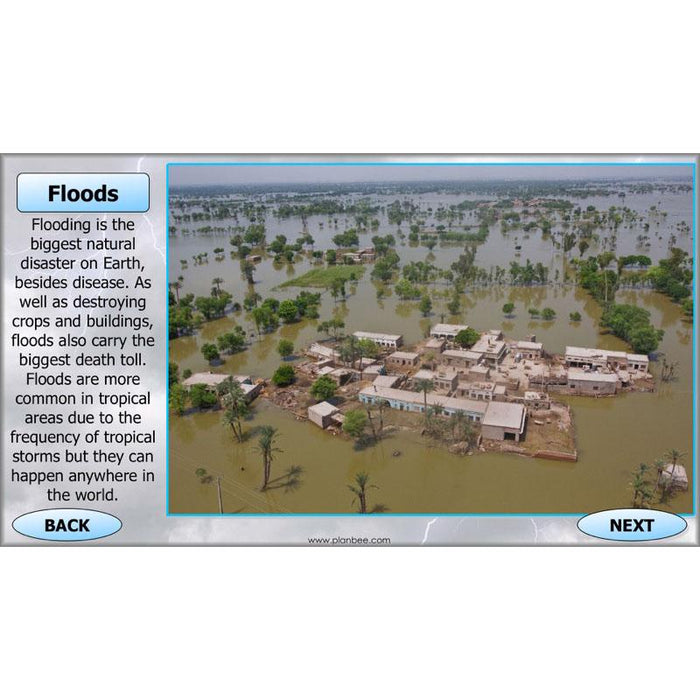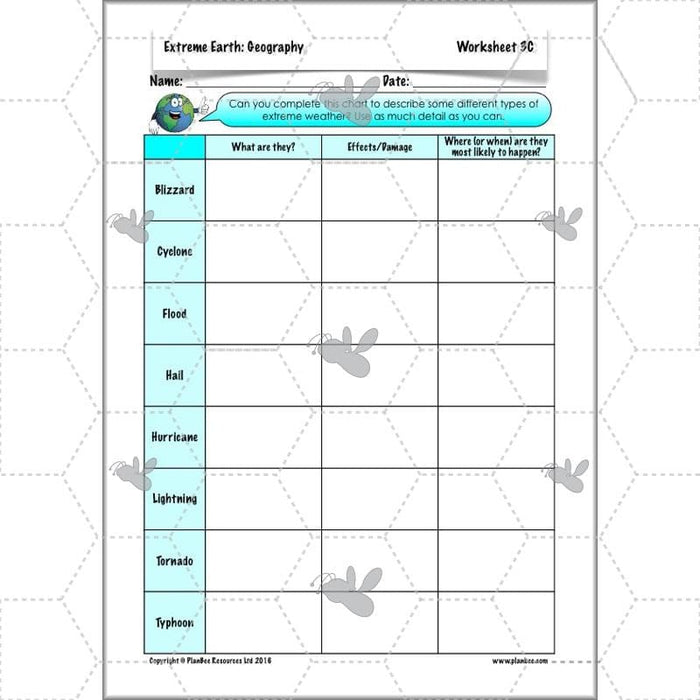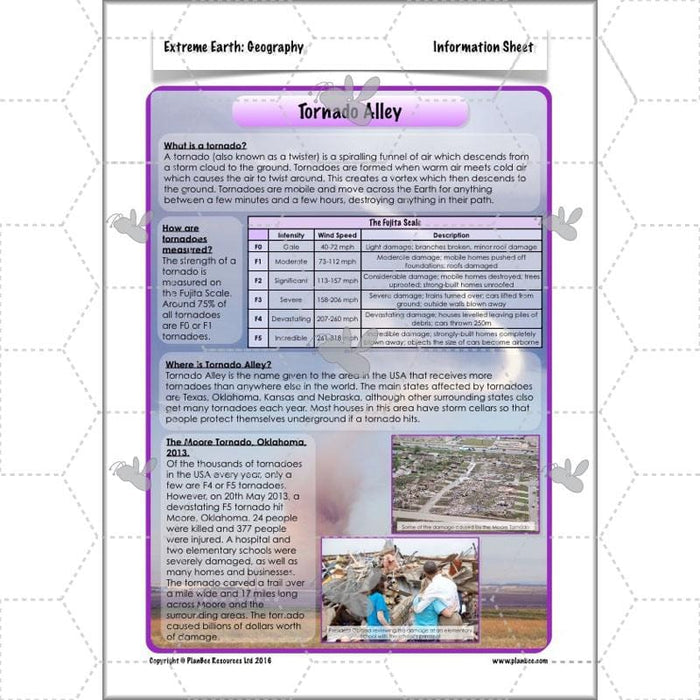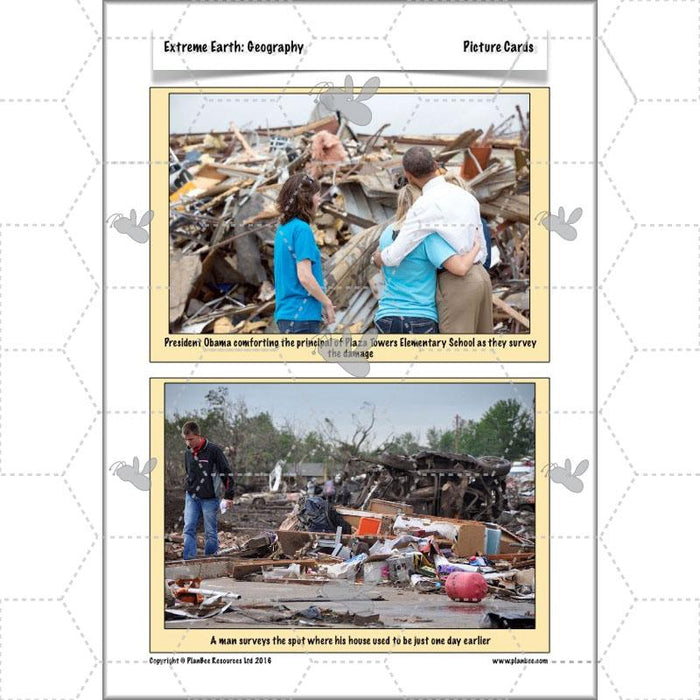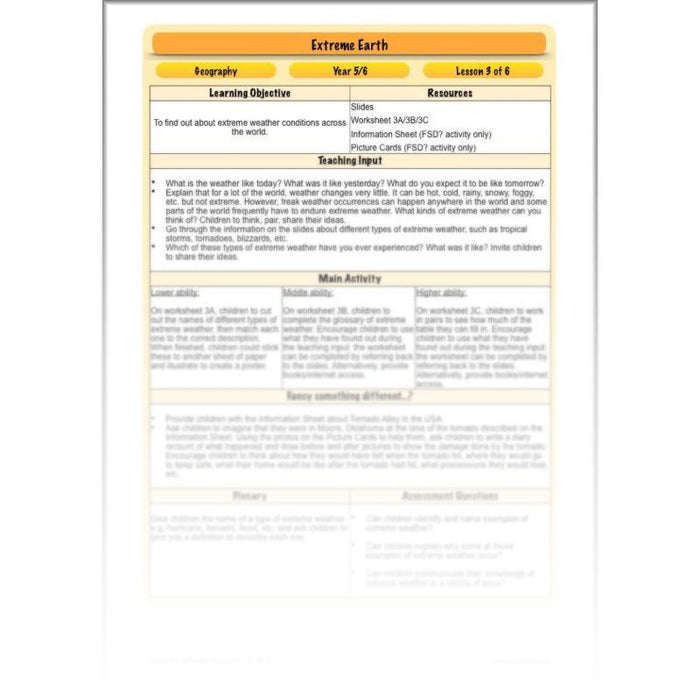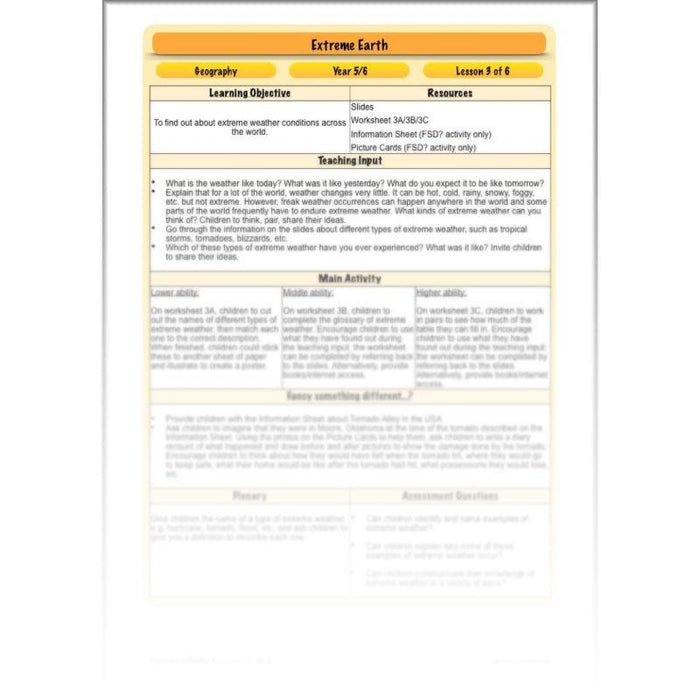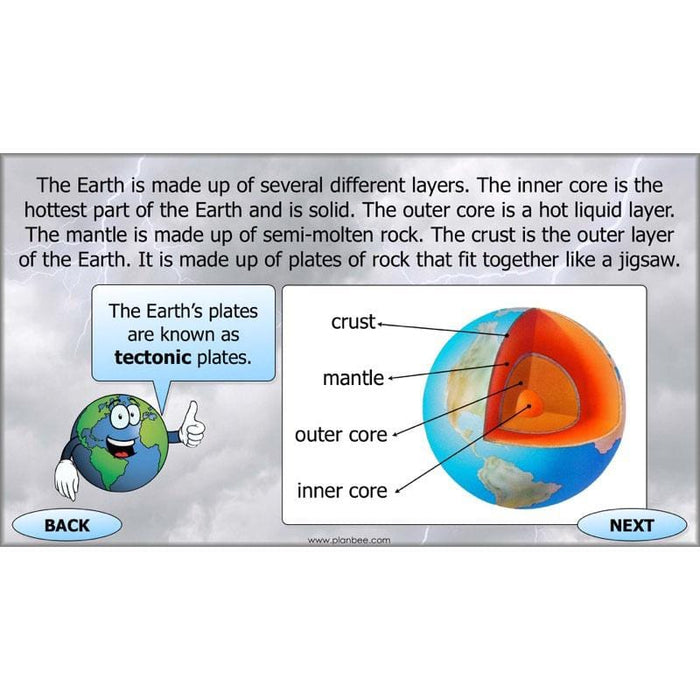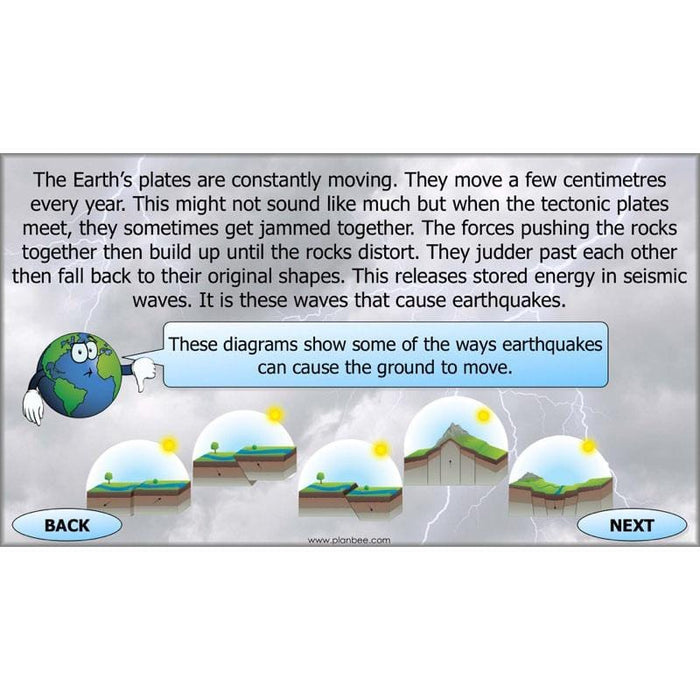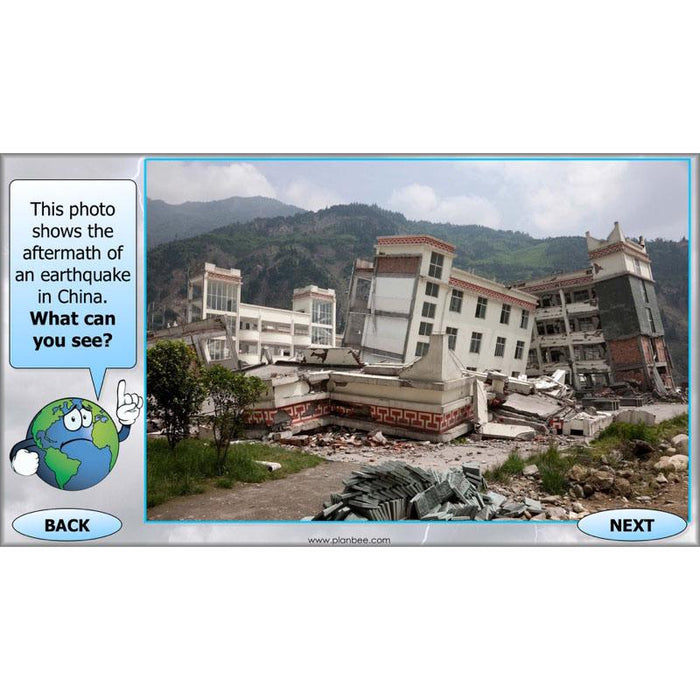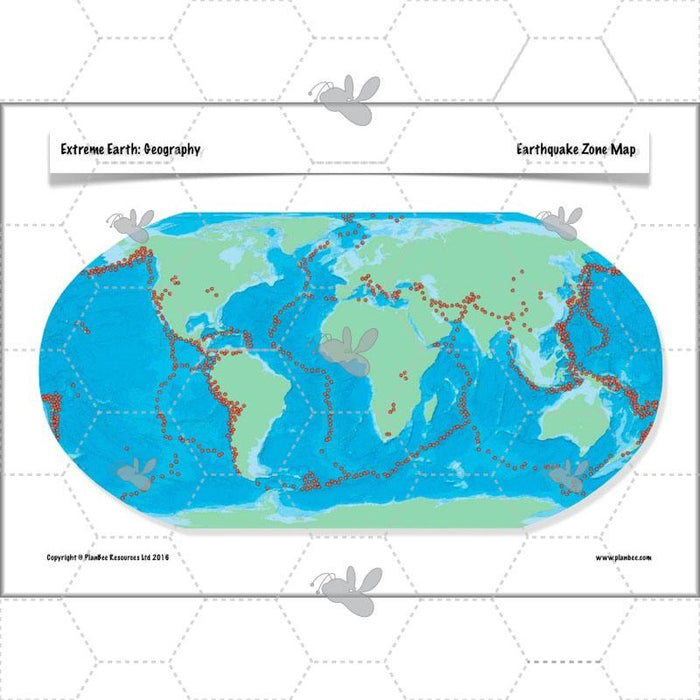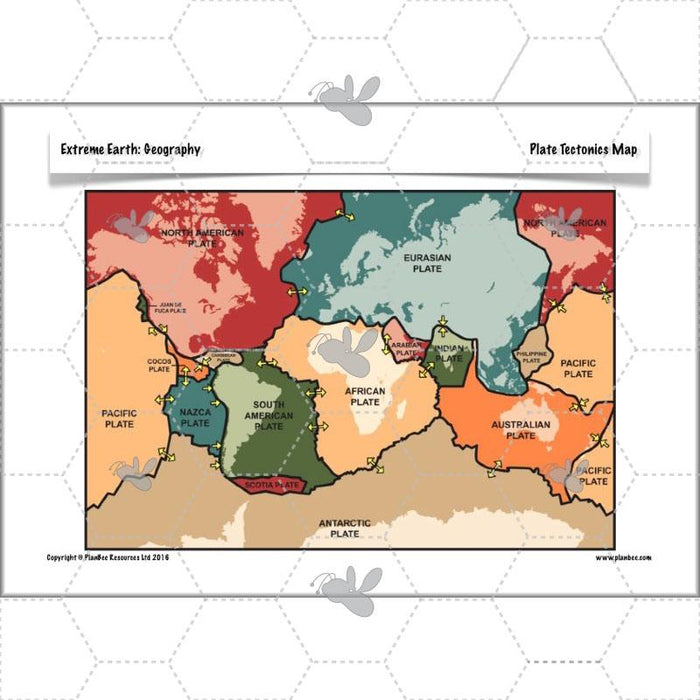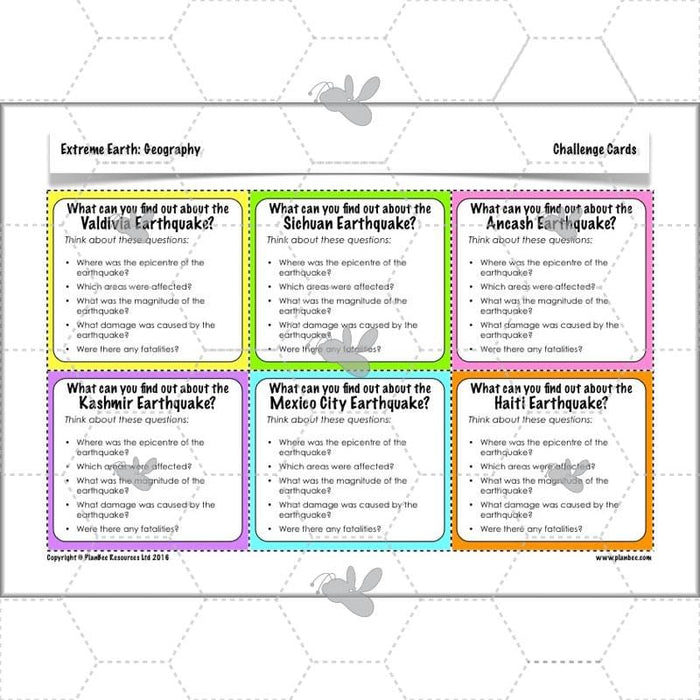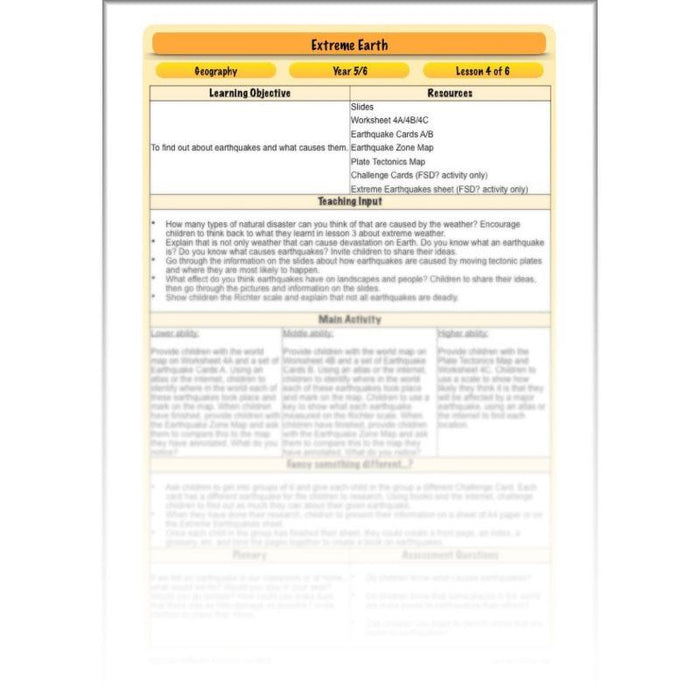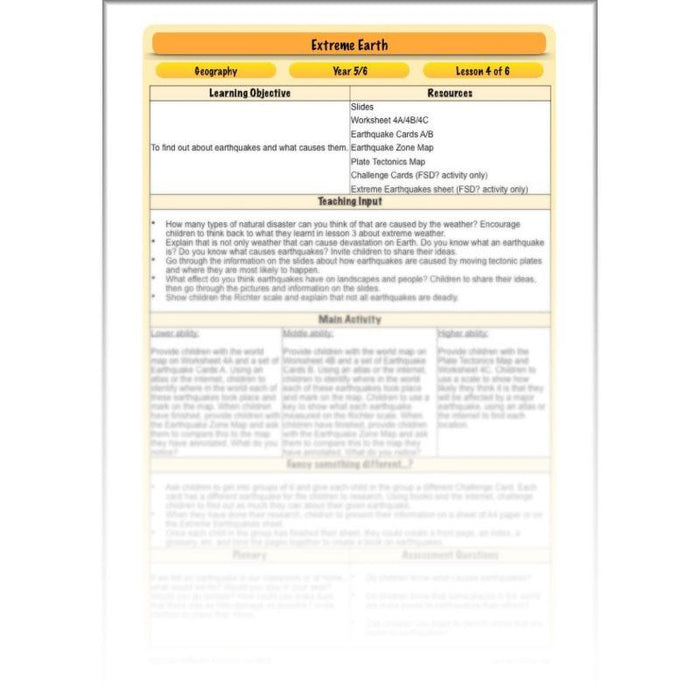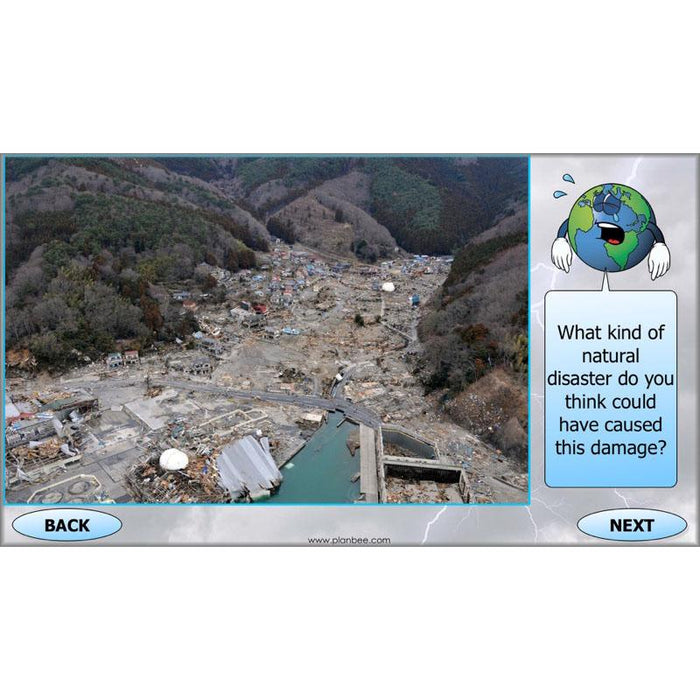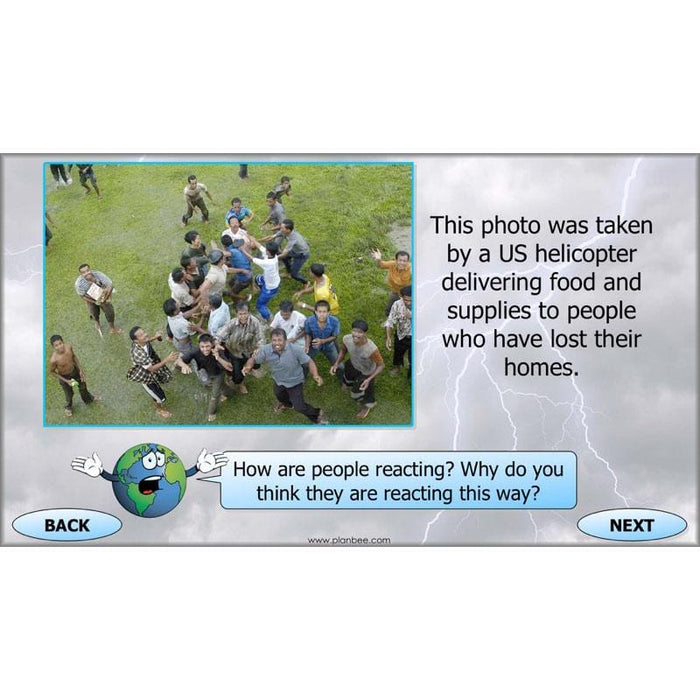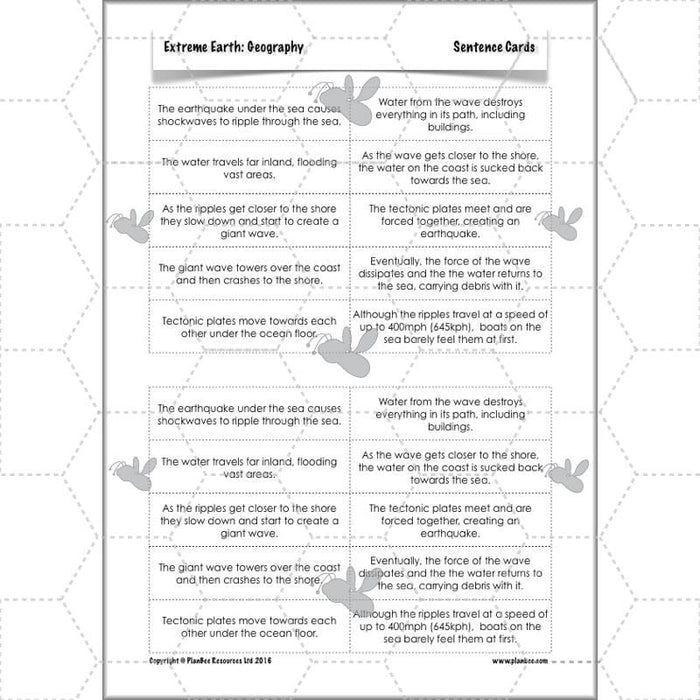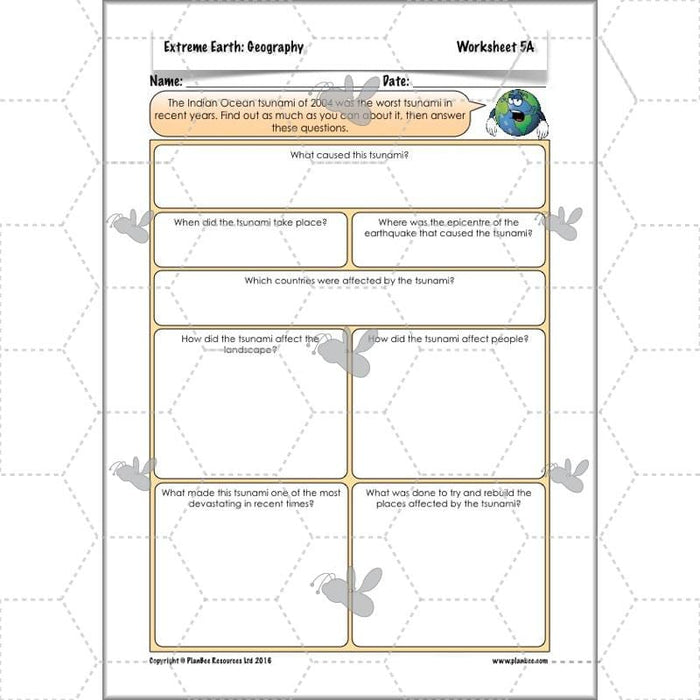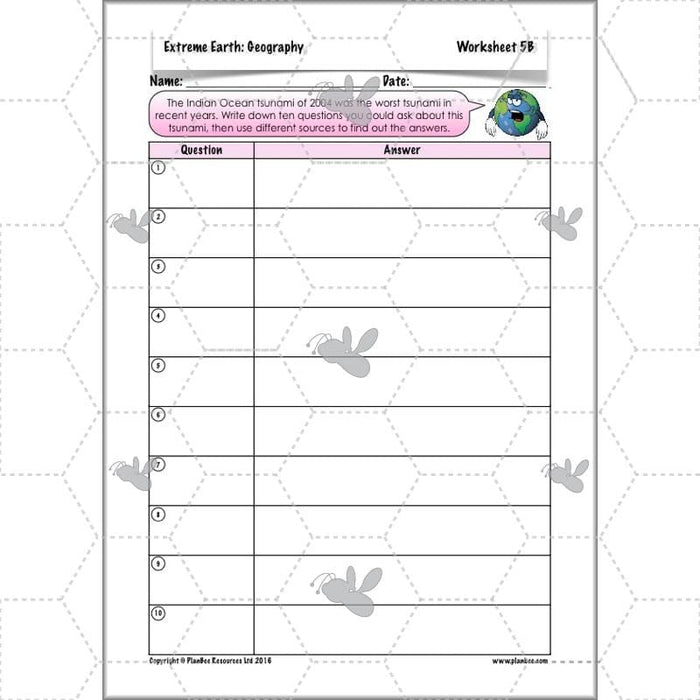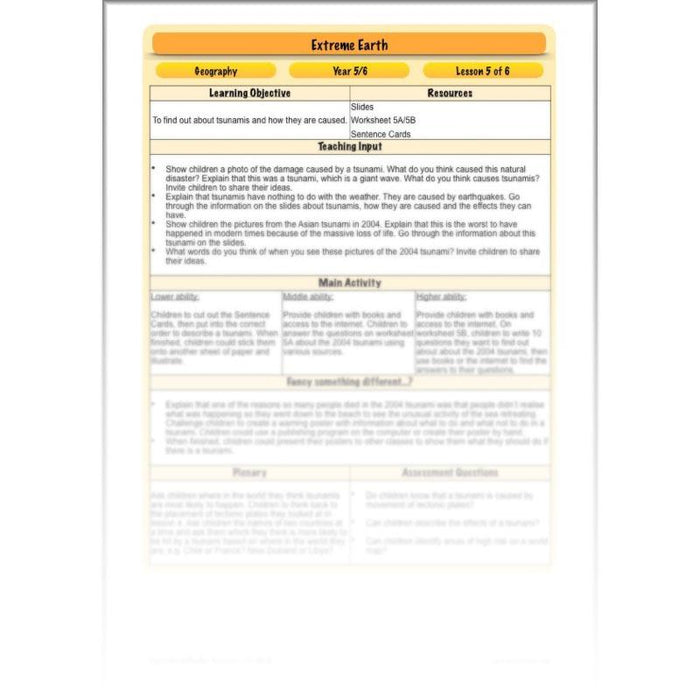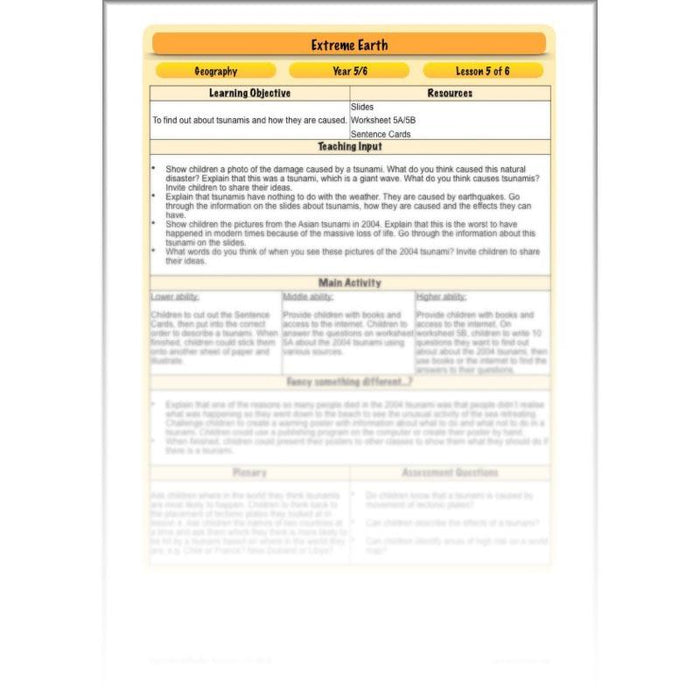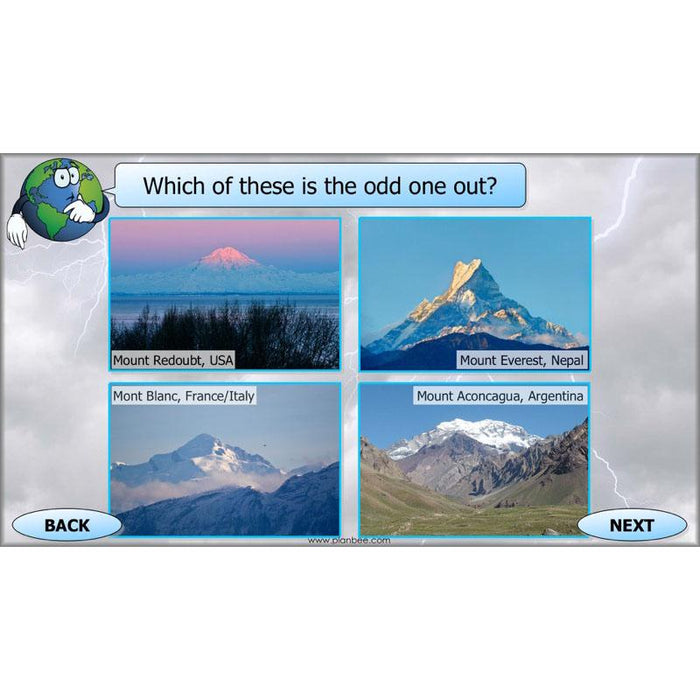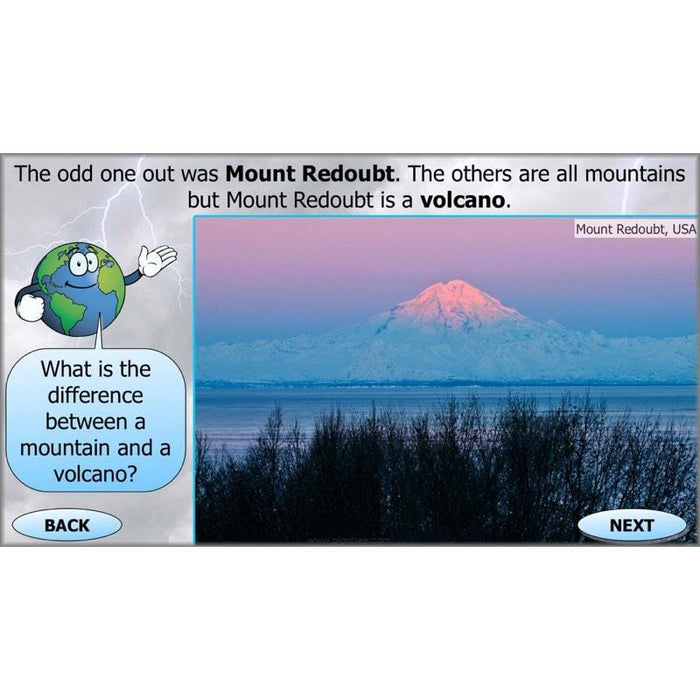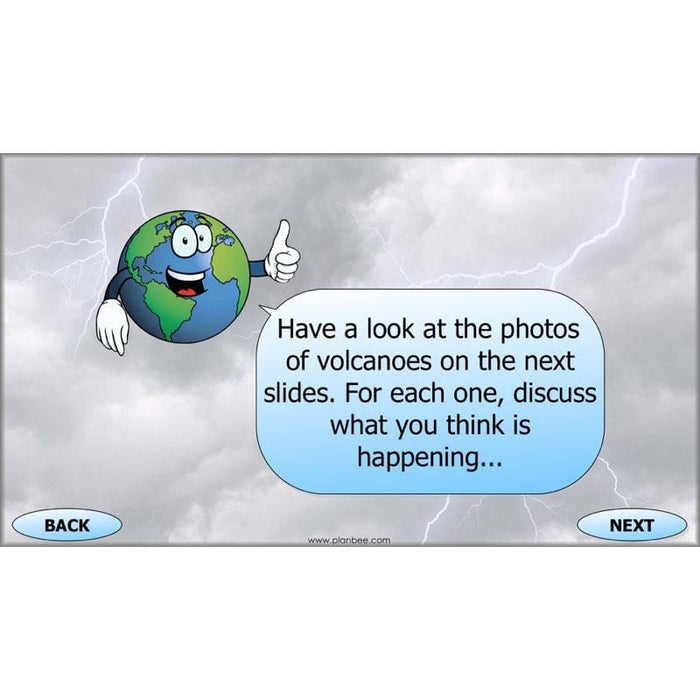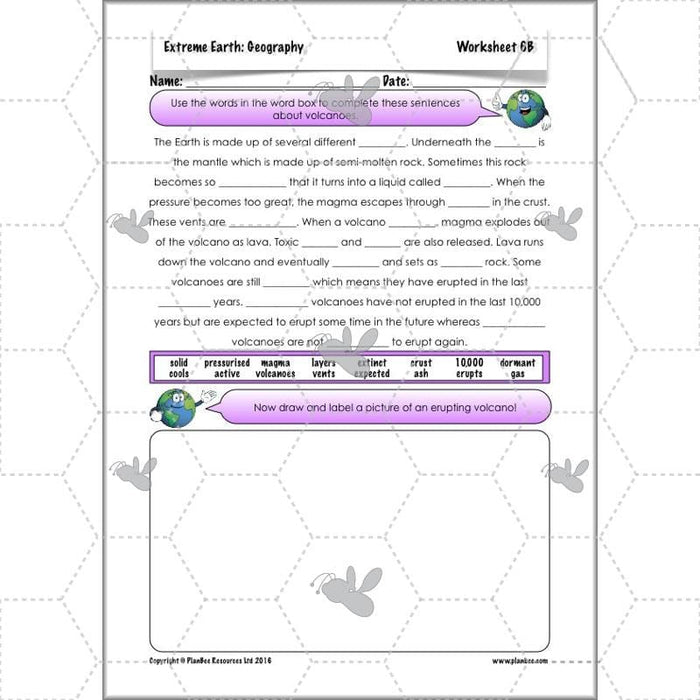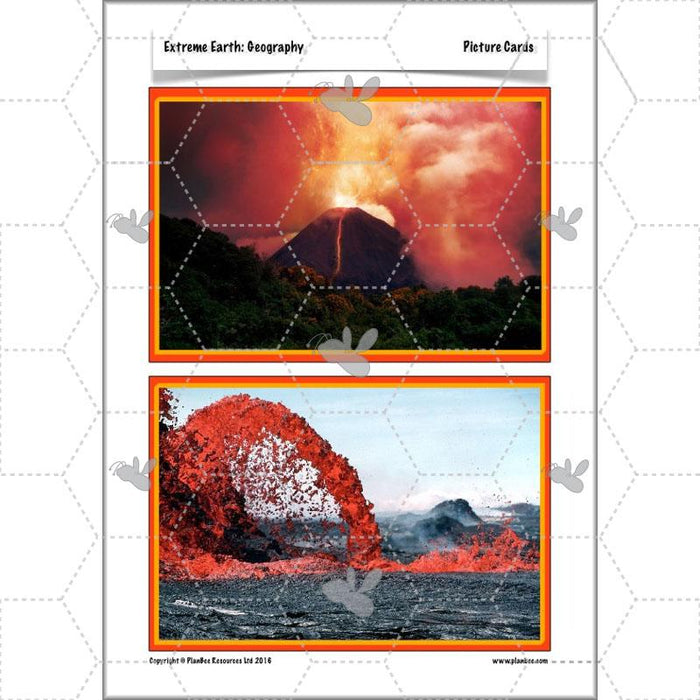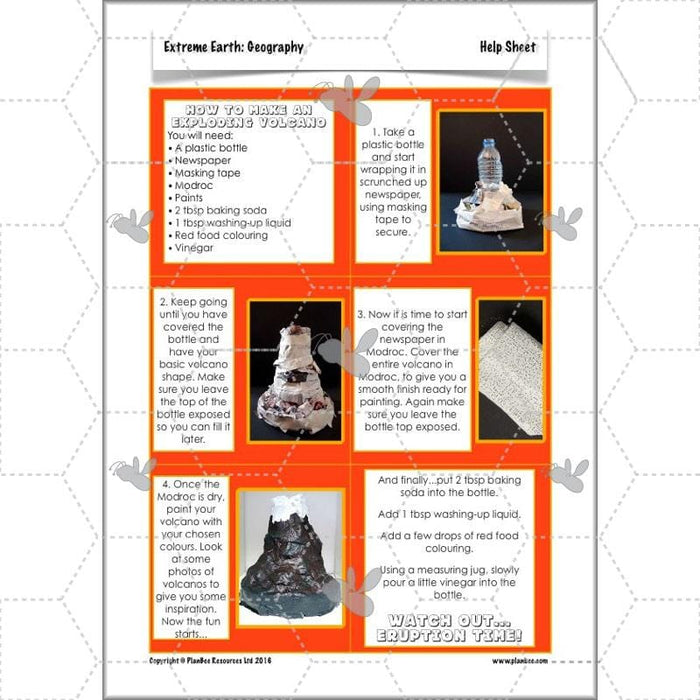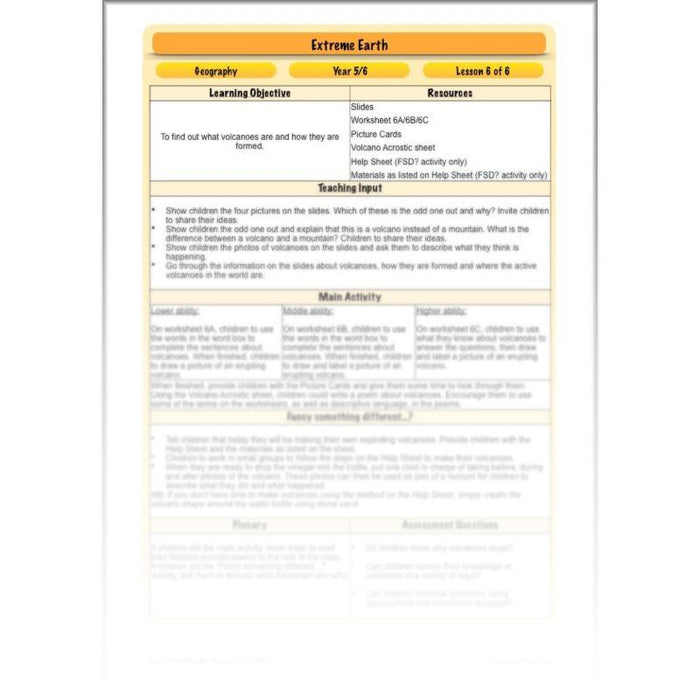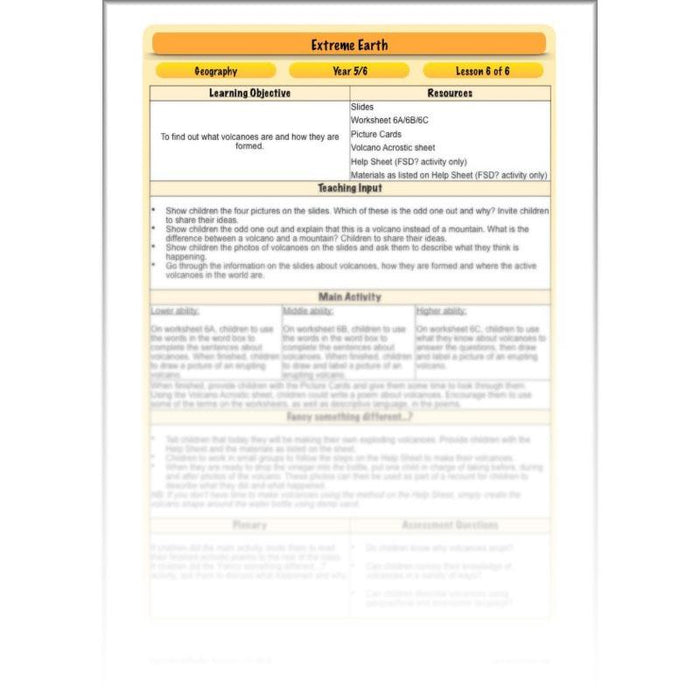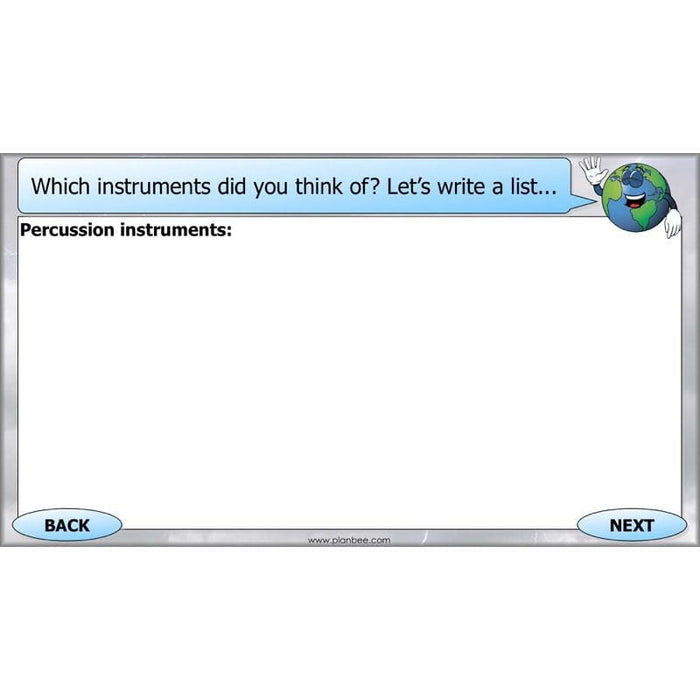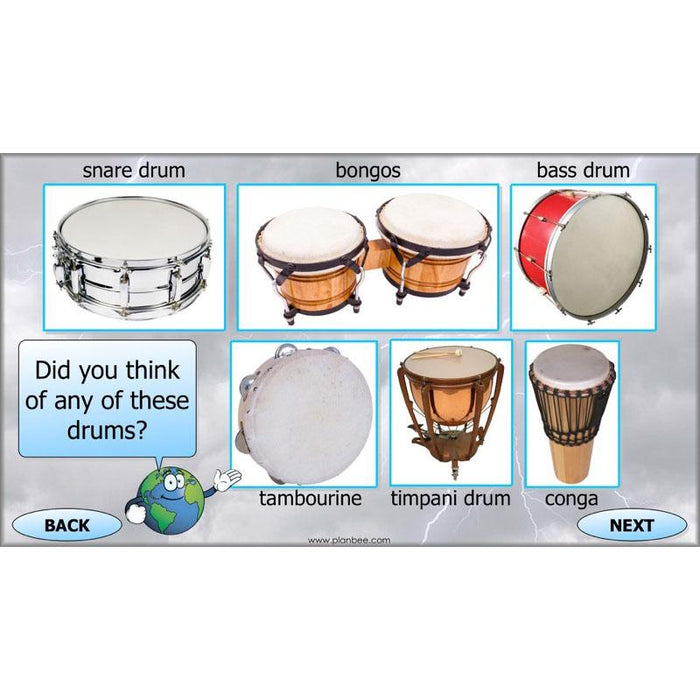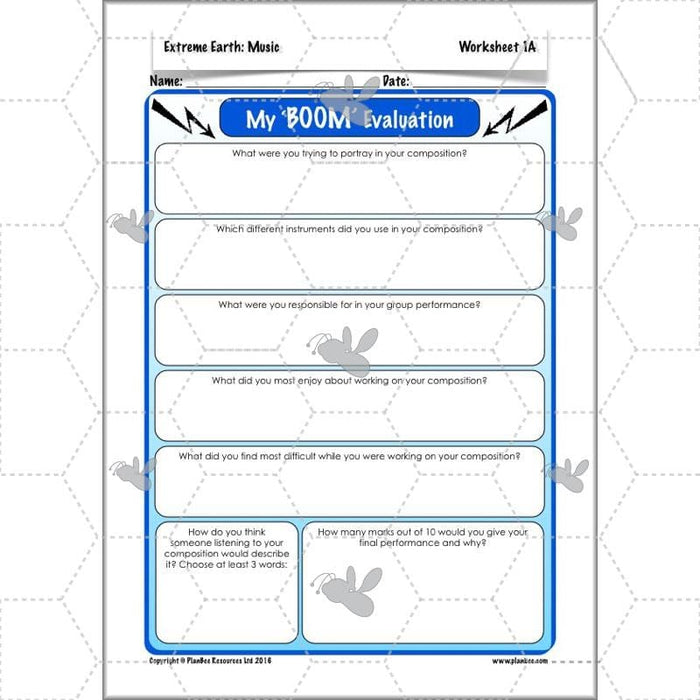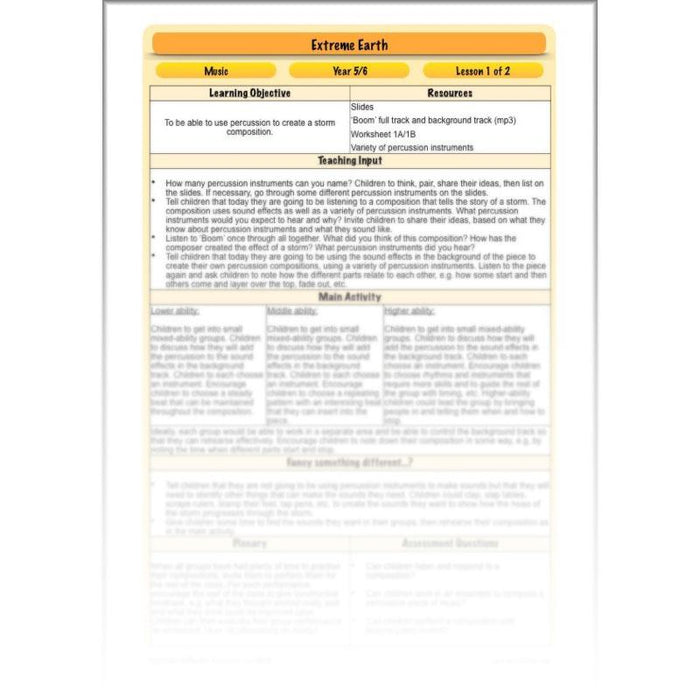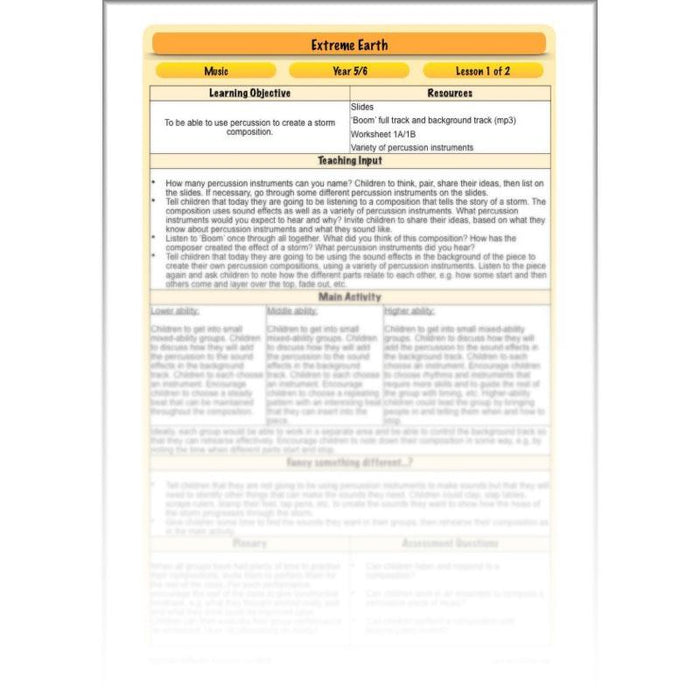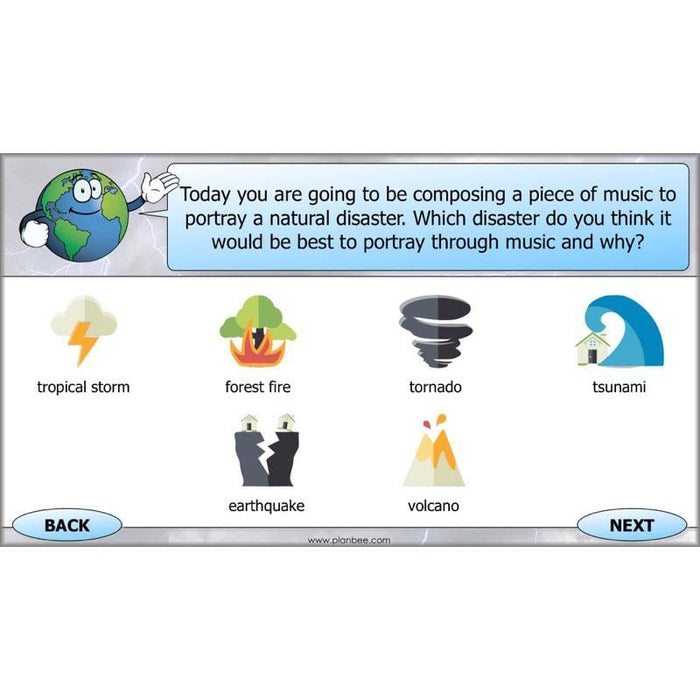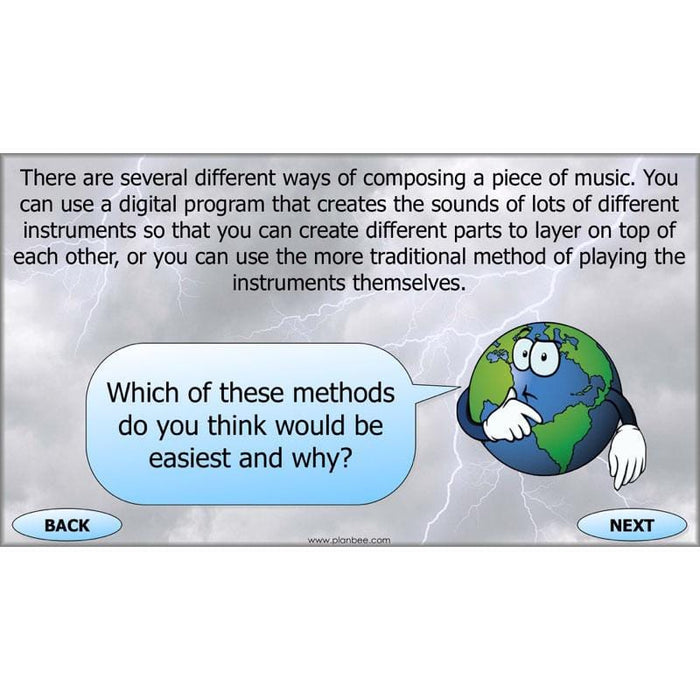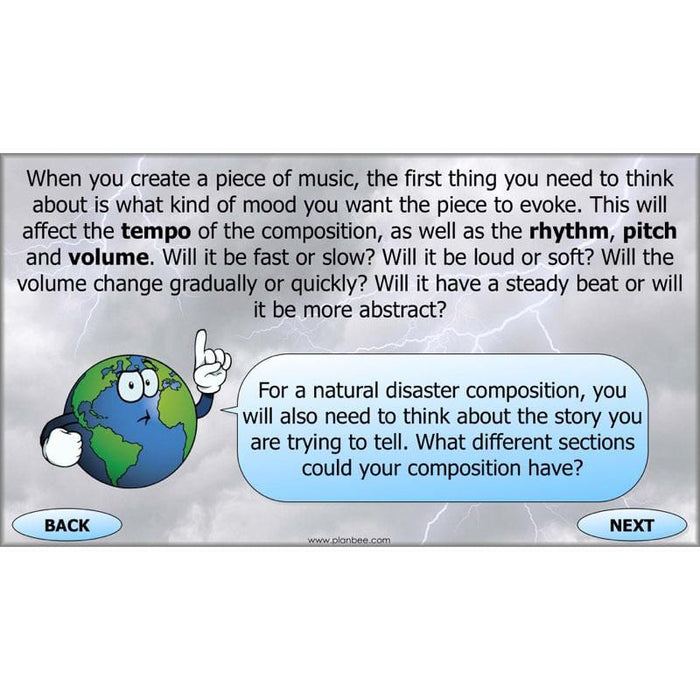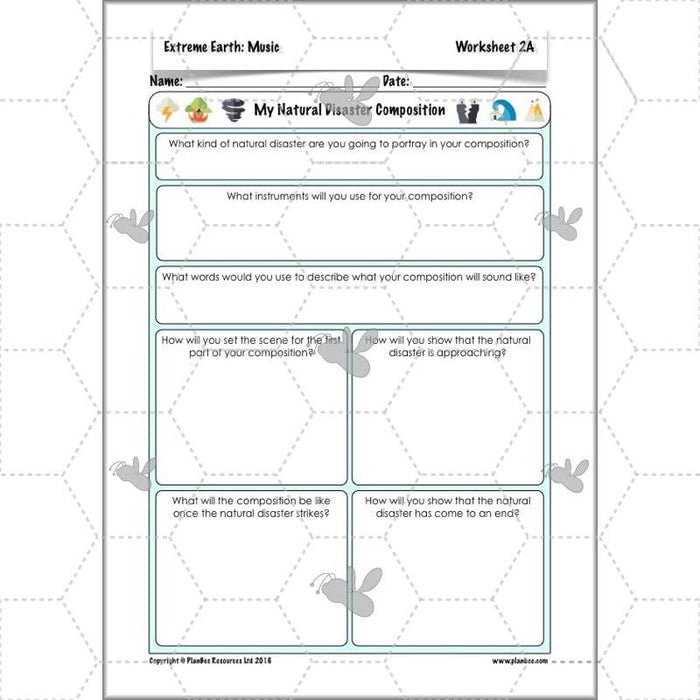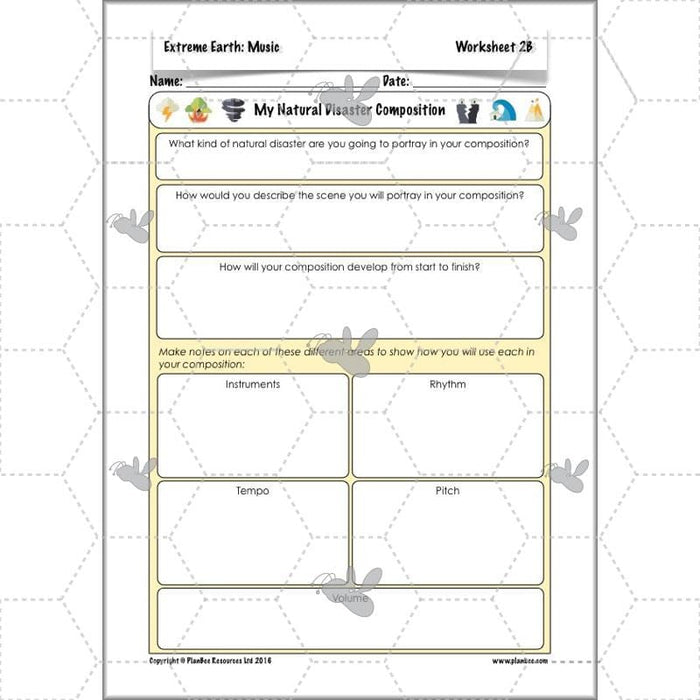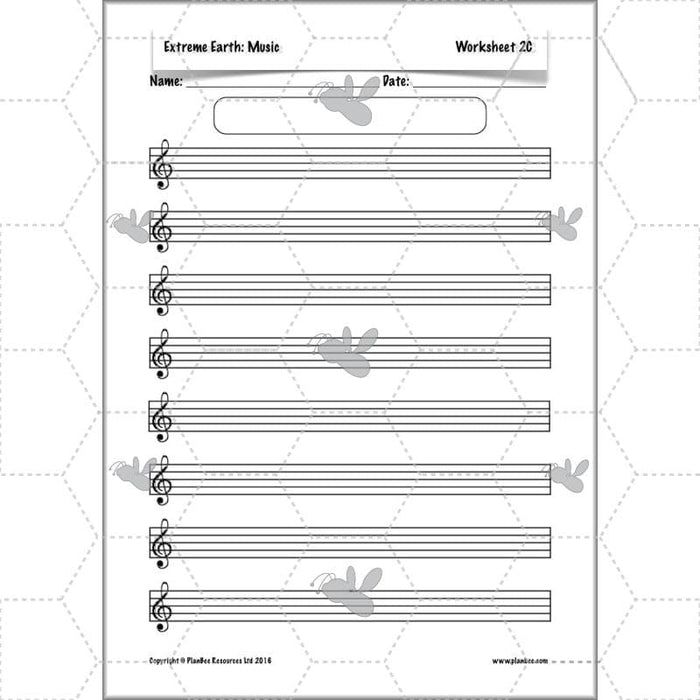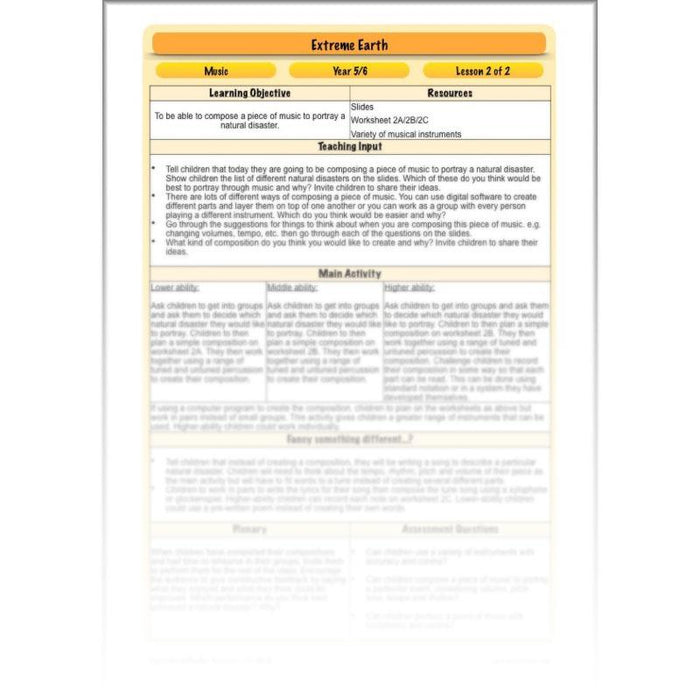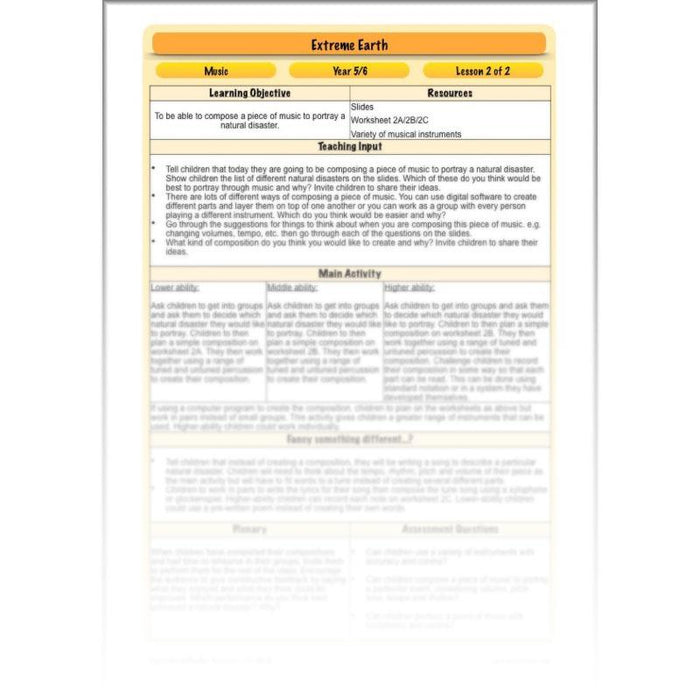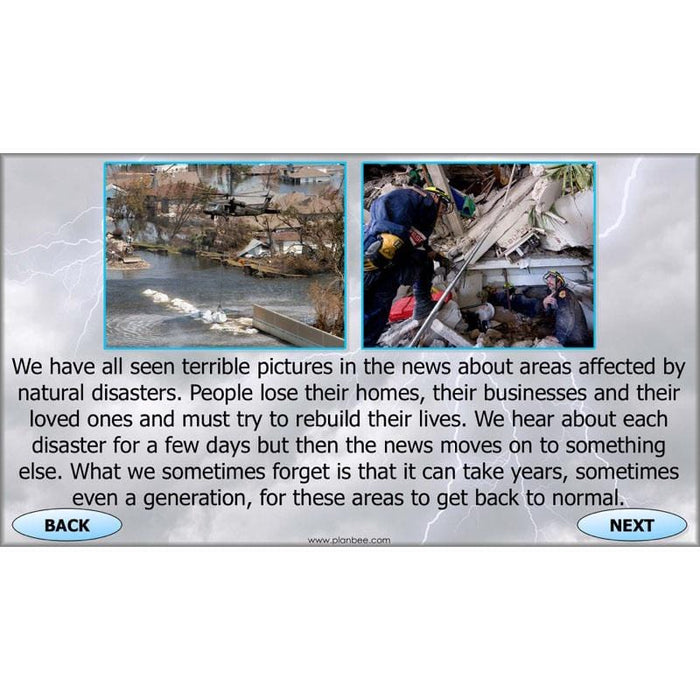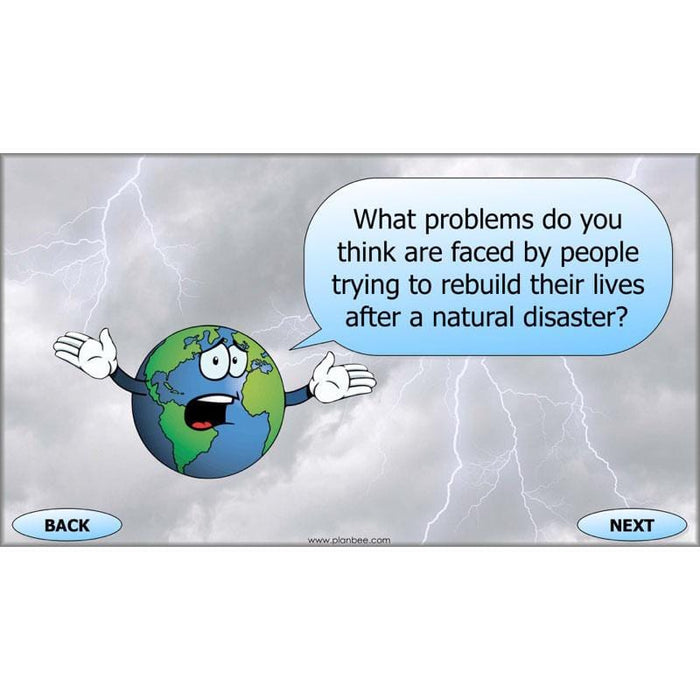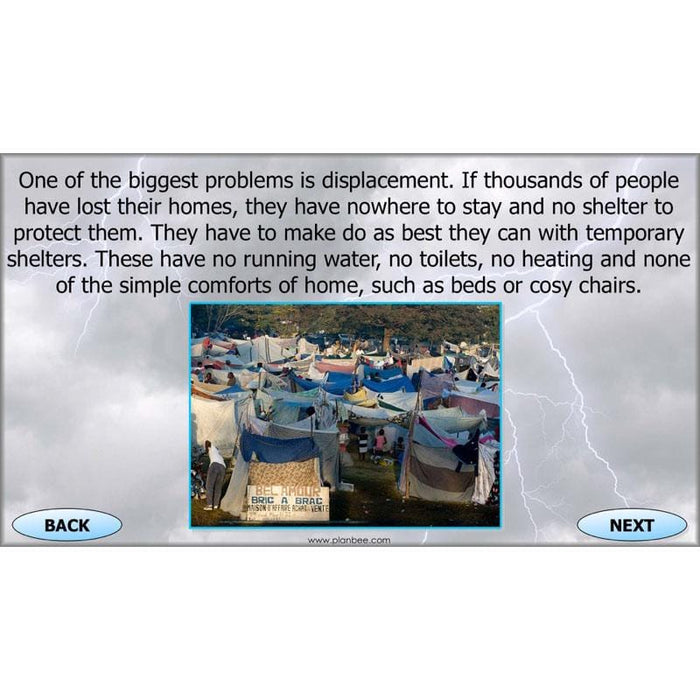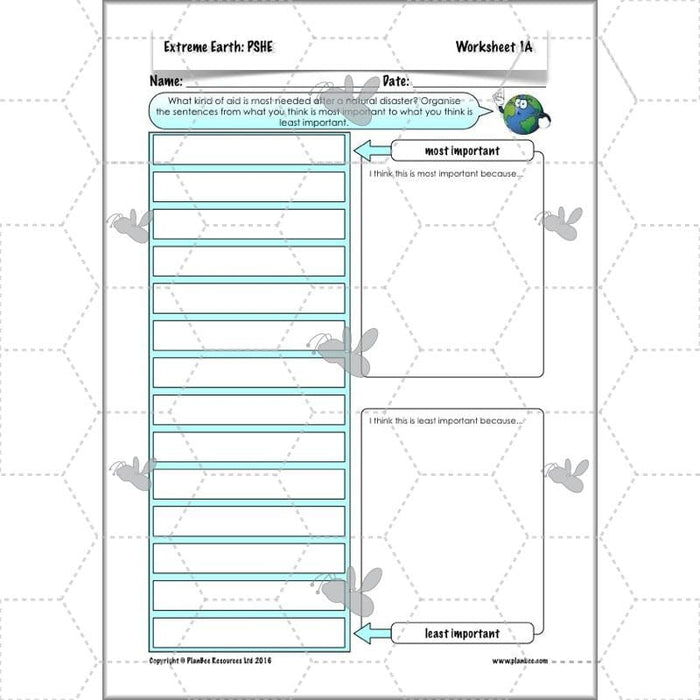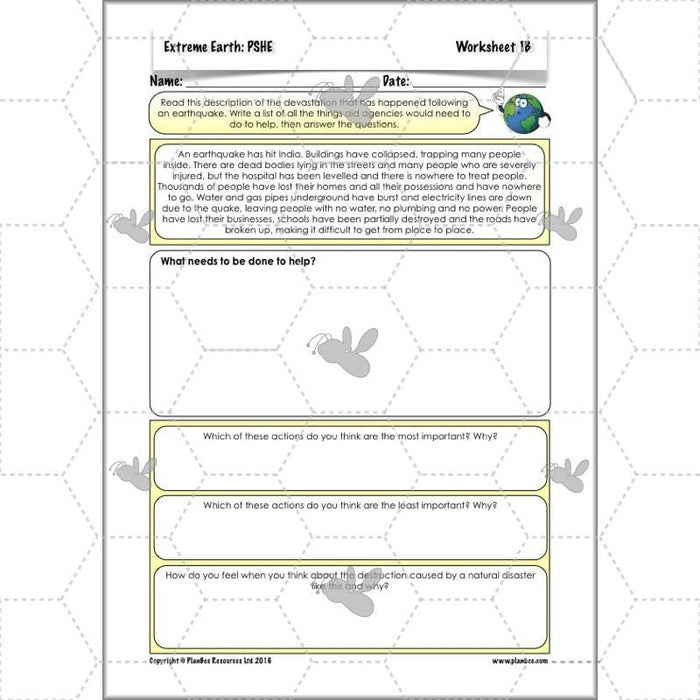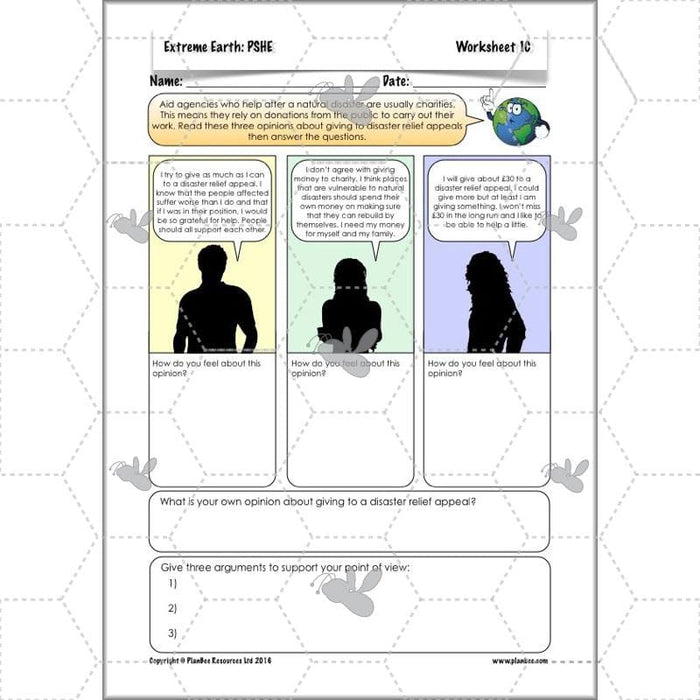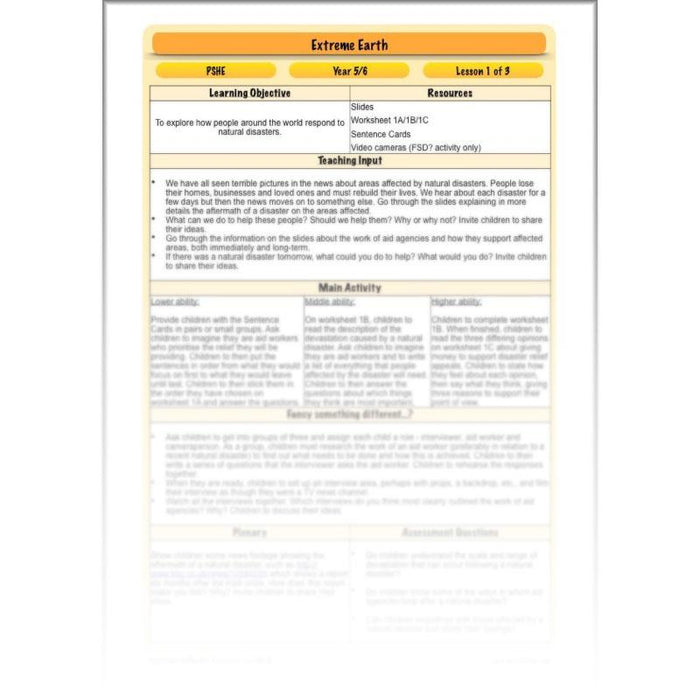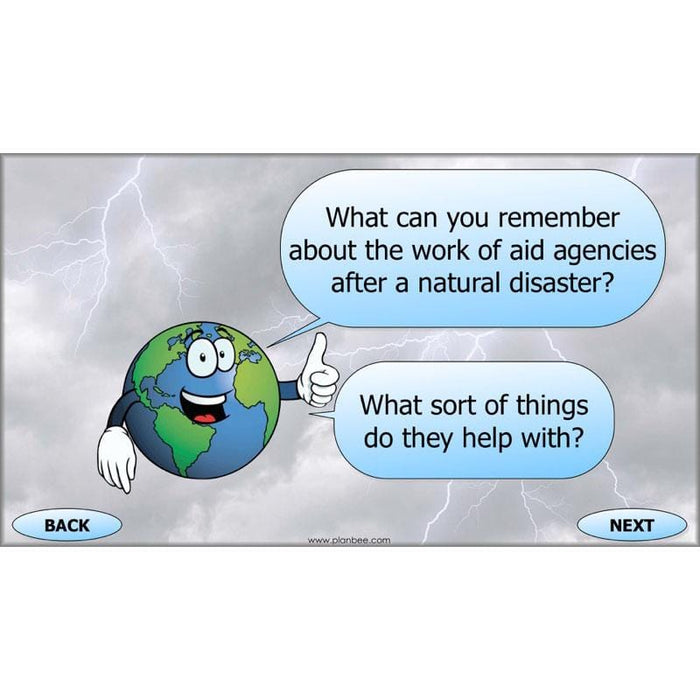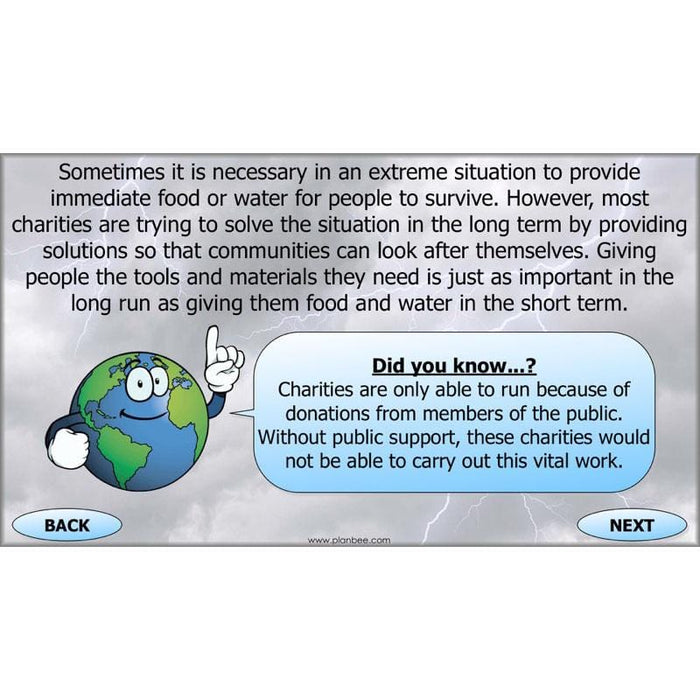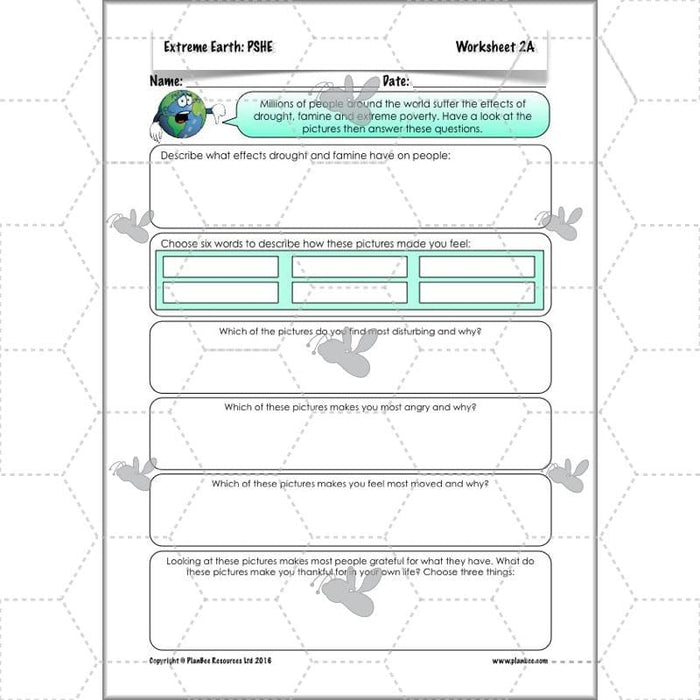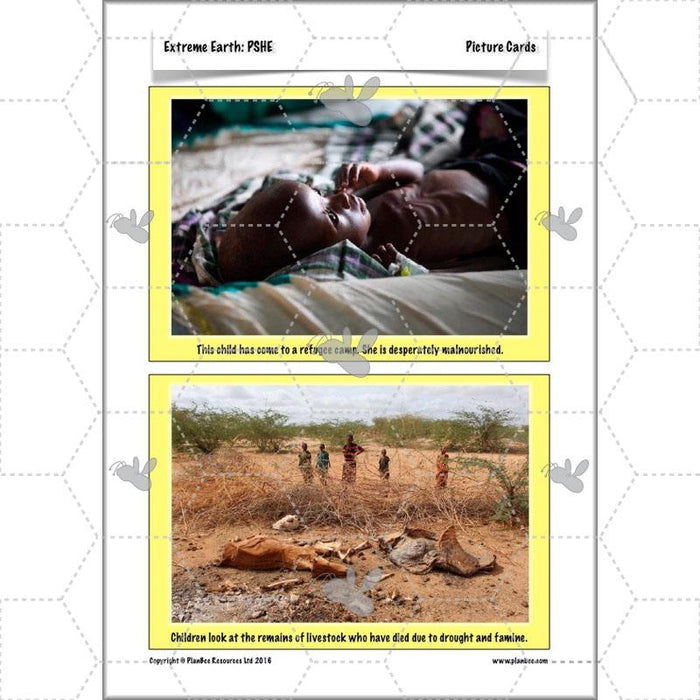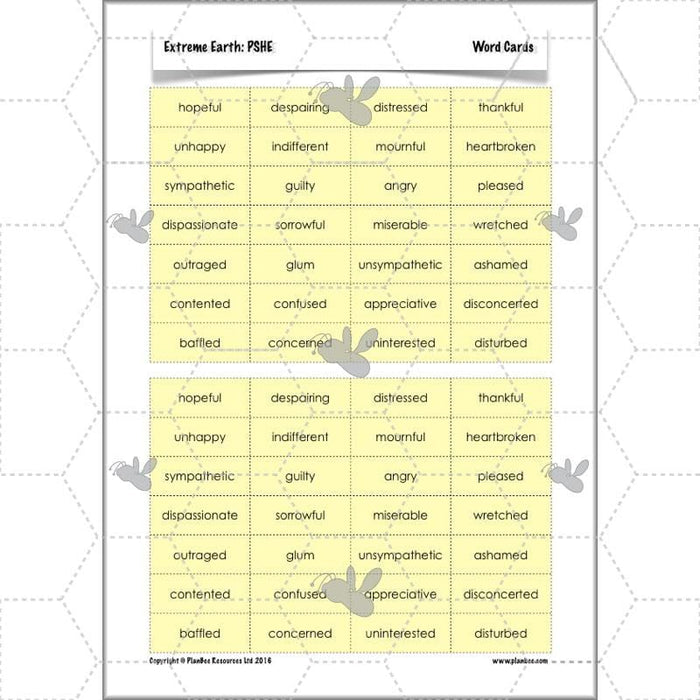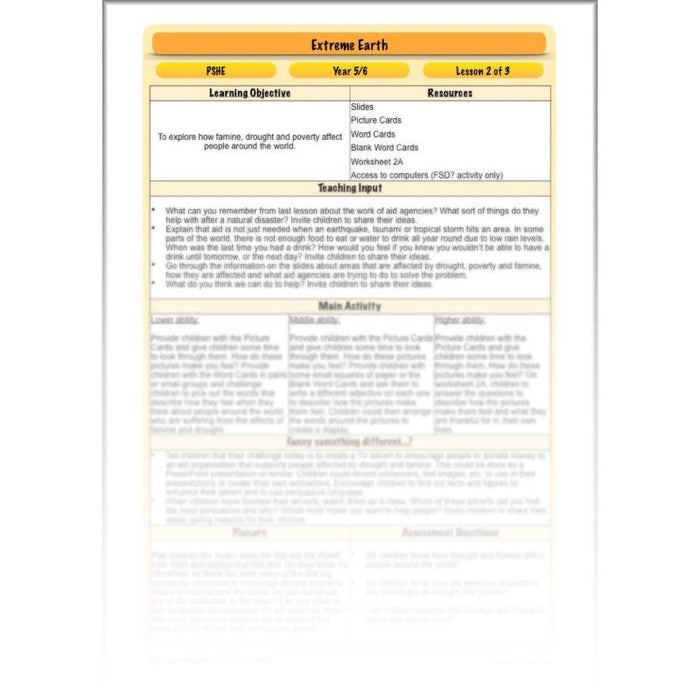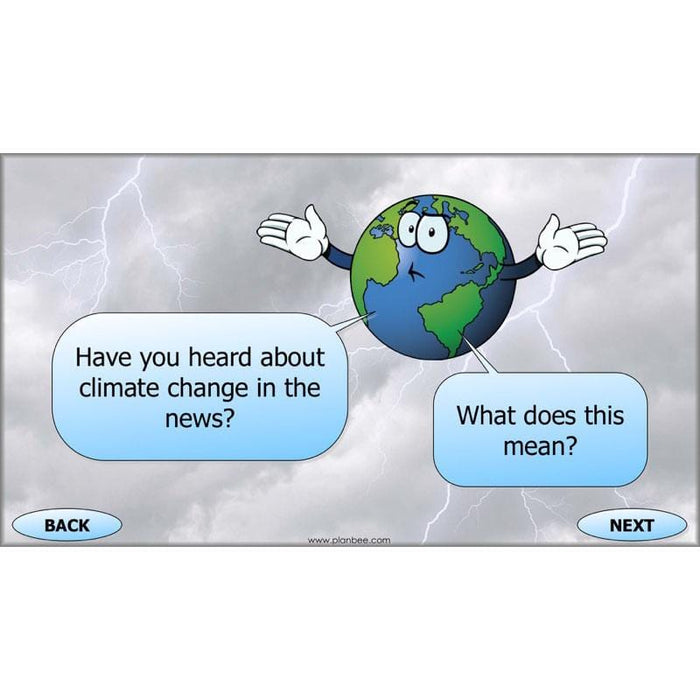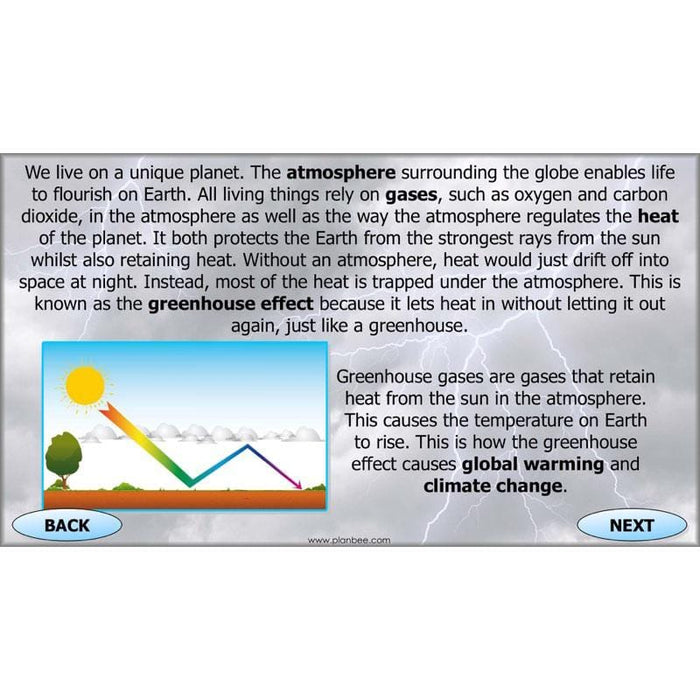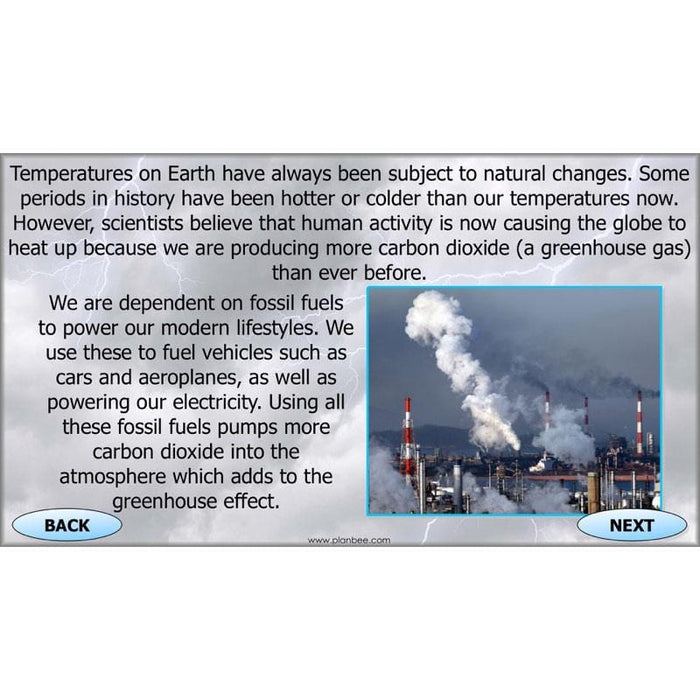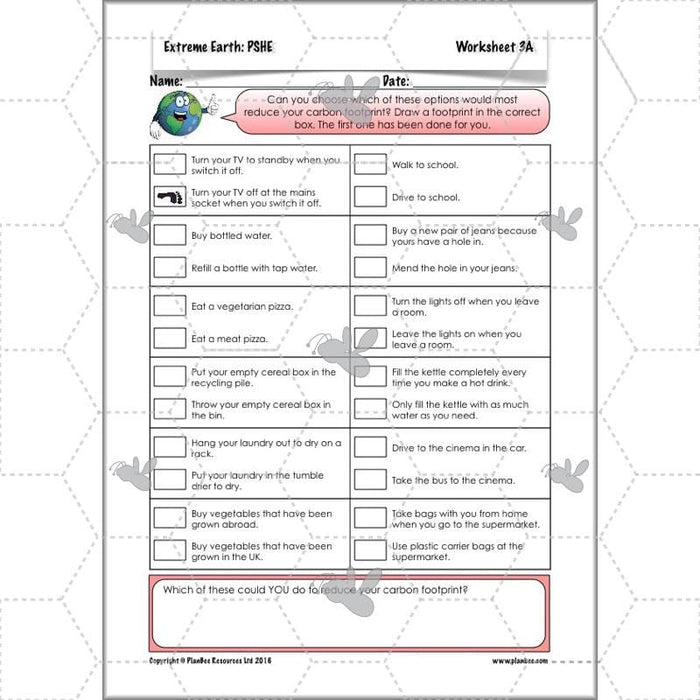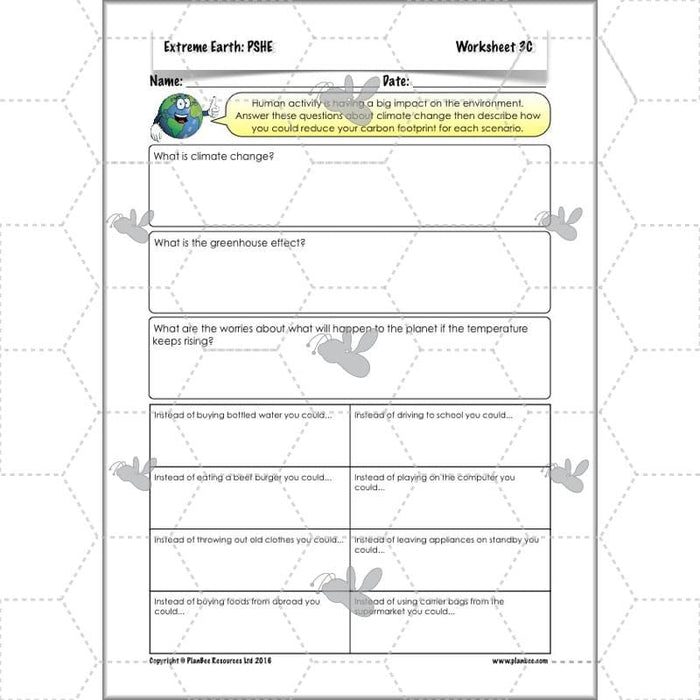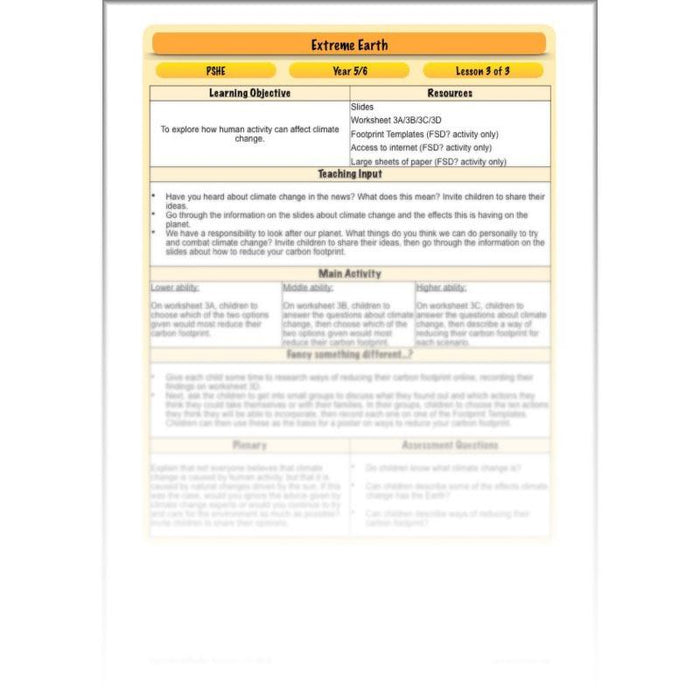#TheCompleteTopic16lessons
This natural disasters topic for KS2 contains everything you need to deliver these lessons, including detailed lesson plans, engaging slides for each and every lesson, differentiated activity ideas and a wide range of printable worksheets and other resources, such as picture cards, challenges, and much more. All you need to do is download, teach and watch as your class begin to look at the awesome world around them in a whole new light.
#AllARTLessonsinTopic
Looking for natural disasters art activities? Download these three Art lessons from our Extreme Earth topic to get your KS2 class exploring and producing some fantastic artwork relating to natural disasters and our extreme Earth. Create colourful twister pictures, explore and recreate 'The Great Wave' by Hokusai, and create sculptures of animals that live in the most extreme conditions on the planet.
These three natural disasters art activities come fully planned and ready to deliver to your Year 5 or Year 6 class. Each lesson contains a detailed lesson plan with differentiation included, a slideshow for the teaching input and a range of printable resources, including worksheets, picture cards, help sheets are much more! Perfect for even the most unartistic of primary teachers to deliver outstanding Art lessons!
#AllDTLessonsinTopic
Download these two natural disasters DT lessons as part of our KS2 Extreme Earth topic. Your Year 5 or Year 6 class can undertake two DT projects – one to design, make and evaluate a waterproof container to protect their belongings in case of a natural disaster, and the other to use design and technology to create an interactive info-box.
Both lessons come fully prepared and ready to teach. Each has an easy-to-follow lesson plan with differentiated activity ideas, a slideshow for the teaching input to explain and model the activities, and a range of printables resources, including worksheets, challenges and help sheets, to support children in their activities.
#AllGEOGRAPHYLessonsinTopic
Introduce your class to the wilder side of the world with this pack of six Extreme Earth KS2 Geography lessons! Your class will find out all about the Earth's extremes, from raging tropical storms to violent erupting volcanoes to terrifying towering tsunamis. They can also explore how these extremes affect people, communities and landscapes through a series of informative and thought-provoking lessons.
With detailed lesson plans, engaging slides, differentiated worksheets, challenges, pictures and many other helpful resources, this Extreme Earth KS2 planning pack is a great way to get your class to look at the world in which they live in a new awe-inspiring light. Teach on its own or as part of our complete Extreme Earth cross-curricular topic.
#AllMUSICLessonsinTopic
These two KS2 Music lessons are a fun and engaging way to get some Music learning into your Extreme Earth topic! During the first lesson, your class will use percussion to create a storm composition after listening to an original composition modelling an example of what they could produce. The second lesson gives your class free reign over a variety of instruments (or digital programmes) to create their own composition to portray a natural disaster.
Both lessons come complete with a detailed lesson plan, a slideshow for the teaching input, differentiated activity ideas, MP3 files and a range of printable resources.
#AllPSHELessonsinTopic
This set of three PSHE lessons will help your KS2 children explore the human side of natural disasters, climate change and what happens when people are hit by drought and famine. They will have the chance to explore how communities respond when a natural disaster hits, why people in developing countries need global support, and how humans are contributing to climate change (and what they can do to help).
Each of these three lessons is fully planned and ready to teach. They contain an easy-to-follow lesson plan with differentiated activities, a slideshow for the teaching input and a range of printable resources to support children in their independent learning activities. All you need to do is download the resources and you're ready to deliver engaging, thought-provoking PSHE lessons to your class.
#Lesson1ArtTheGreatWave
This Great Wave Art lesson for KS2 will give your Year 5/6 class the chance to explore and recreate this famous print by Japanese artist Hokusai. The included slideshow presentation for the teaching input starts by showing them 'The Great Wave off Kanagawa' and asking them questions about it to get them looking at it in more detail. It then goes on to explain what woodblock printing is and explore how Hokusai created this famous image. It also shows some helpful step-by-step photos for how children can create their own version of the Great Wave using card.
During their independent tasks, your class then have a go at recreating the Great Wave for themselves, either by using the method shown on the slides or by choosing their own method and medium.
What's included:
- Lesson plan
- Slides
- Activity ideas
- Picture card
- Worksheets
#Lesson2ArtTornadoArt
This Tornado Art KS2 lesson for Year 5 or Year 6 gets your class looking closely at tornadoes and the effects they have on the landscape before giving them the chance to create their own colourful twister tornado pictures, using line and shading to create a 3D illusion. There is also the option of creating a 3D tornado mobile by layering discs of coloured card. Either way, they can't fail to produce tornado art to be proud of!
This lesson comes fully planned and ready to teach. It includes a detailed lesson plan with differentiated activity ideas, a slideshow for the teaching input that includes helpful step-by-step photos to model their activities, and a set of printable resources to support them as they create their own tornado art.
What's included:
- Lesson plan
- Slides
- Activity ideas
- Worksheets
- Tornado template
- Help sheets
#Lesson3ArtExtremeAnimals
This lesson starts by thinking about the most extreme places in the world, such as deserts or polar regions. It then thinks about the animals that live there and how they have adapted to their extreme environment. This lesson teaches your class how to carve a lump of clay to create a sculpture of one of these amazing animals, as well as giving them the chance to find out about the specific adaptations of the animal.
What's included:
- Lesson plan
- Slides
- Activity ideas
- Differentiated worksheets
- Picture cards
- Challenge cards
#Lesson4DTWaterproofContainers
What would you most miss if all your possessions were destroyed by a natural disaster? This is the question that starts this lesson off as your class consider some of the items that they would like to keep safe in case of emergencies. They are then challenged to create a secure and waterproof bag or box to keep their precious items in. To do this, they will have to investigate which materials are waterproof and which aren't, how to make joins watertight and a host of other questions. They will then design, make and evaluate their own waterproof containers.
What's included:
- Lesson plan
- Slides
- Activity ideas
- Differentiated worksheets
#Lesson5DTInteractiveInfoBoxes
This creative lesson challenges your class to present some of the information they know about the Earth's extremes in the form of an interactive info-box. The slides will give them some ideas of how to incorporate interactive parts, such as bulbs that light up to highlight different areas on a map or strips of information that come out of 3D boxes. They can then let their imaginations take over as they design, make and evaluate their own info-box for a particular purpose.
What's included:
- Lesson plan
- Slides
- Activity ideas
- Differentiated worksheets
- Help sheet
- Challenge cards
#Lesson6GeographyExtremeClimates
This Extreme Climates KS2 Geography lesson starts by finding out exactly what a climate is before looking at some of the most extreme climates of the world. Your Year 5 or Year 6 class will learn where the hottest and coldest parts of the world are in relation to the equator and poles, as well as the location of some specific climates, such as the hottest, coldest, driest and wettest places on Earth.
During their independent learning activities, they can use the data and fact cards provided to find out more about extreme climates on Earth, answer questions and consolidate their understanding.
What's included:
- Lesson plan
- Slides
- Activity ideas
- Differentiated worksheets
- Fact cards
- Information cards
#Lesson7GeographyDrought
This drought lesson plan for KS2 children starts by looking at the water cycle and how it works, before going on to explore why some parts of the world get more water than others. It then looks at what a drought is, the effects of droughts and how drought affects different parts of the world.
This drought lesson planning pack comes fully prepared and ready to teach; it includes an easy-to-follow lesson plan, a slideshow for the teaching input and a range of printable resources to support children in their independent learning.
What's included:
- Lesson plan
- Slides
- Activity ideas
- Differentiated worksheets
- Information sheet
#Lesson8GeographyExtremeWeather
This Extreme Weather KS2 Geography lesson explores a variety of the most extreme weather phenomena on Earth, including lightning, floods, tropical storms (hurricanes, cyclones and typhoons), tornadoes and hail storms. Your Year 5 or Year 6 class will find out what causes these weather phenomena and become more familiar with why they occur.
This lesson is ready to teach and contains an easy-to-follow lesson plan, a slideshow for the teaching input, differentiated activity ideas and a range of printable resources to support children as they learn about extreme weather for themselves.
What's included:
- Lesson plan
- Slides
- Activity ideas
- Differentiated worksheets
- Information sheet
- Picture cards
#Lesson9GeographyEarthquakes
This Earthquakes KS2 Geography lesson for Year 5 & Year 6 will teach your class everything they need to know about earthquakes! As they move on from looking at natural disasters that are caused by weather, they will find out about plate tectonics and how moving plates cause earthquakes, as well as how areas around fault lines are most likely to be struck by an earthquake. They can then place various extreme earthquakes on a world map or investigate a particular earthquake and its effects on the people and landscape of the area.
This Earthquakes KS2 planning pack contains everything you need to teach this engaging lesson, including an easy-to-follow lesson plan, a slideshow for the teaching input, differentiated activity ideas and a range of printable resources.
What's included:
- Lesson plan
- Slides
- Activity ideas
- Differentiated worksheets
- Earthquake cards
- Earthquake zone map
- Plate tectonics map
- Challenge cards
- Extreme Earthquakes sheet
#Lesson10GeographyTsunamis
If you're teaching tsunamis to your Year 5 or Year 6 class then look no further! This ready-to-teach lesson explores what tsunamis are, how they are formed, and how and why the giant waves of a tsunami hot coastlines. There is also the opportunity to find out about the 2004 tsunami and why it was one of the most devastating in recent times.
With an easy-to-follow lesson plan, a slideshow for the teaching input, differentiated activity ideas and a range of printable resources, teaching tsunamis to your KS2 class has never been easier.
What's included:
- Lesson plan
- Slides
- Activity ideas
- Worksheets
- Sentence cards
#Lesson11GeographyVolcanoes
Download this Volcanoes lesson plan pack to teach your KS2 class what volcanoes are, how they are formed and what happens when they erupt. The included slideshow presentation for the teaching input will start by showing your class some fascinating photos of volcanoes, before going on to explain in further detail how volcanoes are formed, why they erupt and how eruptions affect the environment around the volcano.
Your Year 5 or Year 6 children can then express their understanding of volcanoes in a variety of ways, including writing a volcano poem. There is also the opportunity of creating their own erupting volcanoes using a few simple ingredients!
This Volcanoes lesson plan comes with everything you need to deliver the lesson...apart from the baking soda, vinegar and food colouring! All you need to do is download, teach and enjoy watching your class become fascinated with volcanoes.
What's included:
- Lesson plan
- Slides
- Activity ideas
- Differentiated worksheets
- Picture cards
- Volcano acrostic sheet
- Help sheet
#Lesson12MusicPercussionStorms
This lesson starts by challenging your class to think of as many different examples of percussion instruments as they can before going through some examples on the slides. They will then listen and respond to a composition entitled 'Boom!' which portrays a storm through digital sound-effects and various percussion instruments. Children can then work in groups to add their own percussion to the sound-effects background to create their own storm compositions.
What's included:
- Lesson plan
- Slides
- Activity ideas
- Boom' full audio and backing tracks
- Worksheets
#Lesson13MusicDisastrousCompositions
This lesson challenges your class to work in groups to create their own compositions to portray a particular natural disaster, such as an earthquake or a tsunami. The groups will need to think about the kind of sounds different instruments produce and which would be most appropriate, as well as considering the rhythm, volume, pitch, tempo and tone of their composition. They can then either create their composition using digital software or by play instruments.
What's included:
- Lesson plan
- Slides
- Activity ideas
- Differentiated worksheets
#Lesson14PSHEDisasterRelief
This challenging and thought-provoking lesson explores the aftermath of natural disasters and the difficulties faced by those affected, such as having no home, a lack of food and water, insufficient medical care and other factors, as well as the emotional hardship faced by survivors. Your class will then consider whether we should try and help people affected and how we could do this, before looking at the work undertaken by aid agencies in the years following a disaster.
What's included:
- Lesson plan
- Slides
- Activity ideas
- Differentiated worksheets
- Sentence cards
#Lesson15PSHECrisisRelief
This challenging lesson explores the effects of famine and drought in developing countries. Your KS2 children will think about the effects of drought and famine on people and communities, and look at some heart-wrenching images of some of these effects. They will find out some interesting and eye-opening facts and figures before looking at how charities are aiming to end this extreme issue. The questions for your class are 'Can you help?' and, more importantly, 'Will you help?'.
What's included:
- Lesson plan
- Slides
- Activity ideas
- Picture cards
- Word cards
- Worksheet
#Lesson16PSHECarbonFootprint
This Carbon Footprint lesson for KS2 children teaches your class about the greenhouse effect and the gases that contribute to climate change, before looking at the practical steps that can be taken to reduce our carbon footprints and slow the rate of climate change.
This Carbon Footprint lesson pack comes ready to download and teach – it contains an easy-to-follow lesson plan, a slideshow for the teaching input, differentiated activity ideas and a range of printable resources to support children in their independent learning tasks.
What's included:
- Lesson plan
- Slides
- Activity ideas
- Differentiated worksheets
- Footprint templates
Free Overview (Medium-Term Plan)
Download a free overview to support your teaching of this scheme of work.
Free Assessment Grid
Download a free, editable assessment grid to support your teaching of this scheme of work.
Curriculum Objectives covered
Art Objectives:
- KS2 - to improve their mastery of art and design techniques, including drawing with a range of materials
- KS2 - to improve their mastery of art and design techniques, including painting with a range of materials
- KS2 - to improve their mastery of art and design techniques, including sculpture with a range of materials
- KS2 - about great artists in history
DT Objectives:
- KS2 - use research and develop design criteria to inform the design of innovative, functional, appealing products that are fit for purpose, aimed at particular individuals or groups
- KS2 - generate, develop, model and communicate their ideas through discussion, annotated sketches, cross-sectional and exploded diagrams, prototypes, pattern pieces and computer-aided design
- KS2 - select from and use a wider range of tools and equipment to perform practical tasks [for example, cutting, shaping, joining and finishing], accurately
- KS2 - understand and use mechanical systems in their products [for example, gears, pulleys, cams, levers and linkages]
- KS2 - understand and use electrical systems in their products [for example, series circuits incorporating switches, bulbs, buzzers and motors]
- KS2 - select from and use a wider range of materials and components, including construction materials, textiles and ingredients, according to their functional properties and aesthetic qualities
- KS2 - evaluate their ideas and products against their own design criteria and consider the views of others to improve their work
Geography Objectives:
- KS2 - identify the position and significance of latitude, longitude, Equator, Northern Hemisphere, Southern Hemisphere, the Tropics of Cancer and Capricorn, Arctic and Antarctic Circle, the Prime/Greenwich Meridian and time zones (including day and night)
- KS2 - describe and understand key aspects of physical geography, including: climate zones, biomes and vegetation belts, rivers, mountains, volcanoes and earthquakes, and the water cycle
- KS2 - use maps, atlases, globes and digital/computer mapping to locate countries and describe features studied
Music Objectives:
- KS2 - play and perform in solo and ensemble contexts, using their voices and playing musical instruments with increasing accuracy, fluency, control and expression
- KS2 - improvise and compose music for a range of purposes using the inter-related dimensions of music
- KS2 - use and understand staff and other musical notations
